Forums
- Forums
- Axis And Allies Forum
- General Discussion
- Aviation News
Aviation News
Post a reply
- Go to Next topic
- Go to Welcome
- Go to Introduce Yourself
- Go to General Discussion
- Go to Screenshots, Images and Videos
- Go to Off topic
- Go to Works in Progress
- Go to Skinning Tips / Tutorials
- Go to Skin Requests
- Go to IJAAF Library
- Go to Luftwaffe Library
- Go to RAF Library
- Go to USAAF / USN Library
- Go to Misc Library
- Go to The Ops Room
- Go to Made in Germany
- Go to Campaigns and Missions
- Go to Works in Progress
- Go to Juri's Air-Raid Shelter
- Go to Campaigns and Missions
- Go to Works in Progress
- Go to Skinpacks
- Go to External Projects Discussion
- Go to Books & Resources
-
 Main AdminINDIAN OCEAN (March 27, 2017) An MV-22B Osprey, assigned to the Ridge Runners of Marine Medium Tiltrotor Squadron (VMM) 163, lands on the flight deck of the amphibious assault ship USS Makin Island (LHD
Main AdminINDIAN OCEAN (March 27, 2017) An MV-22B Osprey, assigned to the Ridge Runners of Marine Medium Tiltrotor Squadron (VMM) 163, lands on the flight deck of the amphibious assault ship USS Makin Island (LHD . Makin Island, the flagship for the Makin Island Amphibious Ready Group, with the embarked 11th Marine Expeditionary Unit, is operating in the Indo-Asia-Pacific region to enhance amphibious capability with regional partners and to serve as a ready-response force for any type of contingency. (U.S. Navy photo by Mass Communication Specialist 3rd Class Asher Allen)
. Makin Island, the flagship for the Makin Island Amphibious Ready Group, with the embarked 11th Marine Expeditionary Unit, is operating in the Indo-Asia-Pacific region to enhance amphibious capability with regional partners and to serve as a ready-response force for any type of contingency. (U.S. Navy photo by Mass Communication Specialist 3rd Class Asher Allen) 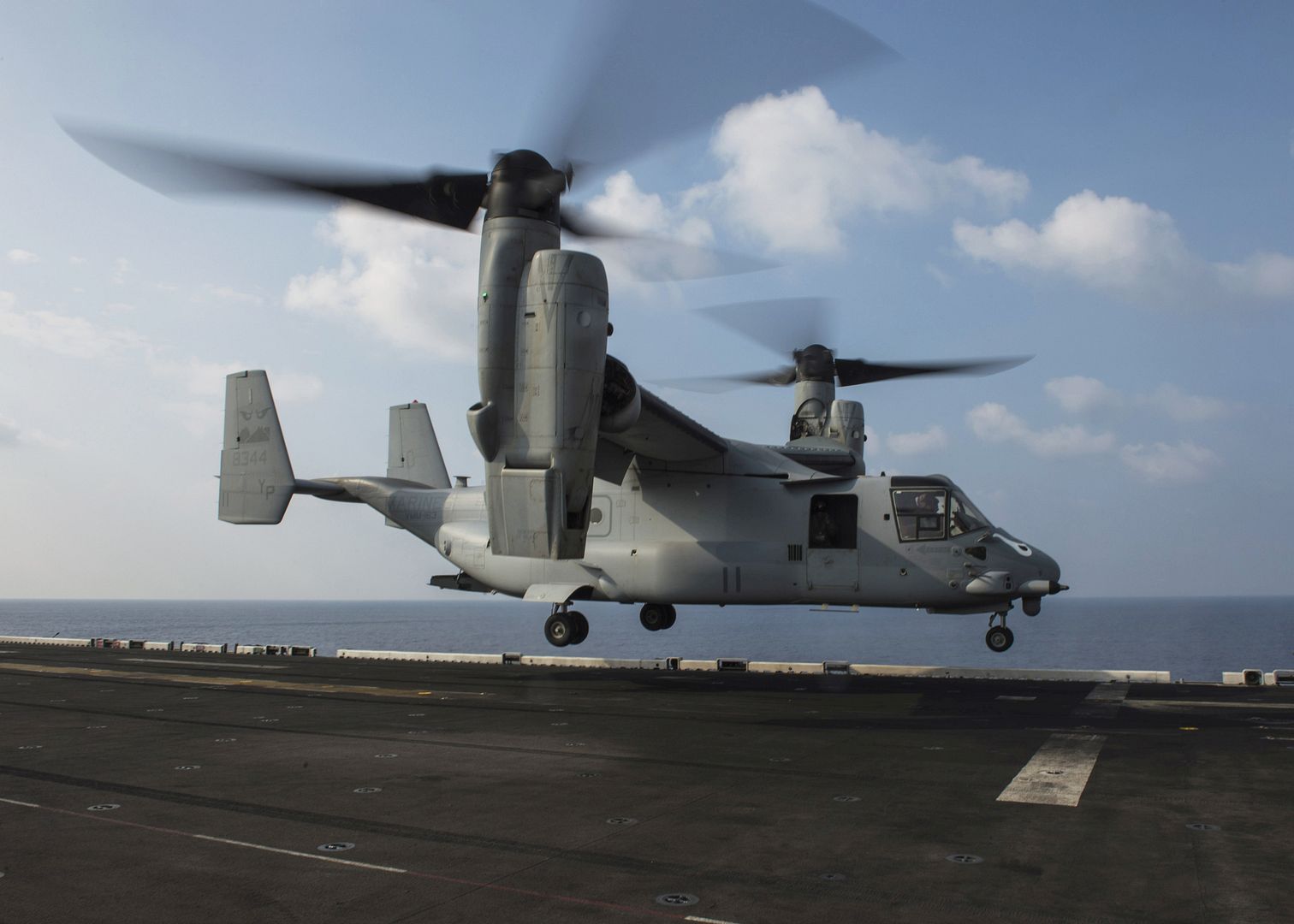
Maj. Joshua Higgins, 122nd Expeditionary Fighter Squadron pilot, conducts a pre-flight inspection on a F-15C Eagle at Leeuwarden Air Base, Netherlands, March 28, 2017. The 122nd Expeditionary Fighter Squadron, comprised of Louisiana and Florida Air National Guard aircraft, will conduct training alongside NATO allies to strengthen interoperability and demonstrate U.S. commitment to the security and stability of Europe. (U.S. Air Force photo by Staff Sgt. Jonathan Snyder)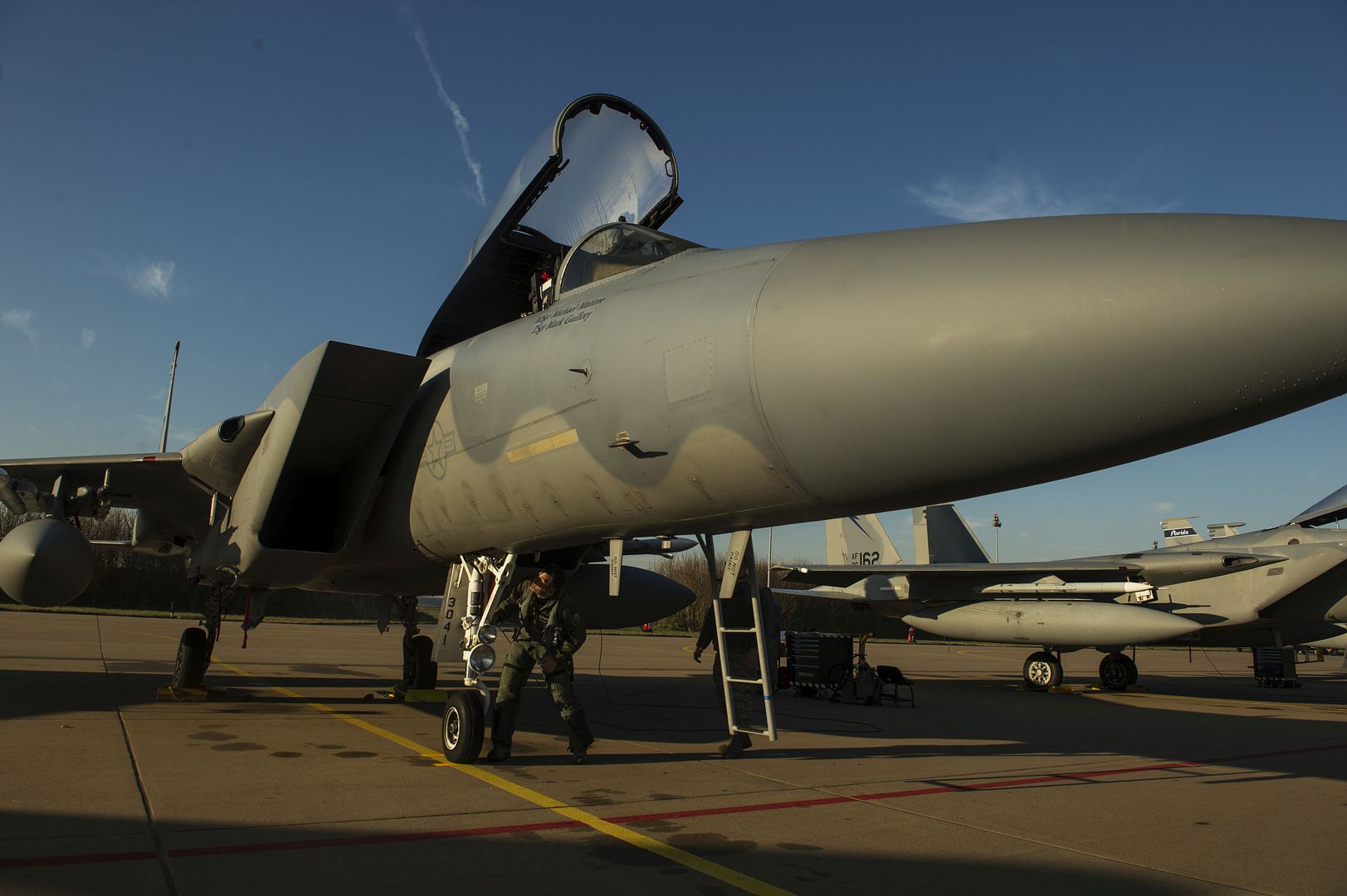
The 122nd Expeditionary Fighter Squadron, comprised of Louisiana and Florida Air National Guard members, arrive to Europe to participate as part of a Theater Security Package at Leeuwarden Air Base, Netherlands, March 28, 2017. While in country, the 122nd EFS will also particpate in Frisian Flag, one of Europe?s largest aerial warfare exercises. For two weeks, fighter aircraft from different countries will carry out various training missions with the focus on international cooperation, international leadership and precision. (U.S. Air Force photo by Staff Sgt. Jonathan Snyder)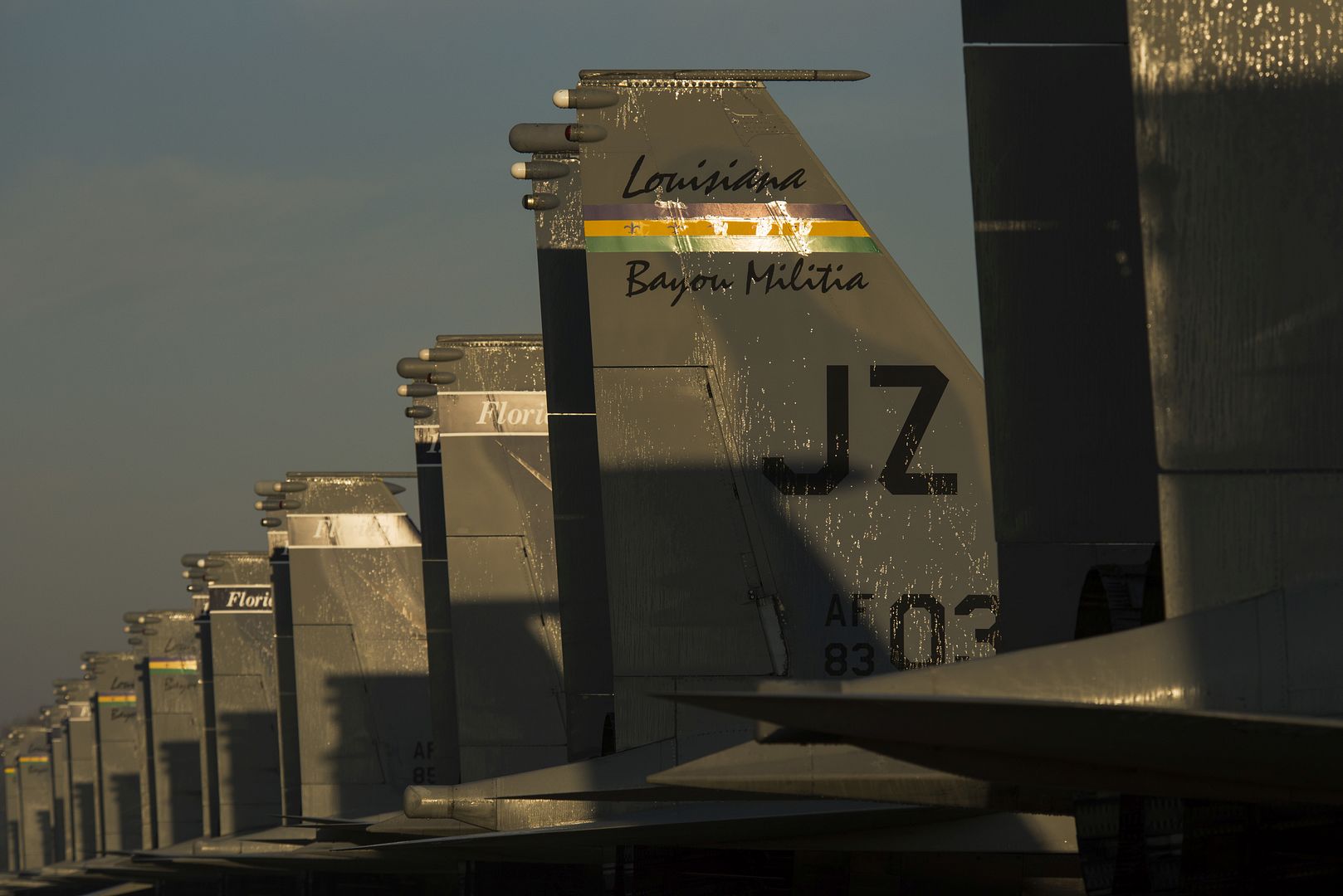
A U.S. Air Force F-15 assigned to the 44th Fighter Squadron from Kadena Air Base, Japan, taxis past Republic of Singapore air force maintainers after returning from a sortie during exercise Cope Tiger 17 at Korat Royal Thai Air Force Base, Thailand, March 27, 2017. The annual multilateral exercise, which involves a combined total of 76 aircraft and 43 air defense assets, is aimed at improving combined combat readiness and interoperability between the Republic of Singapore air force, Royal Thai air force, and U.S. Air Force, while concurrently enhancing the three nations' military relations. (U.S. Air Force photo by Staff Sgt. Kamaile Chan)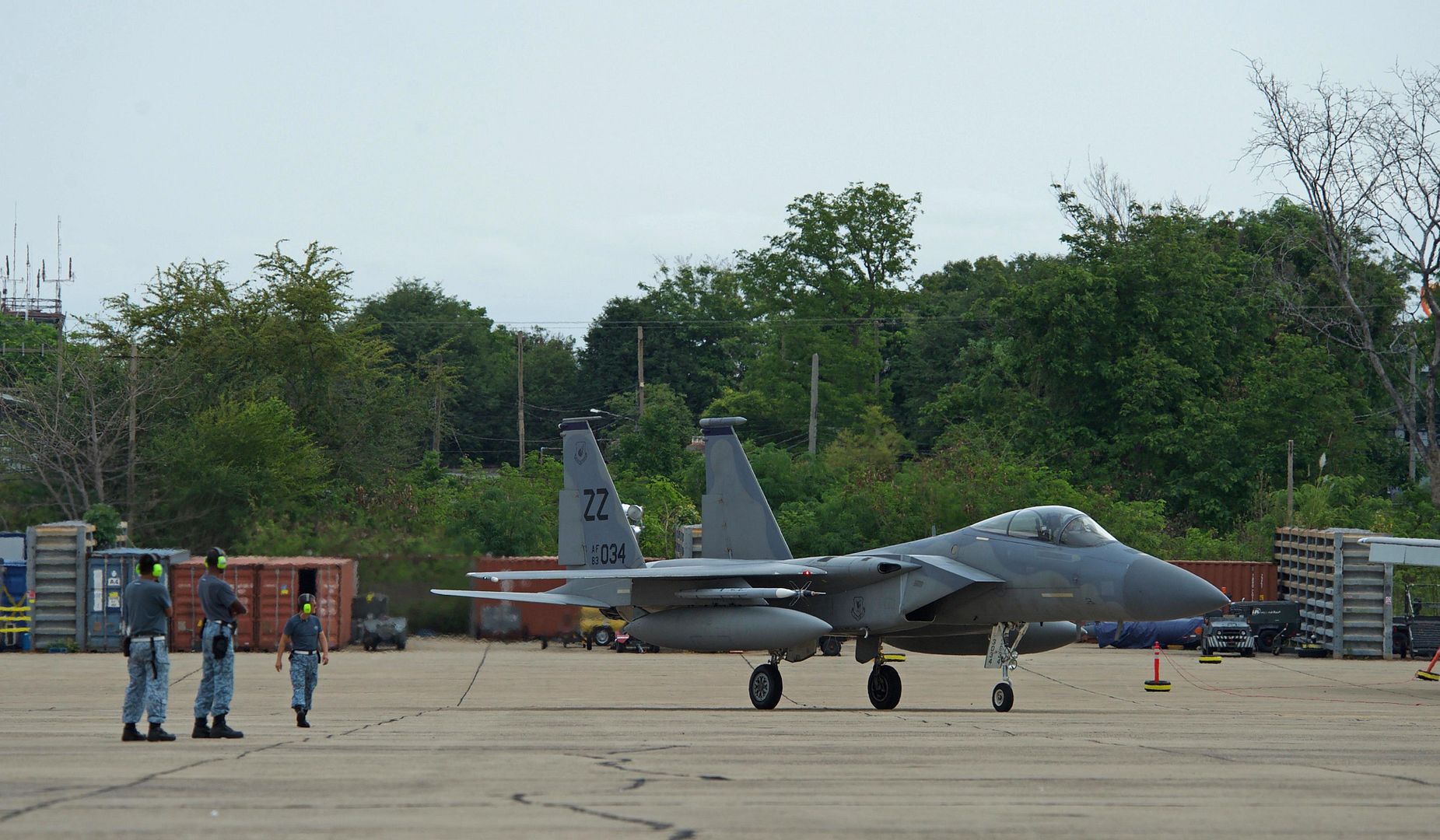
WRIGHT-PATTERSON AIR FORCE BASE, Ohio (AFNS) -- Robotic technology developed through the Air Force Small Business Innovation Research program will soon make the process of restoring specialized coatings on F-22 Raptor engine inlets more efficient for aircraft maintenance personnel during depot maintenance at the Ogden Air Logistics Complex, located at Hill Air Force Base, Utah.
The initiative has been a team effort, led by engineers from the Air Force Research Laboratory and the Air Force Life Cycle Management Center?s F-22 System Program Office both here at Wright-Patterson AFB and Hill AFB.
Aerobotix, a small business located in Madison, Alabama, was selected as the SBIR Phase II winner for the project. The company specializes in providing turn-key robotic systems for aerospace, military, NASA, and general industrial applications, while providing a range of solutions for robotic and automated coating needs.
The robotics project has three goals: reducing the number of hours aircraft maintainers are required to work in confined spaces while wearing full personal protective equipment, improve consistency and overall quality of the coatings applied, and to reduce the overall hours required to restore the inlets for the lifecycle of the aircraft, said Colin Allen, an AFLCMC F-22 structures and system safety engineer at Hill AFB.
As part of the $1.5 million SBIR contract, Aerobotix developed the robotic system, a complex multi-axis system with a long carbon fiber arm to reach deep into the engine inlet ducts.
The AFLCMC F-22 System Program Office at Hill AFB is in charge of managing the F-22 fleet from both an engineering and logistics perspective and is the lead agency for this effort.
?We?re at a position within our F-22 fleet where we are restoring the intakes of the fleet here at the Hill AFB depot facility,? Allen said.
Currently, this is a manual process where maintainers have to don a Tyvek suit and respirator as required PPE in order to crawl into the intakes and recoat manually.
?It?s not an easy process. It?s kind of an awkward position to be in for a lengthy amount of time where the environment is actually considered a confined space here at Hill, so you need another person watching the person manually restoring the intakes,? Allen said.
The ergonomics issues involved present a less than ideal situation for the depot maintainers to be in all day so one of the goals of the program is to reduce the amount of time that a maintainer is exposed to that environment, Allen added.
?The depot F-22 maintainer?s workload is challenging and this project will help speed up that restoration process and ultimately the throughput of the depot. The number of F-22s to go through the restoration process on a yearly basis will be based on mission requirements and depot availability, but the objective remains to get the aircraft back into the warfighter?s hands as quickly as possible,? Allen said.
?The actual removal of coatings from the F-22 inlets remains a manual process where maintainers go inside the intakes and strip the coatings using hand tools,? said Tech. Sgt. Justin Daywalt, the low observable/structures integrated support manager for the F-22 System Program Office at Hill AFB.
The coatings removal process is manual and an automated process has not yet been qualified.
For Phase three of the SBIR process, AFLCMC has partnered with the Small Business Office at Hill AFB to procure Aerobotix robots for three of the bays at Hill AFB.
?We?ve gone through a validation verification of several of these booths by using the robots to coat one of our trainer aircraft ? a ground-based aircraft that the air battle damage repair group here loaned us for the purposes of our program. It?s actually a representative of a production intake so we can go through the full gamut of things that we need to do for production aircraft as far as bringing the aircraft in, jacking it up, locating it, positioning the robots and actually physically applying the coatings we need to restore the intakes,? said Allen.
The next step is to receive and analyze test results of the robot sprays, followed by depot personnel being trained to use the robots by Aerobotix personnel, Allen said. Based off that, the engineering group will get together and decide when to push forward with a full-production aircraft in the depot for the intake coating restoration operation.
?From the engineering perspective, we like what we see. There are some issues we?re working through, but any project has its issues that need to be smoothed out,? he said.
?In addition to the ergonomics issues maintainers must face when restoring coatings inside an F-22 intake, another important factor that comes into play are the tolerance requirements of the application process,? Strunk said.
?We will see consistency from jet to jet. With manual application involving different technicians applying the coatings through a spray gun, it?s very hard to (meet the application requirements) the first time. With a robot, we?re expecting to meet those requirements more consistently, reducing the additional time needed to manually work in the inlets. The second part of that are the hazards associated with the materials we?re applying. Once we remove an individual out of the intake, they?re not going to be exposed to those materials to the same degree that we are currently with manual application,? Strunk added.
?If there?s any concern right now that we have on the production side of it, it?s just our schedule. We?ve gotten very good at what we do with this intake coating restoration process over the last three years or so. Now that we?re introducing the robots, we want to still be able to see the schedule maintain at the same rate and get better. However, there?s always that concern of being able to meet that tempo utilizing a new piece of equipment. Ultimately, I think we will see some hiccups, but in the end, it will be all for the better,? he said.
The project has included the use of computing power using modeling and simulation to accomplish the objectives for the depot F-22 maintenance team, said Carl Lombard, a materials research engineer with the Electronics & Sensors Branch, Manufacturing & Industrial Technologies Division, Materials & Manufacturing Directorate at AFRL.
?This enables the maintainers to avoid collision with the inlets and the plane while developing the fastest paths to correctly apply the coatings,? he said.
?We?re producing fifth generation aircraft maintenance capabilities for fifth-generation fighters,? said Allen.
According to the project team, Aerobotix personnel have utilized their experience with the process to make the transition to F-22 robotic intake coating restoration as smooth as possible for all involved.
?One of the reasons Aerobotix was chosen is because they?re certainly an industry leader as far as aircraft robotics goes in their use of robotics for aircraft maintenance on the F-22 and F-35 (Lightning II) programs. They have certainly been more than accommodating, to not only the AFRL and the SPO?s needs, but also the depot?s needs, as far as maintaining their schedule and reevaluating when they need to be in the depot doing work and during the validation process,? said Allen.
The exact amount of time saved by using the robots for F-22 intake coating restoration is not yet known.
?There?s definitely going to be areas where we shorten the time span. However, we are going to have to change our processes quite drastically and that may cause some additional time that we are not normally used to. Once we get technicians in there working with it, they?re going to find those ways to make things faster,? Strunk said.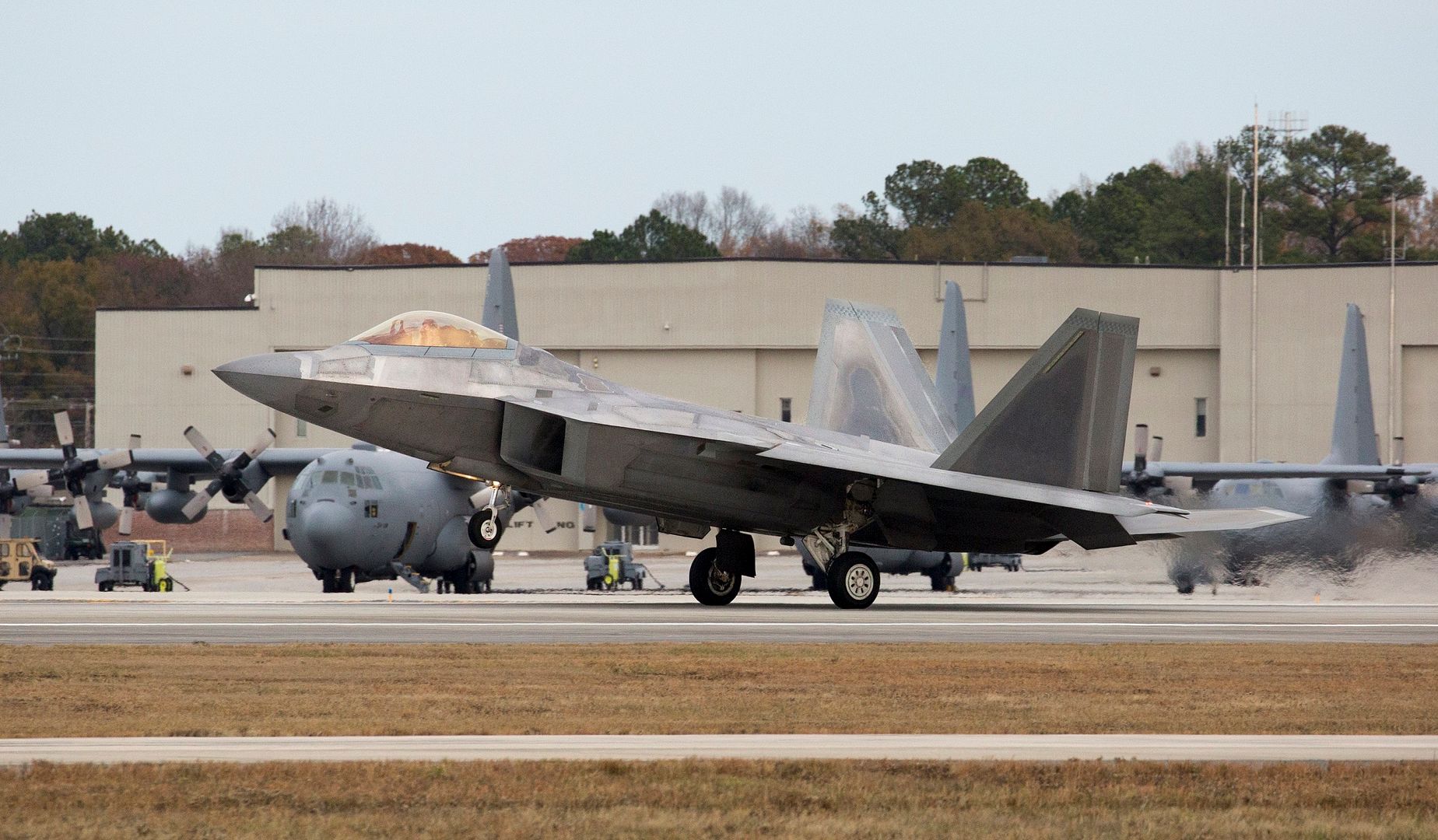
STRAIT OF MALACCA (March 27, 2017)
An MQ-8B Fire Scout unmanned helicopter approaches the littoral combat ship USS Coronado (LCS 4) for landing. The ship is on a rotational deployment in U.S. 7th Fleet area of responsibility. Coronado is a fast and agile warship tailor-made to patrol the region's littorals and work hull-to-hull with partner navies, providing 7th Fleet with the flexible capabilities it needs now and in the future. U.S. Navy photo by Mass Communication Specialist 2nd Class Amy M. Ressler (Released)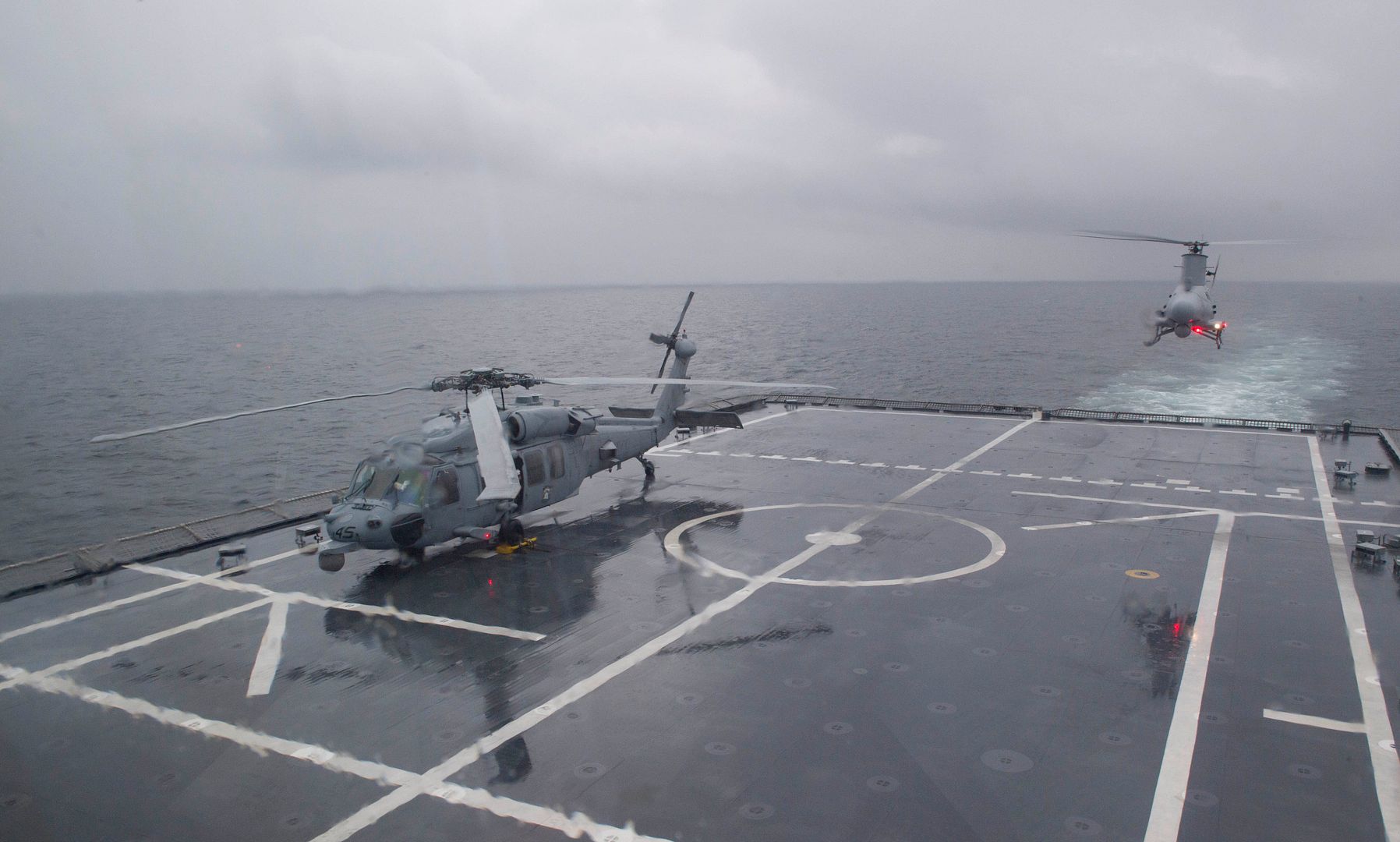
SEATTLE, March 28, 2017 ? Boeing (NYSE: BA) announced today it has officially launched its global network of Boeing Training Providers to support its Pilot Development Program.
The flight schools ? Avion Training, part of Avion Group in the Netherlands, International Airline Training Academy (IATA) in Napa, CA, and SAA International (SAA), a subsidiary of Velocity Education, in San Diego, CA ? were subject to a rigorous review process before receiving final acceptance to be part of the Boeing Pilot Development Program network.
?With these three top-tier schools, we are removing the burden of identifying and vetting potential schools for our customers,? said David Wright, Boeing Pilot Development Program director. ?Customers can trust that Boeing has done the leg work so they can focus on what they do best ? flying people and cargo around the world.?
In order to be considered for the training network, schools must prove a good safety culture, have a good industry reputation and have airline and crew-focused training.
?Boeing?s Pilot Development Program is built to provide customers with qualified first officers that seamlessly integrate into airline operations,? Wright said. ?These three schools each bring unique characteristics to the industry to help fill the future pilot demand of Boeing?s diverse customer base.?
Boeing will provide routine checks to ensure cadets are receiving Boeing?s high level of training.
The Boeing Pilot Development Program is a fully integrated solution that takes cadet pilots through initial screening, English training, ab initio (basic classroom and flight instruction), jet bridge and type rating training at Boeing Training Providers and Boeing training campuses around the world to ensure an efficient, consistent and effective pipeline for airlines to secure qualified first officers.
The 2016 Pilot and Technician Outlook projects a need for 617,000 new pilots in the next 20 years. That equates to a need for nearly 31,000 new commercial airline pilots and more than 33,000 new maintenance technicians globally each year.
In its seventh year, the Pilot and Technician Outlook is a respected industry study which forecasts the 20 year demand for crews to support the world?s growing commercial airplane fleet.
-
 Main AdminA C-130J Super Hercules approaches Yokota Air Base, Japan, March 29, 2017. This is the second C-130J delivered from Lockheed Martin, less than a month after the first was delivered March 6th. Yokota serves as the primary Western Pacific airlift hub for U.S. Air Force peacetime and contingency operations. Missions included tactical air land, airdrop, aeromedical evacuation, special operations and distinguished visitor airlift. (U.S. Air Force photo by Yasuo Osakabe)
Main AdminA C-130J Super Hercules approaches Yokota Air Base, Japan, March 29, 2017. This is the second C-130J delivered from Lockheed Martin, less than a month after the first was delivered March 6th. Yokota serves as the primary Western Pacific airlift hub for U.S. Air Force peacetime and contingency operations. Missions included tactical air land, airdrop, aeromedical evacuation, special operations and distinguished visitor airlift. (U.S. Air Force photo by Yasuo Osakabe)
LUKE AIR FORCE BASE, Ariz. -- Lt. Col. Robert Miller, 62nd Fighter Squadron pilot, lands the 10,000th F-35 Lightning II training sortie at Luke Air Force Base, Ariz March 29, 2017. The 5,000th training sortie was flown in May 2015 marking more than 5,000 sorties flown in 10 months as Luke continues to build the future of air power. (U.S. Air Force photo by Airman 1st Class Alexander Cook)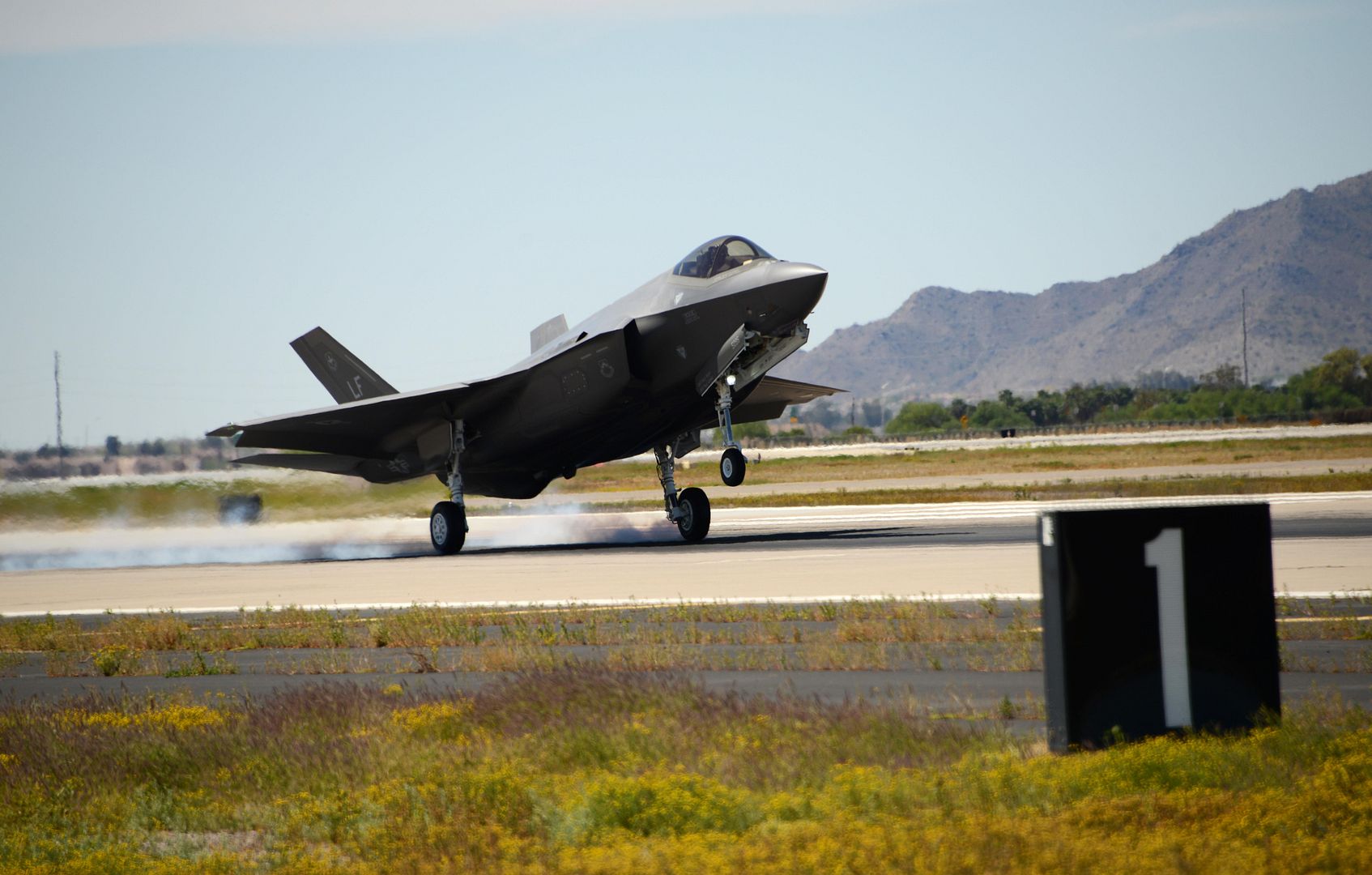
S?o Jos? dos Campos ? Brazil, March 29, 2017 ? Ten months after the first flight of the E190-E2, today Embraer performed the inaugural flight of another member of the E2 family, ahead of schedule. This Wednesday, the E195-E2, the largest aircraft of the family?and the most efficient aircraft in the single aisle jet market?took off for the first time. The flight, originally scheduled for the second half of the year, happened just three weeks after the roll out.
?With a unique level of efficiency, the E195-E2 offers our airline partners the opportunity to develop new markets with greater profitability without compromising unit cost competitiveness. It?s a profit-hunting machine,? said John Slattery, President & CEO, Embraer Commercial Aviation.
With a 20% lower cost per trip and a cost per seat similar to larger aircraft, the E195-E2 is the ideal aircraft for regional business growth as well as to complement existing low-cost business plans and mainline fleets. The airplane will save up to 24% in fuel and 20% in maintenance costs per seat, when compared to the current E195.
The E195-E2 departed at 11:22 a.m., local time, from Embraer?s facility in S?o Jos? dos Campos, Brazil, and flew for two hours, beginning the aircraft certification campaign. Staffed by pilots M?rcio Brizola Jord?o and Jos? Willi Pirk, as well as flight engineers Celso Braga de Mendon?a and Mario Ito, the flight crew evaluated aircraft performance, flight quality and systems behavior, such as autopilot, fly-by-wire in direct mode, and the landing gear retraction.
?With 1.4 meters longer wingspan than the E190-E2, the E195-E2 becomes the aircraft with the highest aspect ratio among single-aisle jets thus increasing fuel efficiency? explained Lu?s Carlos Affonso, COO, Embraer Commercial Aviation. ?We also applied experience from over 17 million hours of flight and 100 jet airline customers to develop the E195-E2 with the most competitive life cycle cost in the industry.?
Embraer will use two aircraft for the E195-E2 certification campaign. The first prototype will be used for the aerodynamic and performance tests. The second prototype, which will also make its inaugural flight by the end of this year, will be used for the validation of maintenance tasks and of the interior. The E195-E2 will entry into service in the first half of 2019, with Azul Brazilian Airlines.
The E195-E2 has three additional rows of seats, when compared to the current generation E195, and it can be configured with 120 seats in two classes of service, or up to 146 in a single class. The aircraft also has a significant increase in range of 450 nautical miles, which allows trips of up to 2,450 nautical miles.
The E2 has accrued 275 firm orders, being 90 for the E195-E2, in addition to 415 options, purchase rights, and letters-of-intent, totaling 690 commitments from airline customers and leasing companies. Currently, the E-Jets are operating with about 70 customers in 50 countries, being the global leader in the segment of aircraft with up to 130 seats, with over 50% market share.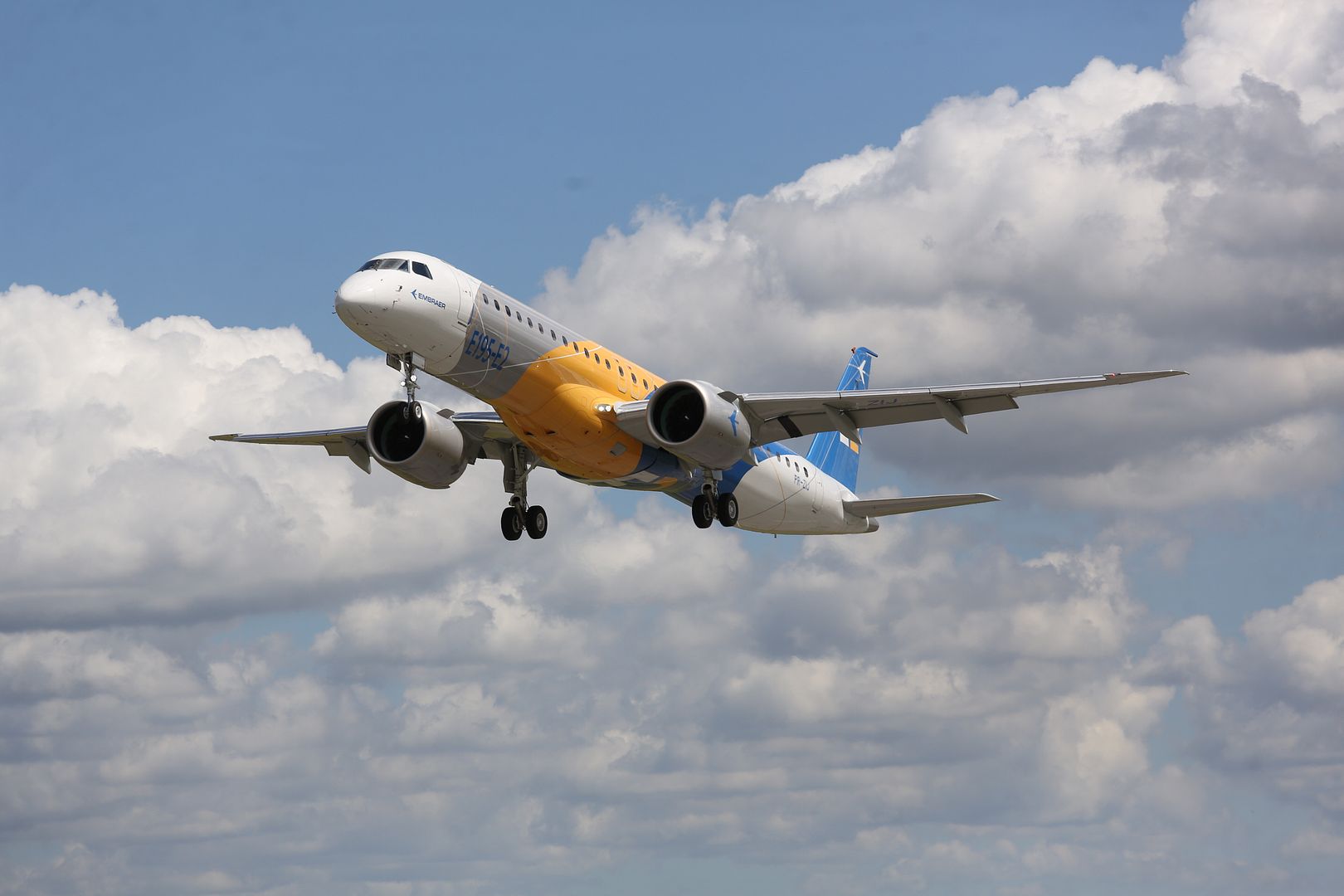
March 29, 2017 Montr?al Business Aircraft, Press Release
Bombardier Business Aircraft confirmed today that its Global 7000 aircraft flight test program continues to progress well, with two Global 7000 flight test vehicles currently flying. Both flight test vehicles have been demonstrating excellent reliability accumulating flight hours at a steady pace, as the aircraft prepares to enter into service in the second half of 2018.
?Our flight test vehicles continue to show a high degree of maturity in testing, dispatching twice daily in many cases,? said Michel Ouellette, Senior Vice President, Global 7000 and Global 8000 Program. ?We have strong momentum in the program right now, and we are on track for entry into service in 2018. The Global 7000 Flight Test Vehicle 1 (FTV1) completed its maiden flight in November 2016. It was transferred to the Bombardier Flight Testing Center in Wichita ahead of schedule and, to date, has achieved approximately 200 flight hours.?
The flight test crew has also successfully demonstrated FTV1?s performance capabilities by opening the aircraft?s flight test envelope to Mach 0.995. Not only is the Global 7000 aircraft the largest business jet to reach this high speed, achieving it only 5 months after the start of the flight test program is an unprecedented milestone. In addition to its impressive speed and 7,400 nm (13,705 km) range capability, the Global 7000 aircraft offers unparalleled comfort and an exceptionally smooth ride, made possible by the aircraft?s advanced wing.
The second Global 7000 Flight Test Vehicle (FTV2), which completed its initial flight in Toronto on March 4 and shortly after also transferred to Bombardier?s Flight Testing Centre in Wichita, is dedicated to testing aircraft propulsion, electrical and mechanical systems.
About the Global 7000 aircraft
The Global 7000 business jet is uniquely designed from the inside out to deliver a cabin experience like no other. The industry?s only business jet with four living spaces and a dedicated crew rest area, the Global 7000 aircraft offers unparalleled comfort and interior design flexibility that will set the standard for a new category of large business jets.
The advanced wing design on the Global 7000 aircraft was conceived to optimize speed, range and control for an exceptionally smooth ride, steep approach capability and short field performance. With access to airports such as London City, the Global 7000 gets passengers closer to their final destination more efficiently.
The Global 7000 business aircraft will connect London to Singapore, Dubai to New York City, or Sydney to San Francisco non-stop,* and feature a maximum operating speed of Mach 0.925.* Passengers flying on the Global 7000 business jet will experience an impressive long-range capability of 7,400 NM (13,705 km) at Mach 0.85 with eight passengers.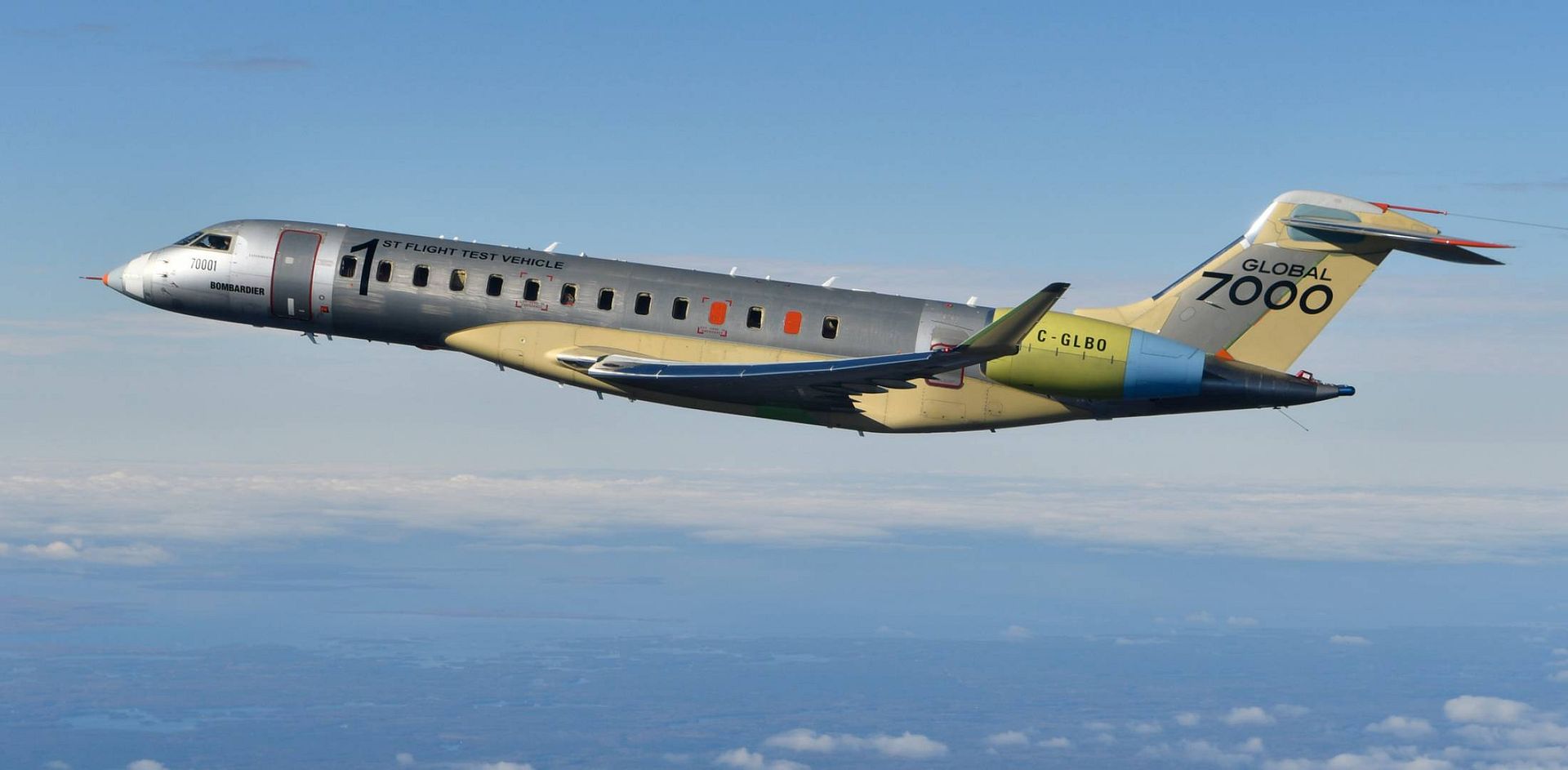
Atlantic Trident 2017 Teaser
-
 Main AdminA C-5M Super Galaxy assigned to the 436th Airlift Wing out of Dover Air Force Base, Del., sits on the flightline March 29, 2017, at Robins Air Force Base, Ga. The aircraft was at Robins undergoing programmed depot maintenance, a process designed to ensure aircraft are safe and mission ready. (U.S. Air Force photo by Jamal D. Sutter)
Main AdminA C-5M Super Galaxy assigned to the 436th Airlift Wing out of Dover Air Force Base, Del., sits on the flightline March 29, 2017, at Robins Air Force Base, Ga. The aircraft was at Robins undergoing programmed depot maintenance, a process designed to ensure aircraft are safe and mission ready. (U.S. Air Force photo by Jamal D. Sutter)
An Afghan A-29 Super Tucano flies over Afghanistan, March 22, 2017, during a training mission before the beginning of the 2017 fighting season. Advisors from Train, Advise, Assist Command-Air, as part of Resolute Support Mission, work in tandem with their Afghan counterparts to foster working relationships and fortify confidence in the mission. (U.S. Air Force photo by Senior Airman Jordan Castelan)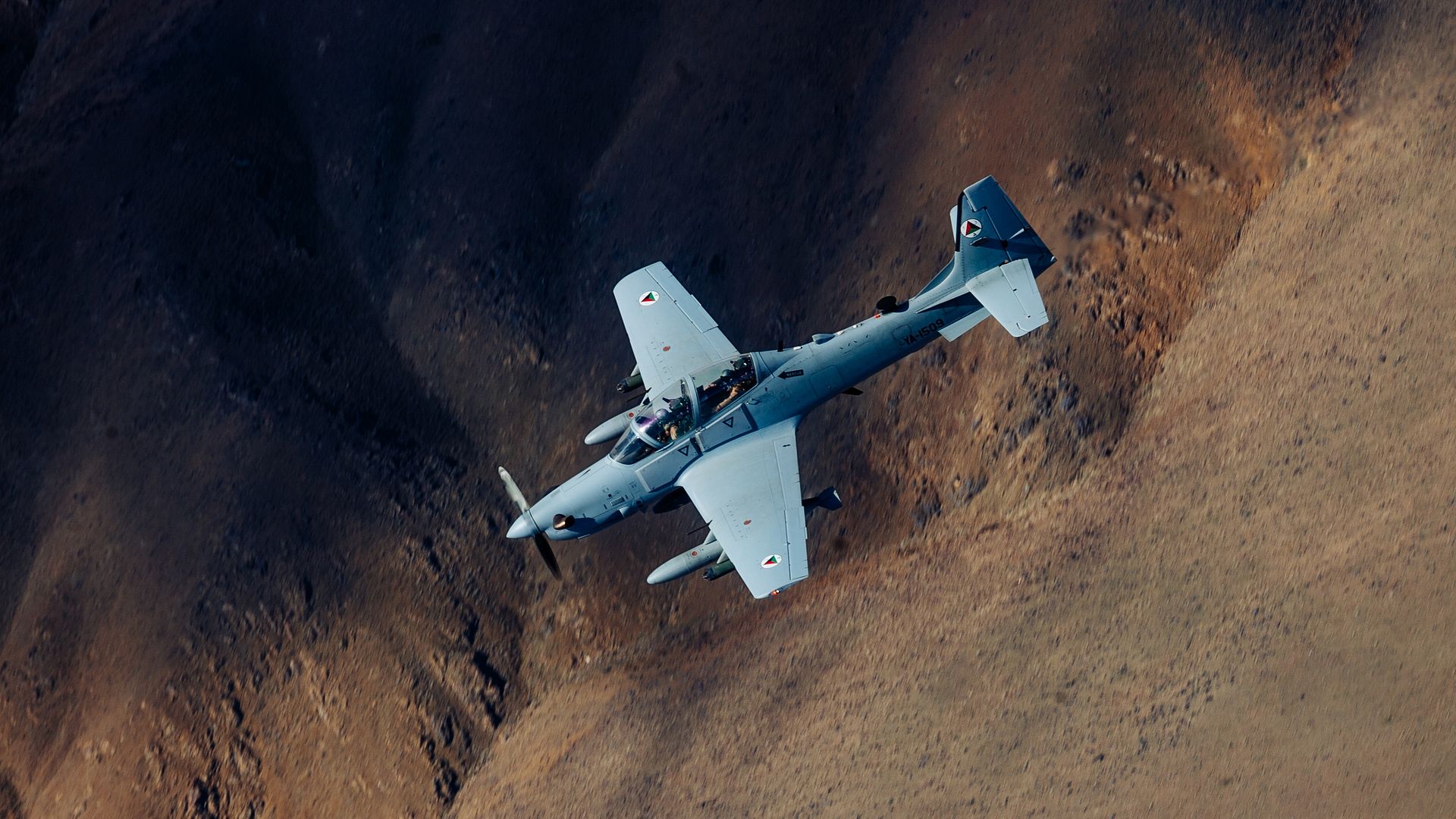
Two Afghan A-29 Super Tucanos flies over Afghanistan, March 22, 2017, during a training mission before the beginning of the 2017 fighting season. Advisors from Train, Advise, Assist Command-Air, as part of Resolute Support Mission, work in tandem with their Afghan counterparts to foster working relationships and fortify confidence in the mission. (U.S. Air Force photo by Senior Airman Jordan Castelan)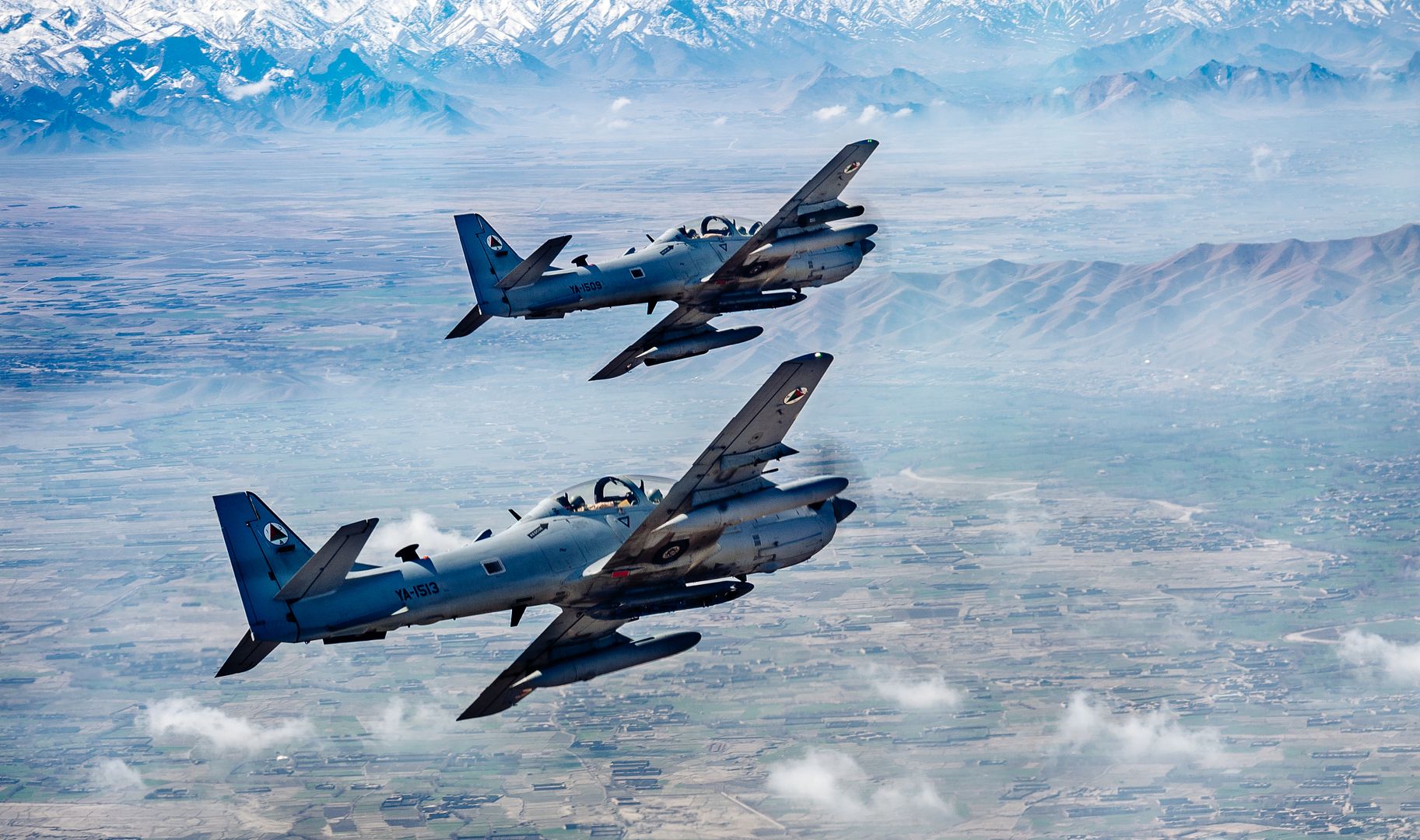
INDIAN OCEAN (March 29, 2017) An MH-60S Seahawk, assigned to the Blackjacks of Helicopter Sea Combat Squadron (HSC) 21, flies a search and rescue route as a precaution during flight operations aboard the amphibious assault ship USS Makin Island (LHD . Makin Island, the flagship for the Makin Island Amphibious Ready Group, with the embarked 11th Marine Expeditionary Unit, is operating in the Indo-Asia-Pacific region to enhance amphibious capability with regional partners and to serve as a ready-response force for any type of contingency. (U.S. Navy photo by Mass Communication Specialist 3rd Class Devin M. Langer)
. Makin Island, the flagship for the Makin Island Amphibious Ready Group, with the embarked 11th Marine Expeditionary Unit, is operating in the Indo-Asia-Pacific region to enhance amphibious capability with regional partners and to serve as a ready-response force for any type of contingency. (U.S. Navy photo by Mass Communication Specialist 3rd Class Devin M. Langer) 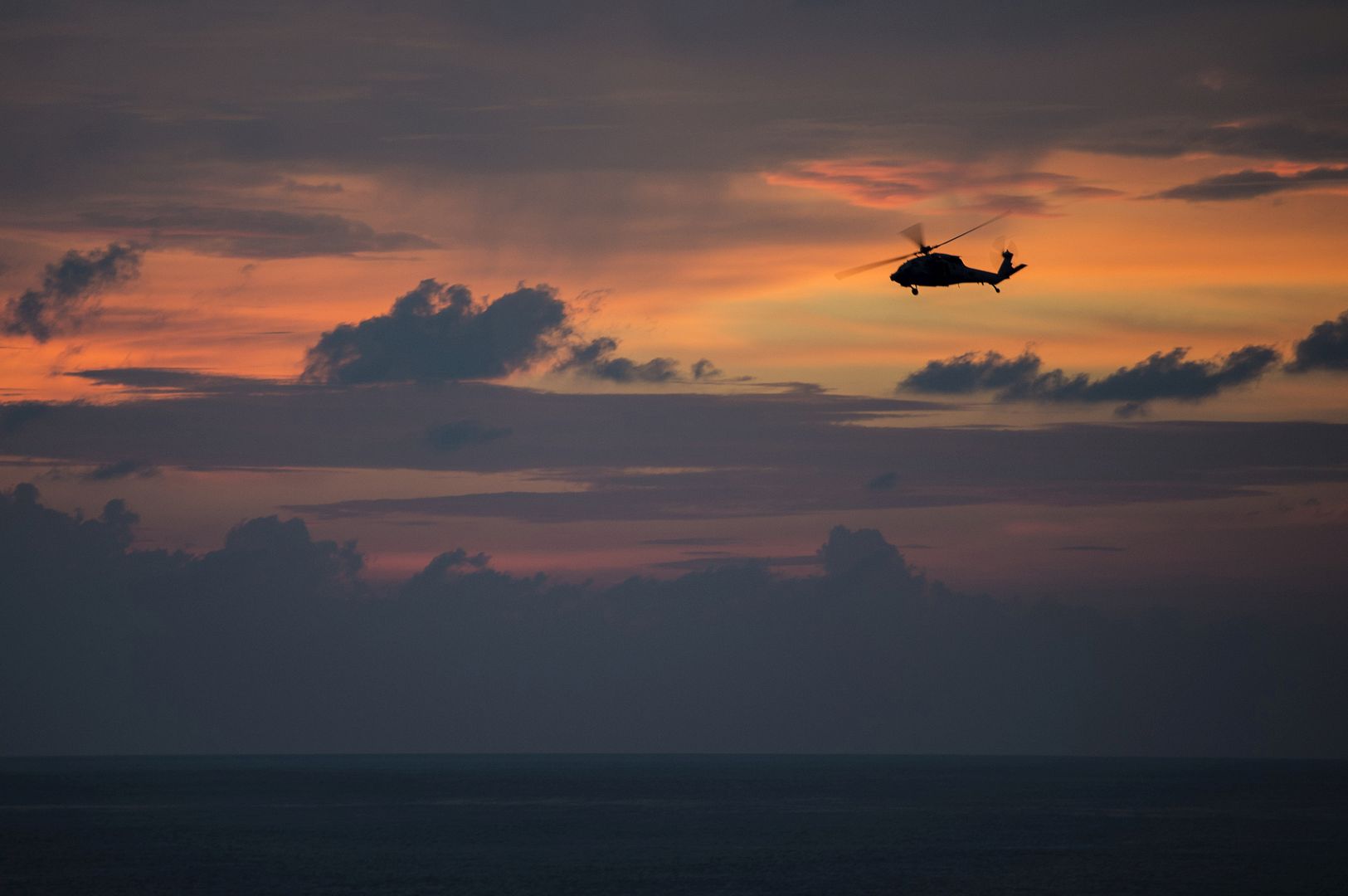
PANAMA CITY, Florida - Naval Air Station Patuxent River Air Test and Evaluation Squadron TWO ONE (HX-21) conducted Airborne Mine Neutralization System (AMNS) AN/ASQ-235 training flights with Naval Surface Warfare Center Panama City Division Dragon Masters Aviation Unit March 15-16, 2017. These flights were the last step required to fully train the Panama City Division aircrew in AMNS Operations. NSWC PCD Dragon Masters now have two pilots, two sensor operators, and four winch operators trained in conducting AMNS missions. U.S. Navy photo by Ron Newsome (Released).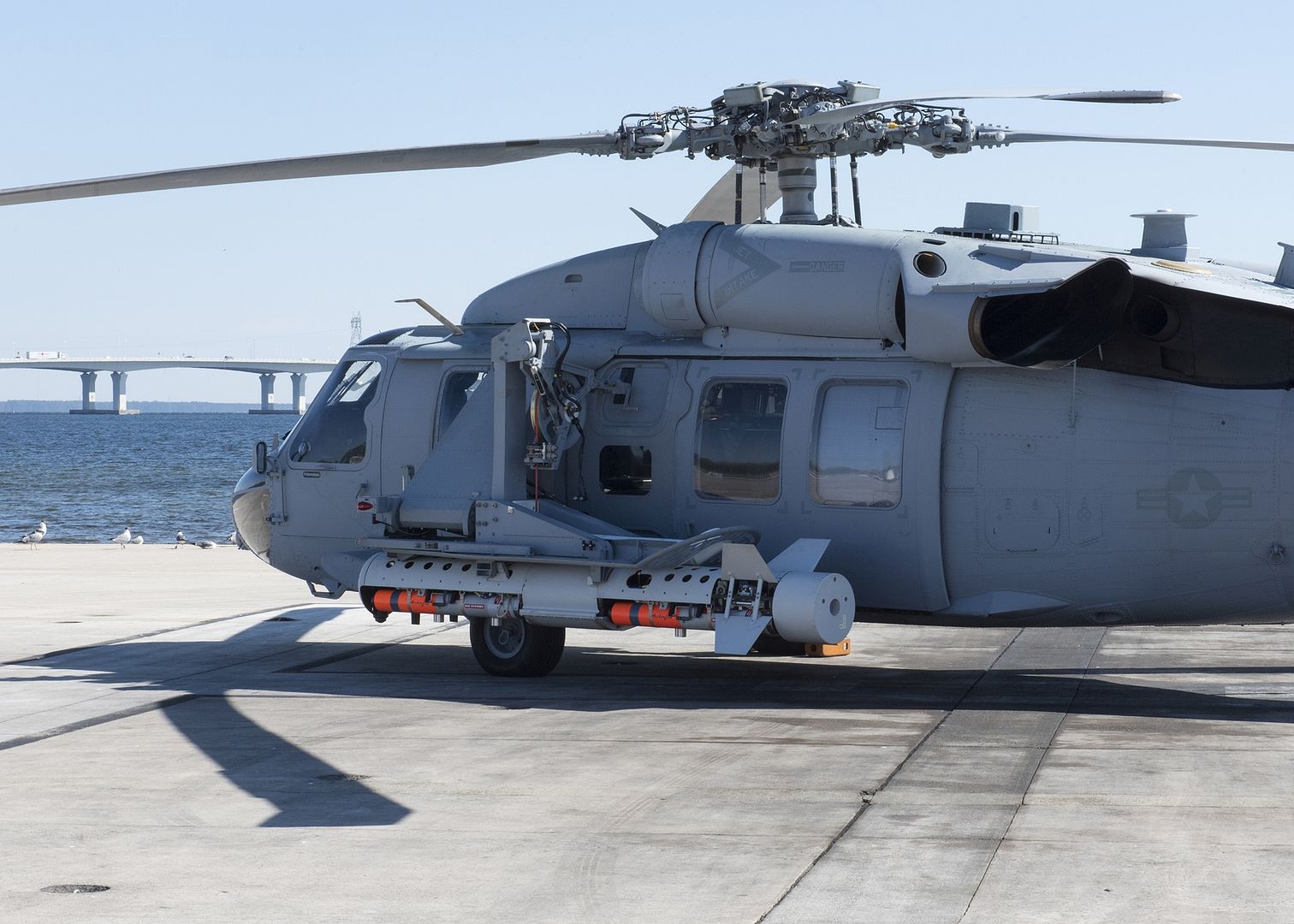
PANAMA CITY, Florida - Naval Air Station Patuxent River Air Test and Evaluation Squadron TWO ONE (HX-21) conducted Airborne Mine Neutralization System (AMNS) AN/ASQ-235 training flights with Naval Surface Warfare Center Panama City Division Dragon Masters Aviation Unit March 15-16, 2017. U.S. Navy photo by Ron Newsome (Released).
March 30, 2017 Montr?al Bombardier Inc., Commercial Aircraft, Press Release
Bombardier Commercial Aircraft welcomes Binter to the family of CRJ1000 operators. The Spain-based operator will expand its network with the newest CRJ1000 aircraft under a leasing agreement with Air Nostrum of Valencia, Spain.
?We are thrilled to strengthen our fleet with a Bombardier CRJ1000 aircraft leased from Air Nostrum. This agreement represents an important step in our growth journey? said Pedro Agust?n del Castillo, President and CEO, Binter. ?We are pleased with the performance of the in-service CRJ900 aircraft and we are confident that the CRJ1000 regional aircraft will also be a key asset in helping Binter offer a high level of service between the Canary Islands and Cabo Verde, Western Africa and the Iberian Peninsula.?
The CRJ1000 aircraft was delivered to Air Nostrum on March 30, 2017 during a ceremony at Bombardier?s facility in Mirabel where the CRJ Series regional aircraft are manufactured.
?Air Nostrum is pleased to provide Binter with the operation of the CRJ1000, which is the best
100-seater jet in the market. Air Nostrum is the most experienced operator of this aircraft type and the airline with the largest number of CRJ1000 orders in the world,? said Carlos Bertomeu, Chief Executive Officer and President, Air Nostrum.
?We are very pleased to welcome Binter as the latest CRJ1000 carrier. We congratulate both Binter and Air Nostrum for finalizing another successful agreement that will see the CRJ1000 aircraft expands Binter?s network, connecting more passengers to key cities within the beautiful Canary Islands region,? said Fred Cromer, President, Bombardier Commercial Aircraft. ?We are delighted that the CRJ1000 aircraft -- with its outstanding economics -- continue to play a significant role in positioning Air Nostrum?s ongoing growth strategy, and we thank our longtime customer for their confidence and partnership.?
The aircraft delivered today will increase Air Nostrum?s fleet of CRJ Series regional jets to 36 ? including 19 CRJ1000.
About CRJ Series Aircraft
Every 10 seconds a CRJ Series regional jet takes off somewhere in the world. The CRJ Series family of aircraft has transported almost 1.6 billion passengers to become the world?s most successful regional jet program -- linking people and communities like no other. The CRJ Series regional jets have revolutionized aviation with their proven efficiency, reliability and profitability.
The CRJ Series regional jets share commonality benefits that provide flexibility to operators and allow them to optimize their fleets to meet specific market demands. No other regional aircraft deliver this capability. Optimized for medium-haul regional routes, these aircraft can provide up to 10 per cent cash operating cost advantage over competing jets.
Each of the CRJ aircraft models offers its own distinct advantages. The CRJ200 regional jet offers outstanding ownership cost, ideal for opening new routes and markets. The CRJ700 regional jet is the lightest aircraft in its category, delivering impressive efficiency, performance and fuel burn savings, while the CRJ900 regional jet offers tremendous flexibility and is ideally suited for growing markets. The CRJ1000 regional jet, which has the highest passenger capacity in the family, delivers the lowest seat-mile cost in the regional jet market and burns up to 13 per cent less fuel than its competitors.
Since its launch, the CRJ Series family of regional jets has stimulated the regional jet market. In North America alone, it accounts for over 20 per cent of all jet departures. Globally, the family operates more than 200,000 flights per month.
The CRJ Series aircraft family includes over 100 owners and operators in 49 countries, and the worldwide fleet has logged more than 45 million flight hours. To date, Bombardier has booked firm orders for 1,912 CRJ Series aircraft.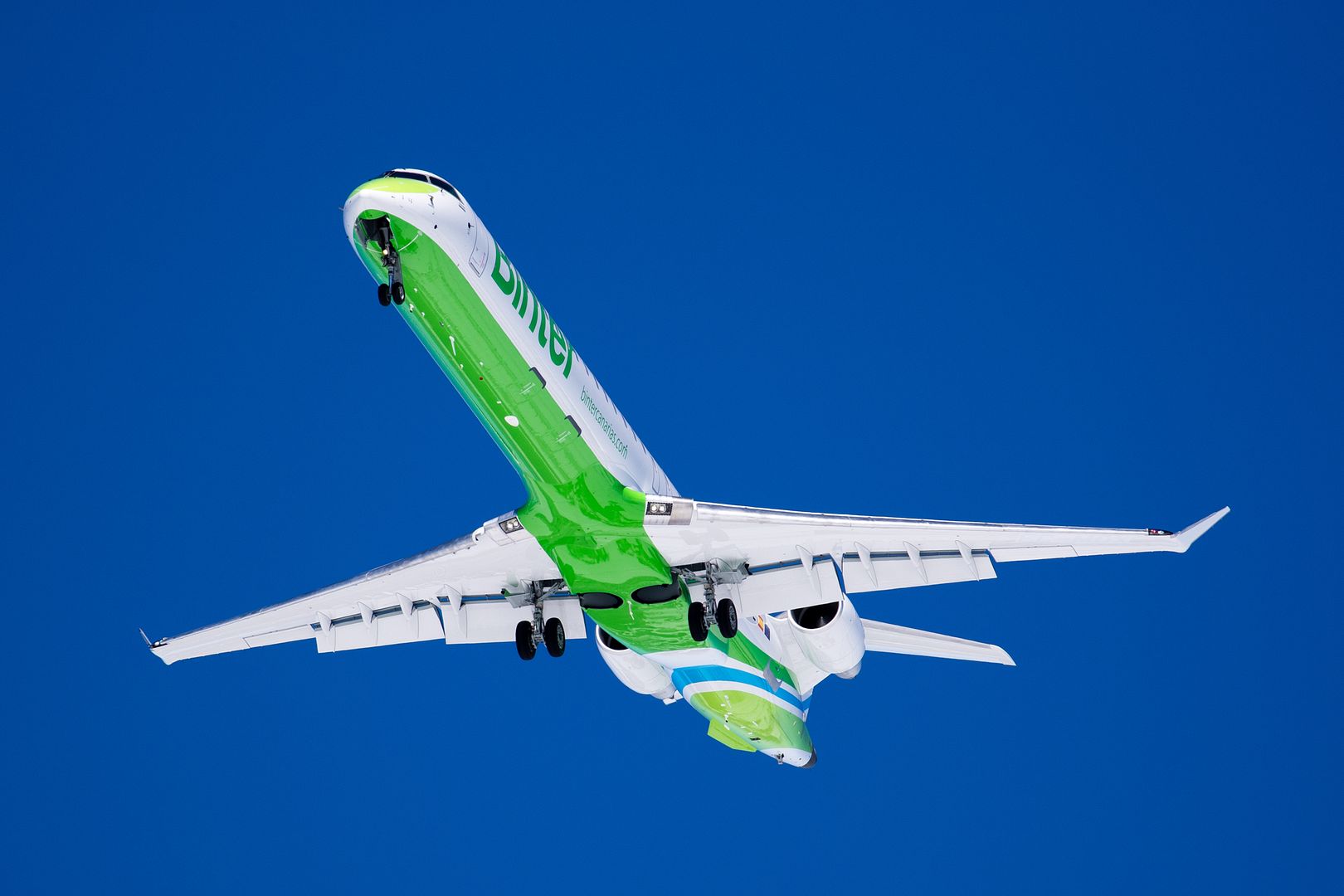
The U.S. company Leonardo DRS announced today plans to build a new aircraft manufacturing facility in Tuskegee, Alabama to produce its T-100 integrated jet training system if it is selected by the U.S. Air Force to provide the next-generation trainer.
The T-100 Team selected Moton Field Municipal Airport in Tuskegee for the new aircraft manufacturing site and final assembly line because of the skilled workforce, expansive airfield infrastructure and strong local and state resources supporting economic development in the region.
?Building the T-100 aircraft in Alabama will create American jobs while providing the Air Force with the world?s best trainer,? said Leonardo DRS CEO William J. Lynn, prime contractor for the T-100 Team, adding ?we believe that consolidating the T-100 integrator and airframe manufacturer under one roof streamlines the proposal?s management and our bid will deliver the best value for money to the U.S. Air Force.?
?American military pilots can train on the world?s most operationally proven, low-cost, low-risk integrated training system and the local economy will benefit from the development of a new centre of excellence building high quality jobs.? said Mauro Moretti, CEO and General Manager of Leonardo, explaining that ?The T-100 features an embedded training system, fifth-generation cockpit, open system architecture and in-flight refuelling capability and is designed to receive mission-focused next-generation enhancements to meet the demanding requirements by the U.S. Air Force?.
The T-100?s twin F124 turbofan propulsion engines, made by Honeywell Aerospace?s International Turbine Company, will be built in Phoenix, Arizona. CAE USA will provide the sophisticated ground-based training system which will be developed in Tampa, Florida.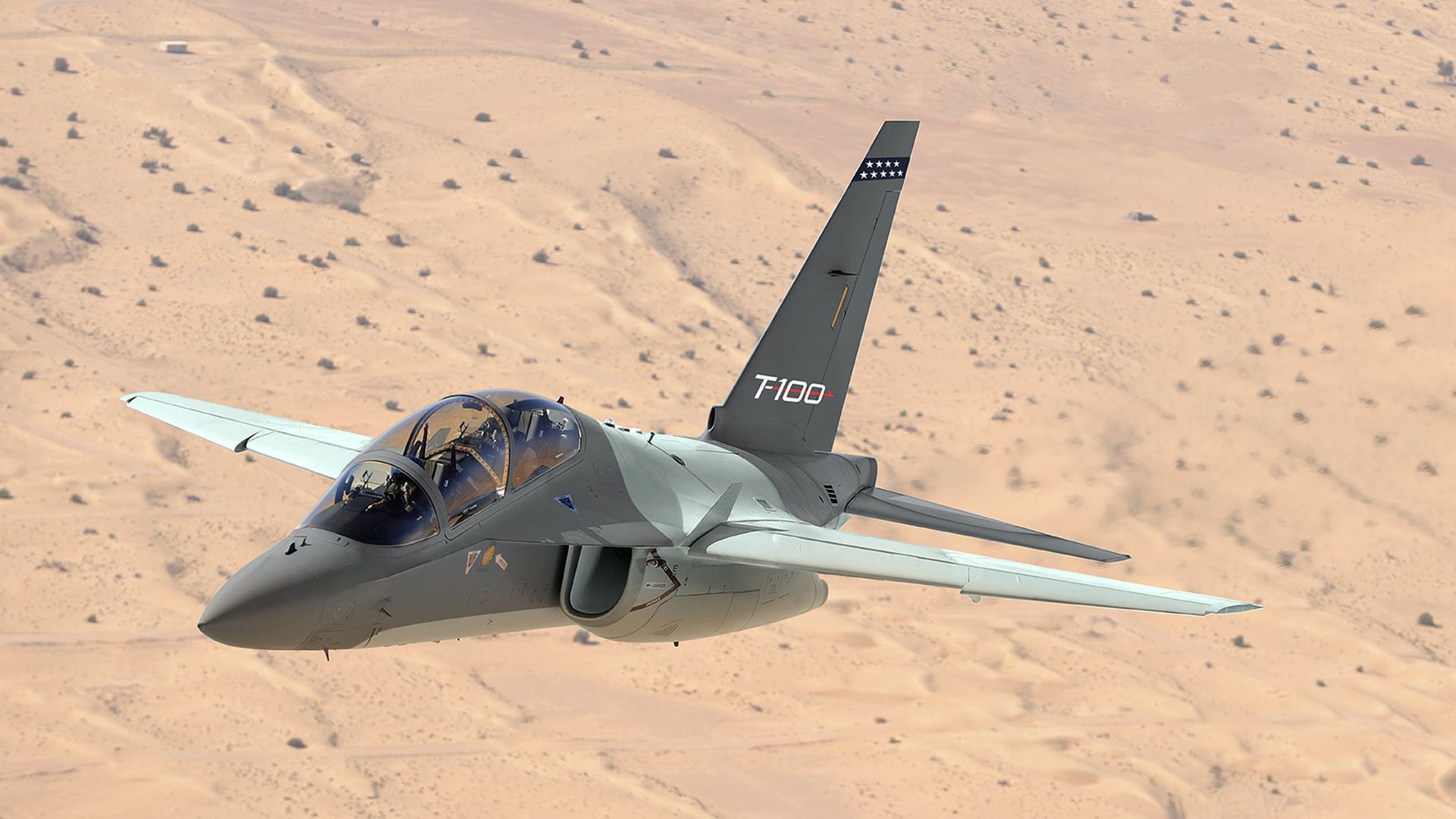
T-X is a critical Air Force program to replace an aging fleet of jet trainers at a time when the F-35 increasingly is entering service.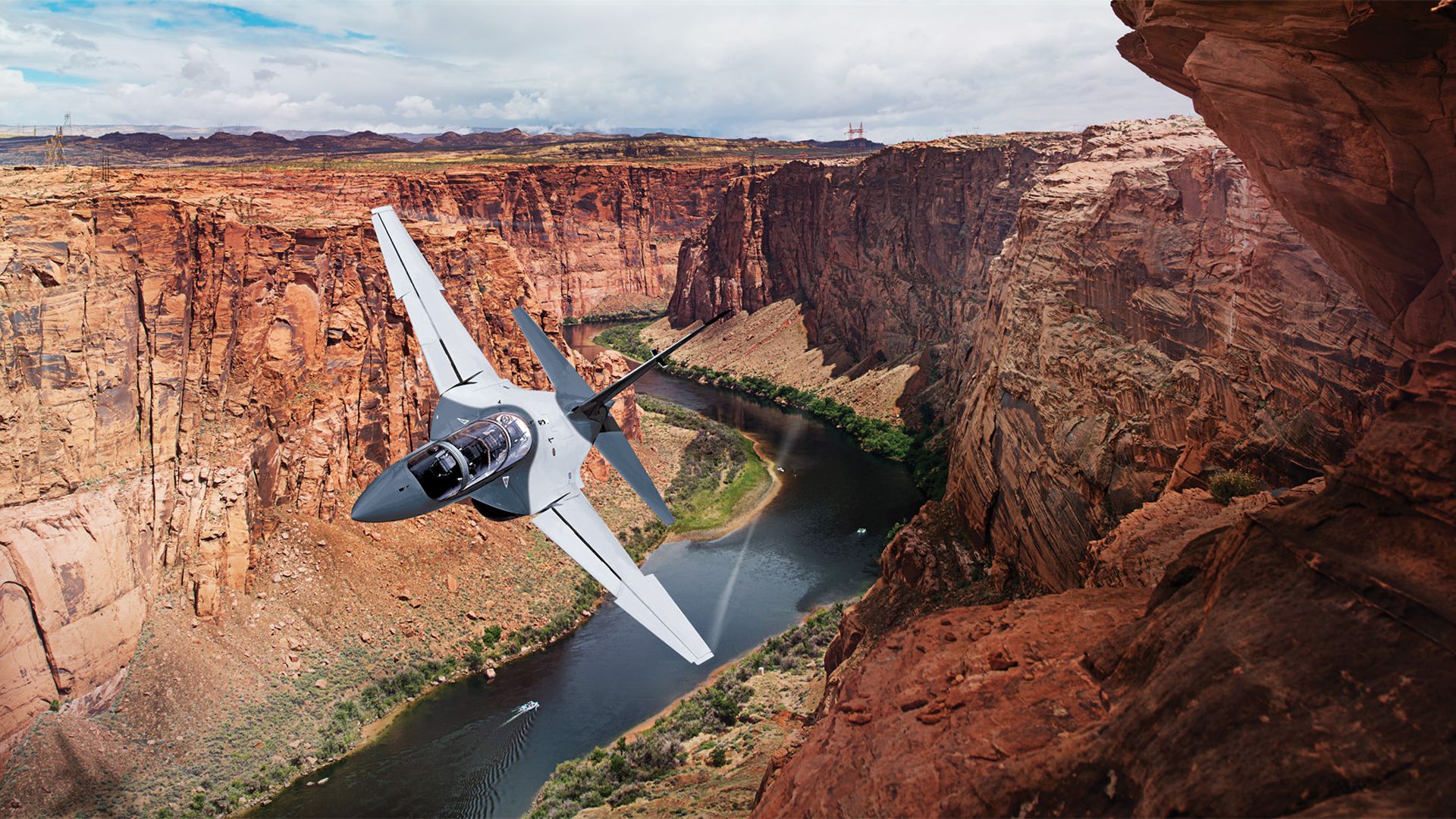
-
 Main AdminINDIAN OCEAN (March 29, 2017) A CH-53E Super Stallion helicopter assigned to the "Ridge Runners" of Marine Medium Tiltrotor Squadron (VMM) 163 lands on the flight deck of the amphibious assault ship USS Makin Island (LHD
Main AdminINDIAN OCEAN (March 29, 2017) A CH-53E Super Stallion helicopter assigned to the "Ridge Runners" of Marine Medium Tiltrotor Squadron (VMM) 163 lands on the flight deck of the amphibious assault ship USS Makin Island (LHD . The ship is the flagship of it's amphibious ready group, which is operating in the Indo-Asia-Pacific region to enhance amphibious capability with regional partners and to serve as a ready-response force for any type of contingency. (U.S. Navy photo by Mass Communication Specialist 3rd Class Devin M. Langer/Released)
. The ship is the flagship of it's amphibious ready group, which is operating in the Indo-Asia-Pacific region to enhance amphibious capability with regional partners and to serve as a ready-response force for any type of contingency. (U.S. Navy photo by Mass Communication Specialist 3rd Class Devin M. Langer/Released)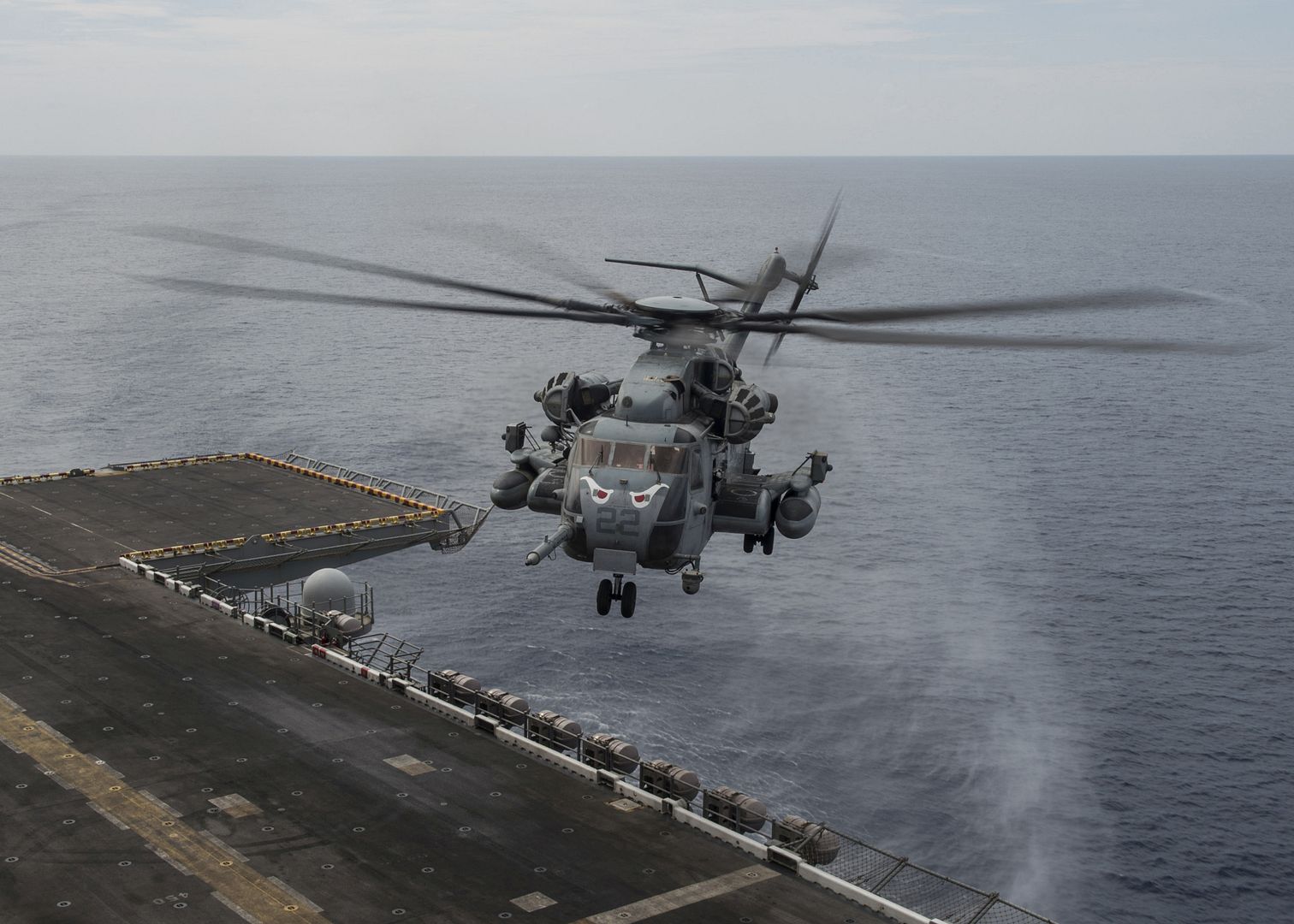
MEDITERRANEAN SEA (March 29, 2017) An AH-1W Cobra helicopter operated by Marine Medium Tiltrotor Squadron 365 (Reinforced) takes off from the flight deck of amphibious transport dock ship USS Mesa Verde (LPD 19), March 29, 2017. Mesa Verde is deployed with the Bataan Amphibious Ready Group to support maritime security operations and theater security cooperation efforts in the U.S. 6th Fleet area of operations. (U.S. Navy photo by Mass Communication Specialist 2nd Class Brent Pyfrom/Released)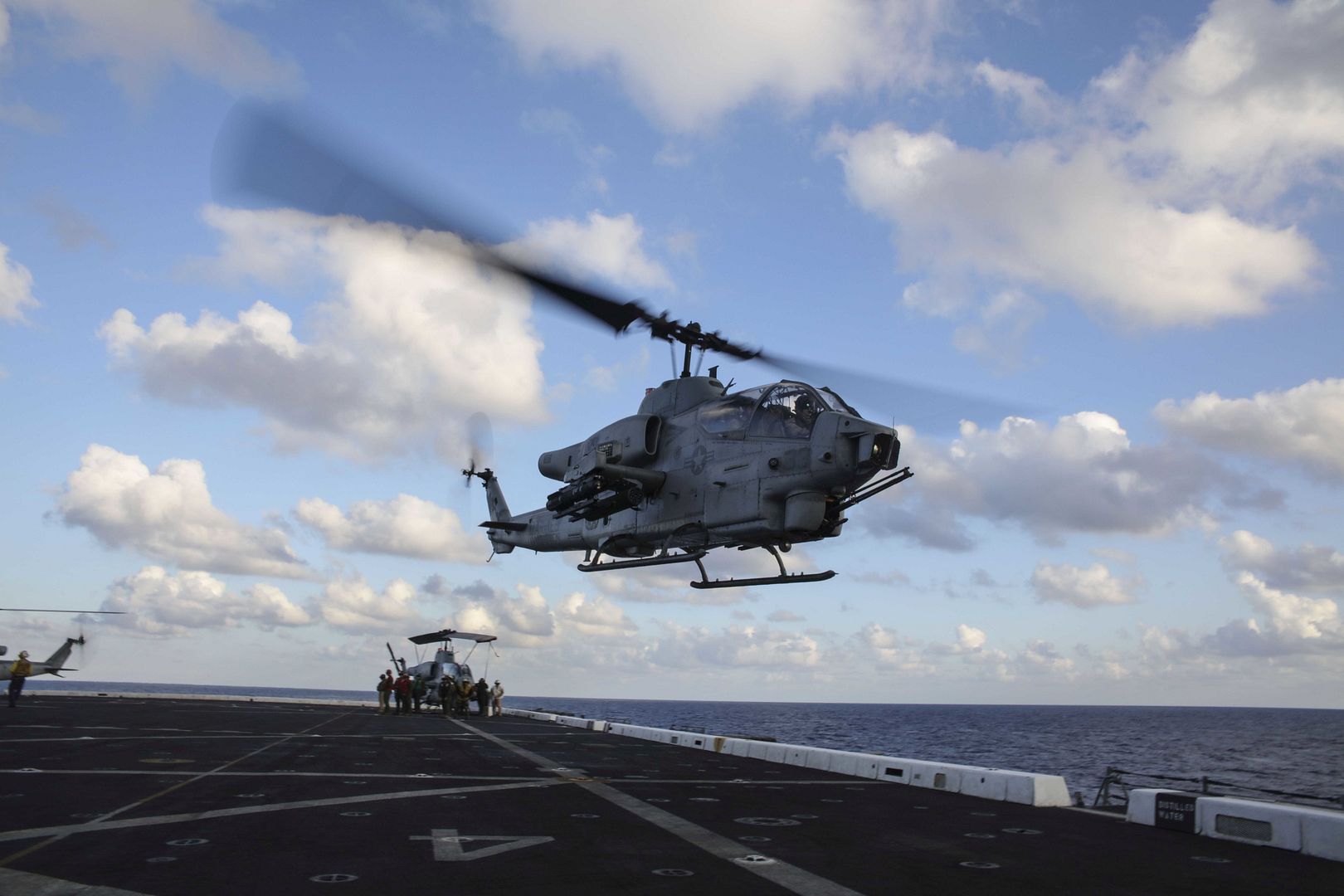
UTAH TEST AND TRAINING RANGE, Utah
F-35A Lightning II aircraft from the 388th Fighter Wing at Hill Air Force Base, Utah, fly in formation after refueling above the Utah Test and Training Range, March 30.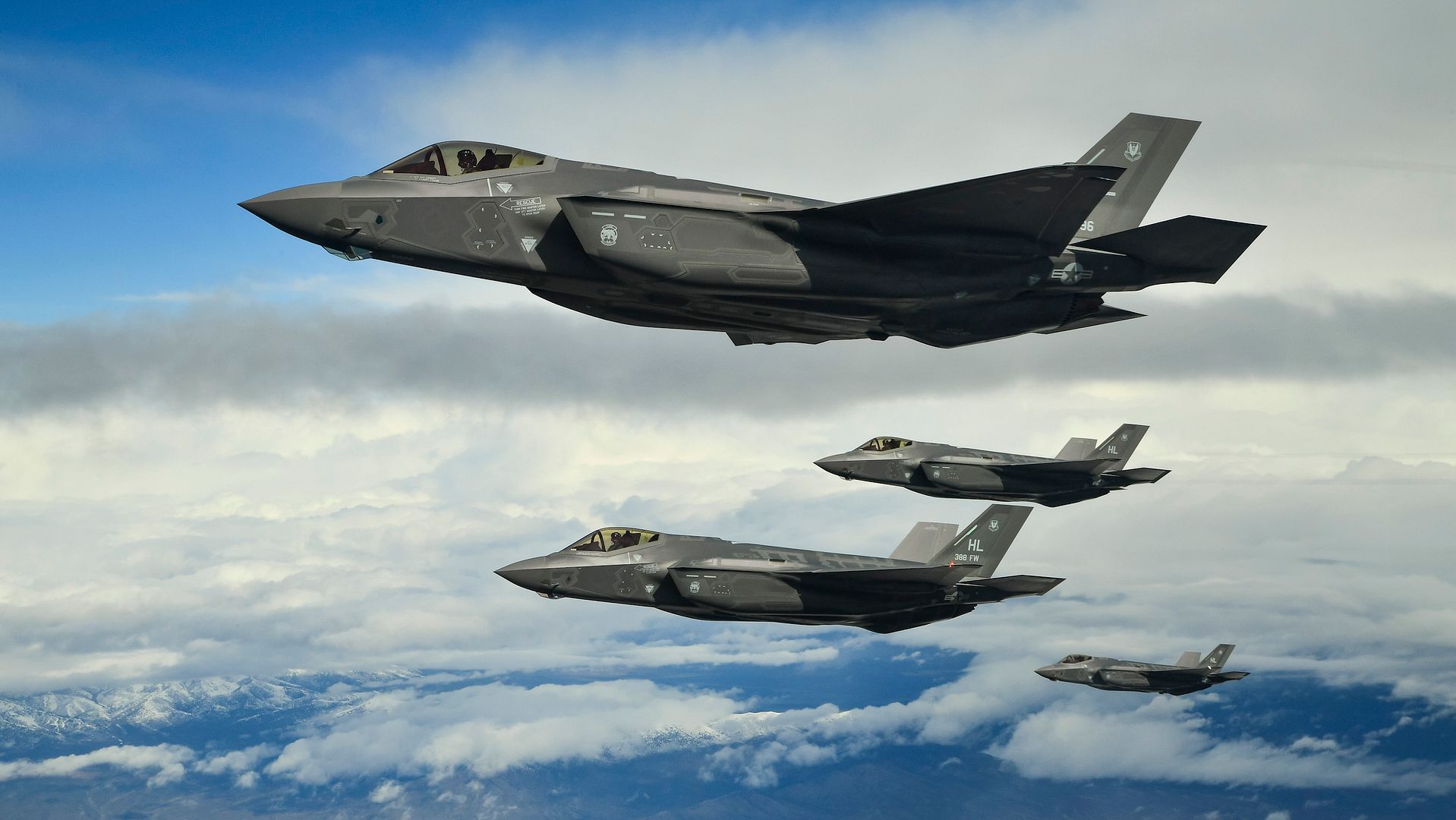
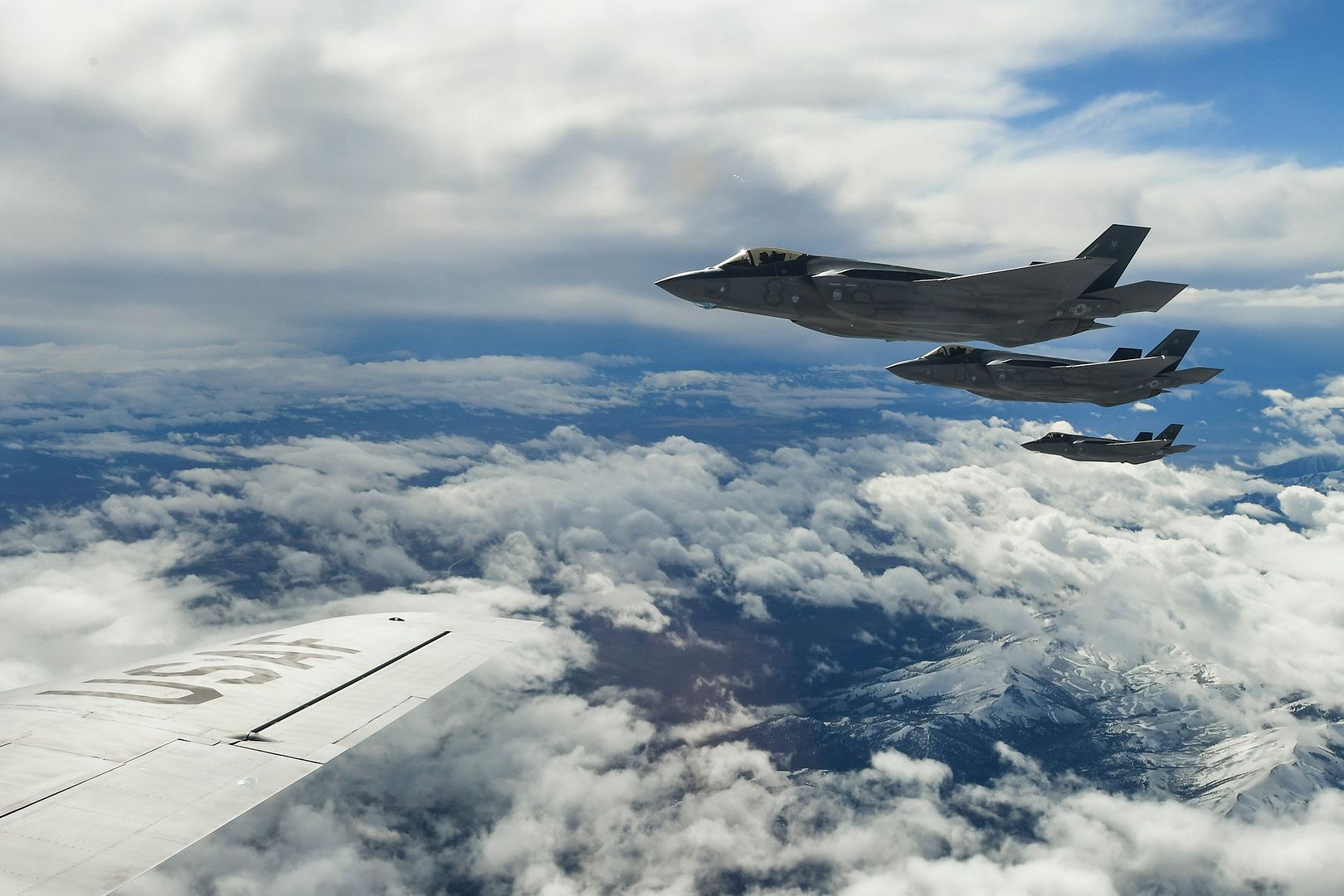
NORTH CHARLESTON, S.C., March 31, 2017 ? The Boeing (NYSE: BA) 787-10 Dreamliner took to the skies for the first time today at Boeing South Carolina. The airplane, which is the newest and longest model of the 787 family, completed a successful flight totaling four hours and 58 minutes.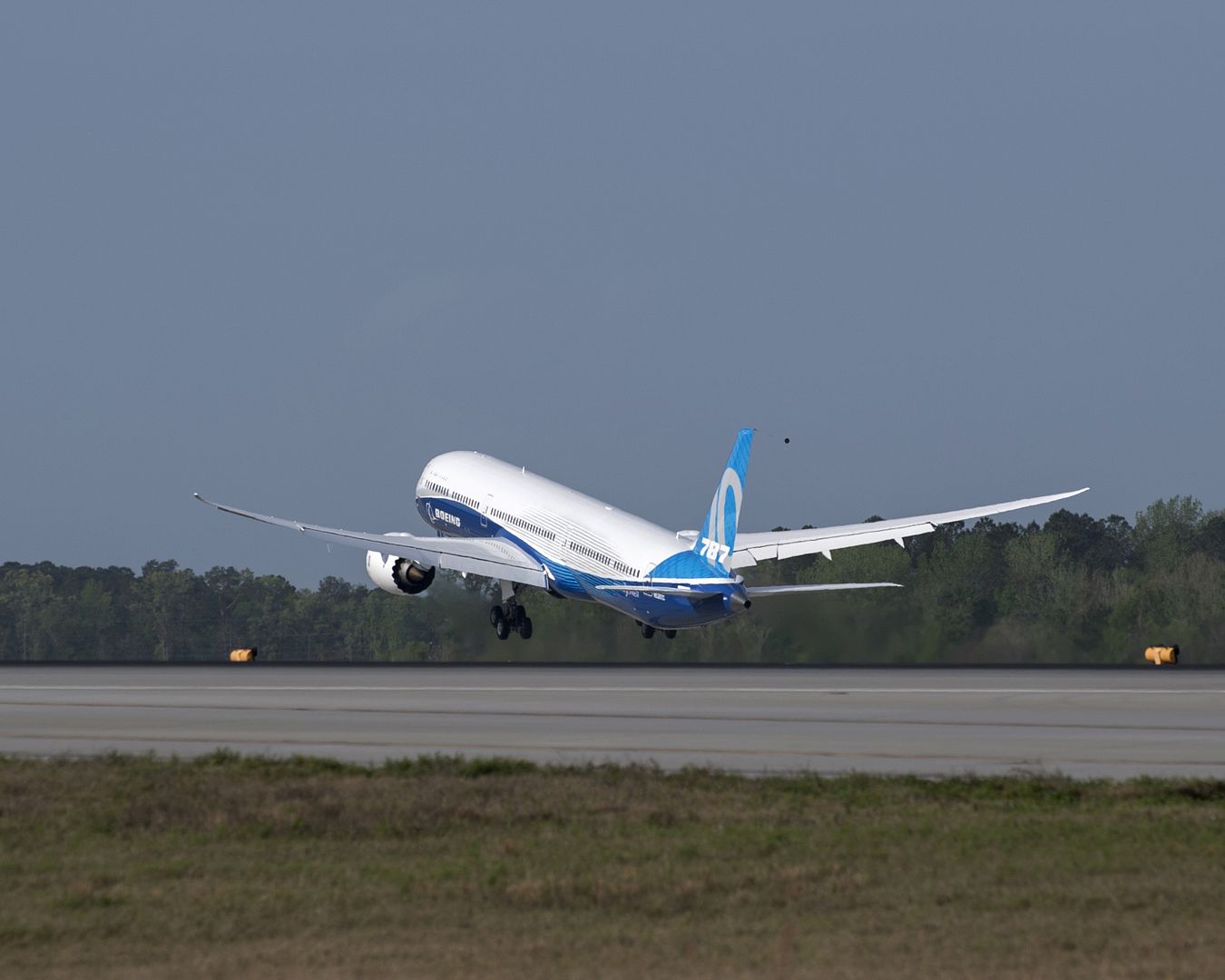
?The 787-10?s first flight moves us one step closer to giving our customers the most efficient airplane in its class,? said Boeing Commercial Airplanes President & CEO Kevin McAllister. ?The airplane will give carriers added flexibility in growing their network routes and build on the overwhelming success of the 787 Dreamliner family.?
Piloted by Boeing Test & Evaluation Capts. Tim Berg and Mike Bryan, the airplane performed tests on flight controls, systems and handling qualities. The 787-10 will now undergo comprehensive flight testing before customer deliveries begin in the first half of 2018.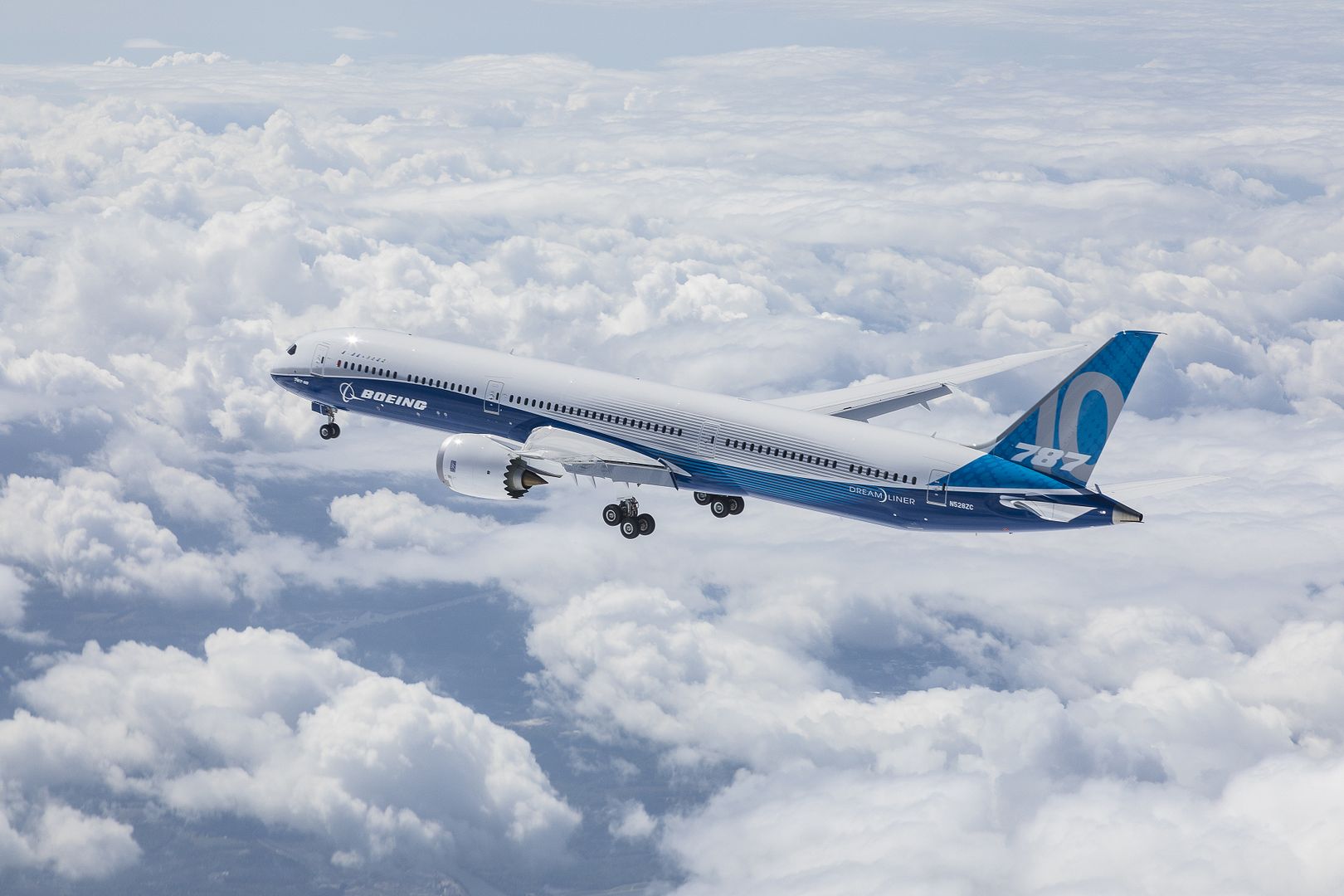
?From takeoff to landing, the airplane handled beautifully and just as expected,? said Berg, chief 787 pilot. ?The 787-10 is a fantastic machine that I know our customers and their passengers will love.?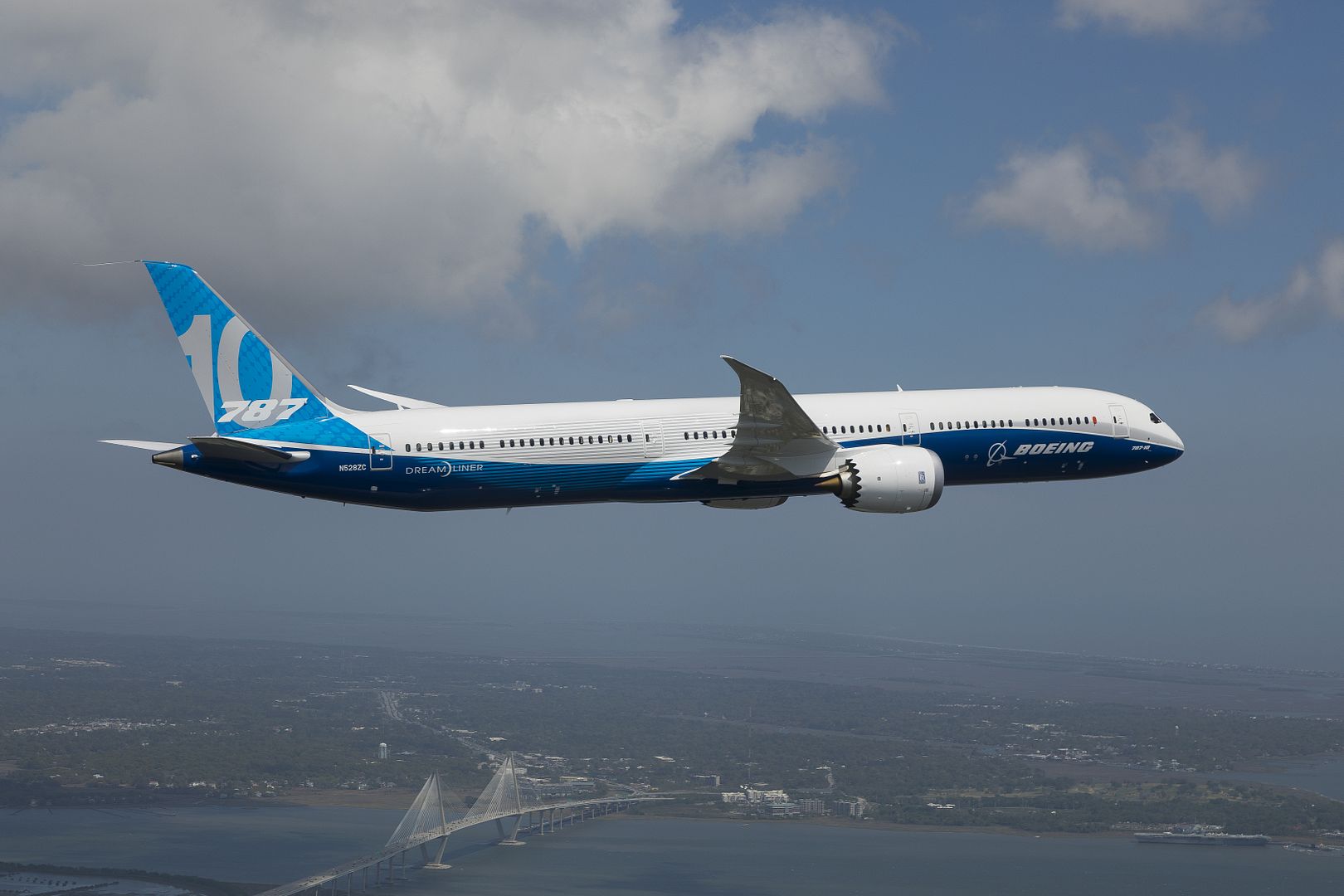
The 787-10 has won 149 orders from nine customers across the globe including launch customer Singapore Airlines, Air Lease Corporation (ALC), All Nippon Airways (ANA), British Airways, Etihad Airways, EVA Air, GE Capital Aviation Services (GECAS), KLM Royal Dutch Airlines and United Airlines.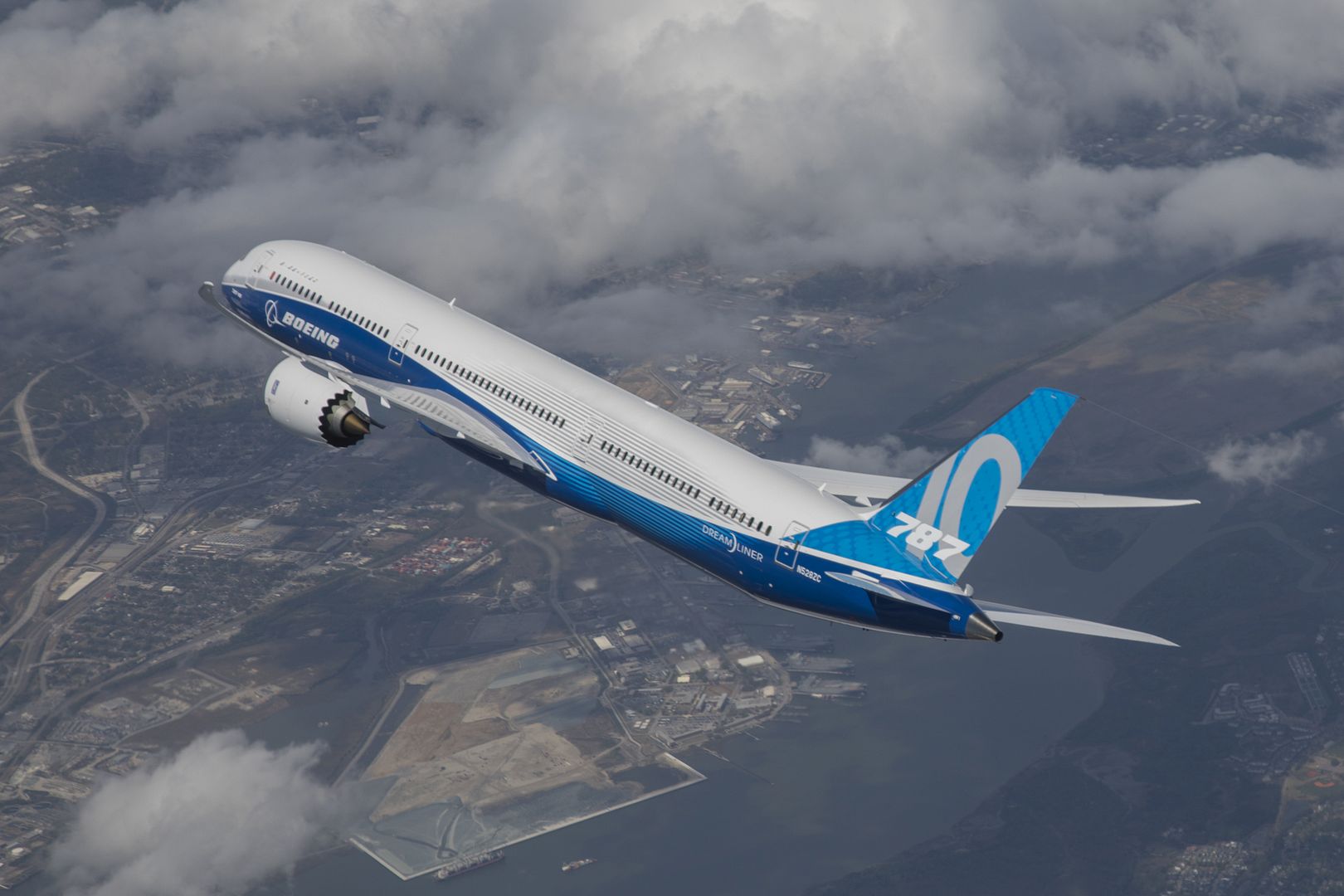
As an 18-foot (5.5-m) stretch of the 787-9, the 787-10 will deliver the 787 family?s preferred passenger experience and long range with 25 percent better fuel per seat and emissions than the airplanes it will replace and 10 percent better than today?s competition.
The 787 Dreamliner family is a key part of Boeing?s twin-aisle airplane strategy, which offers a modern, optimized and efficient airplane family in every market segment. Since entering service in 2011, the 787 family has flown more than 152 million people on over 560 unique routes around the world, saving an estimated 14 billion pounds of fuel.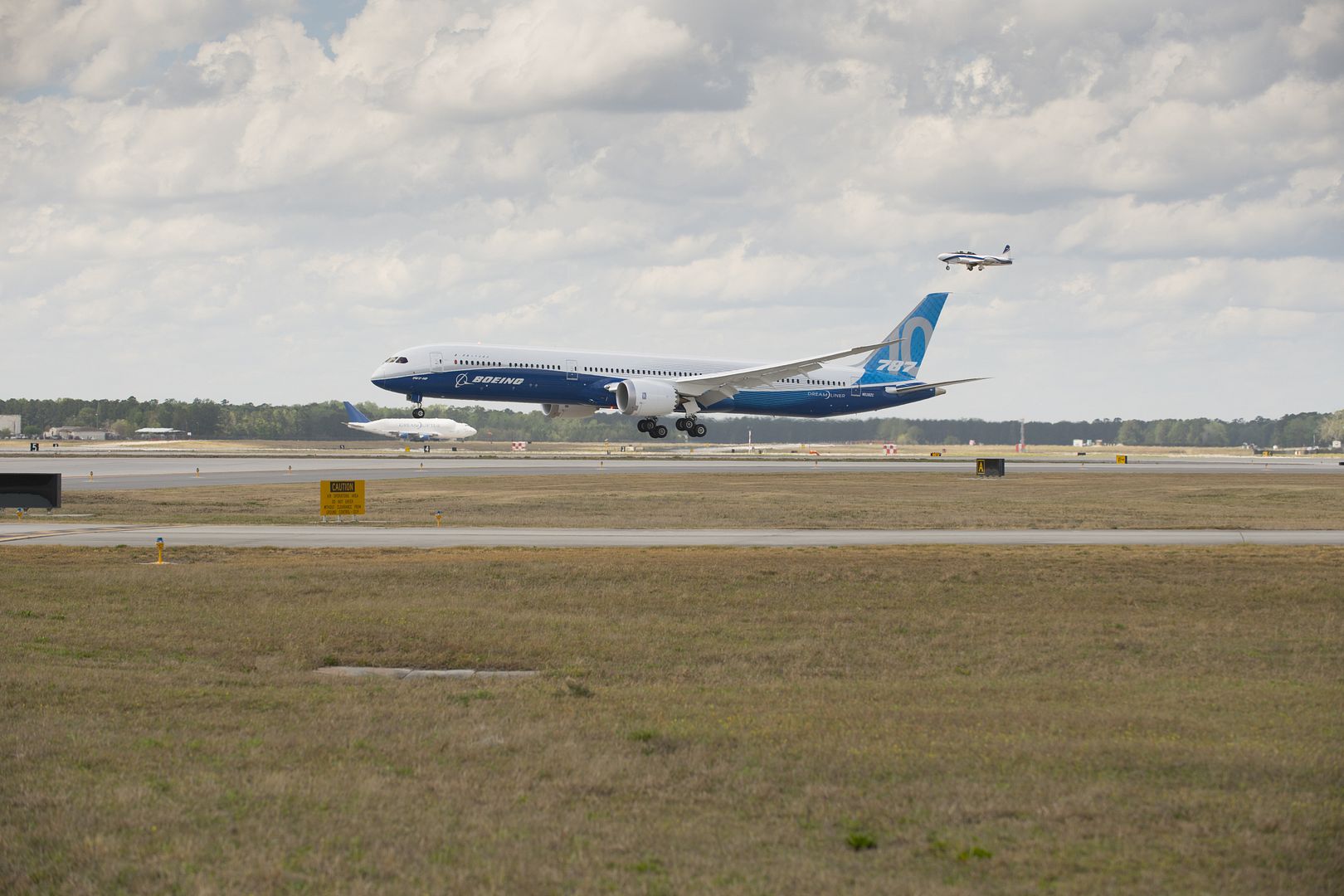
31 March 2017 Press Release
The first Airbus A319neo performed its maiden flight today, The smallest member of the A320neo Family, powered by CFM International LEAP-1A engines took off from Hamburg and landed in Toulouse after a 5 hour flight.
It was piloted by Experimental test pilots Michel Gagneux and Eckard Hausser. They were assisted in the cockpit by Test-Flight Engineer Jean Michel Pin, while two flight test engineers Sylvie Loisel-Labaste and David O?nions directed the flight from the aircraft?s Test Engineer station.
This flight was the occasion for the crew to assess the general handling of the aircraft and to check the main systems. The A319neo, registered as D-AVWA, will be based in Toulouse in order to complete its flight test programme.
The A320neo Family is the world?s best-selling single aisle product line with over 5,000 orders received from over 90 customers, capturing almost 60 percent share of the market. The A320neo Family incorporates latest technologies including new generation engines and Sharklet wing tip devices, which together deliver more than 15 percent in fuel savings from day one and 20 percent by 2020.
Thanks to their widest cabin, all members of the A320neo Family offer unmatched comfort in all classes and Airbus? 18? wide seats in economy as standard.
With one aircraft in three sizes (A319neo, A320neo & A321neo), the A320neo Family, seating from 100 to 240 passengers, seamlessly covers the entire single-aisle segment from low to high-density domestic to longer range routes.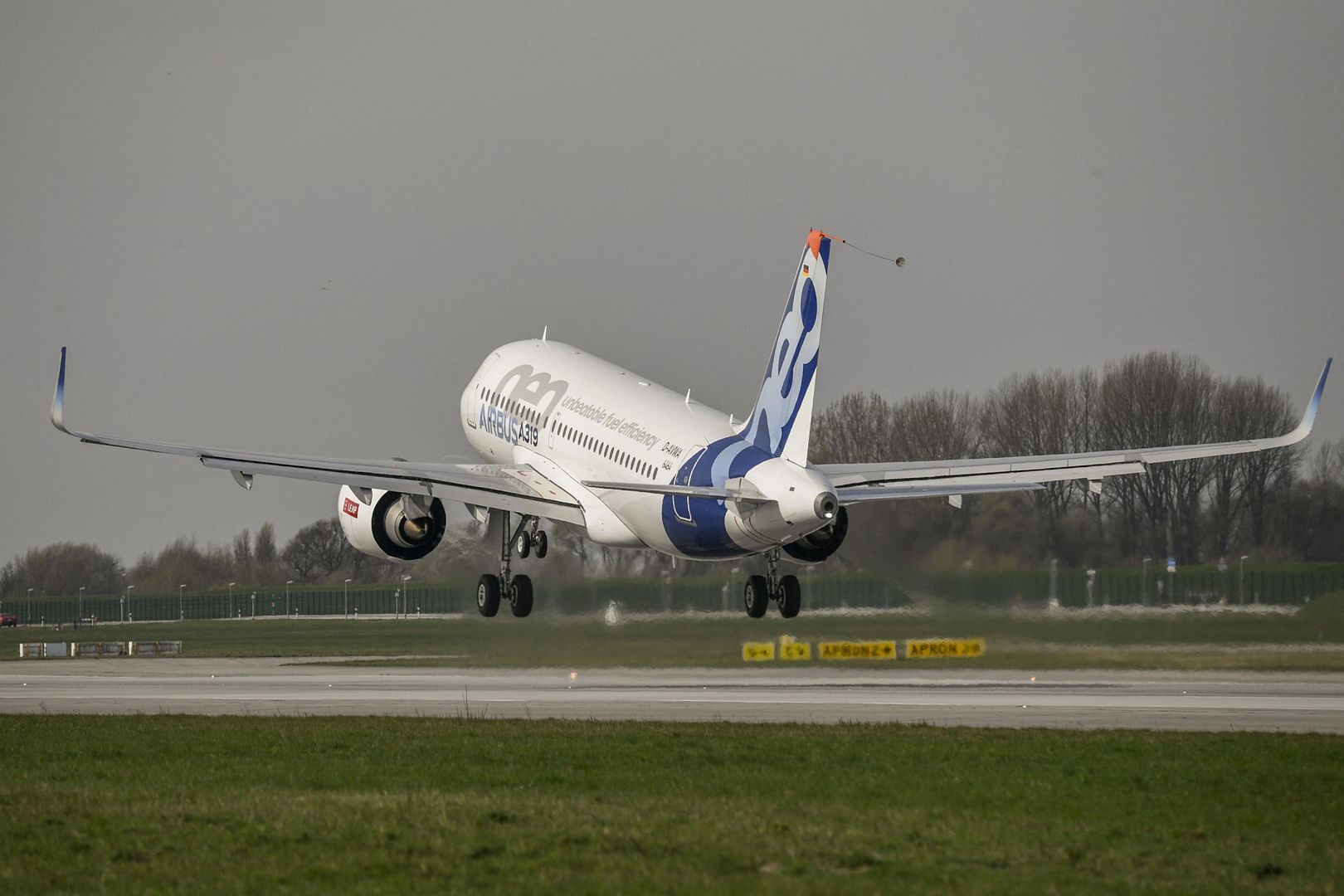
The A319neo is the smallest member of the A320neo Family; it offers its operators superior short field performance in hot and high conditions. It can accommodate up to 160 passengers without compromise on the comfort.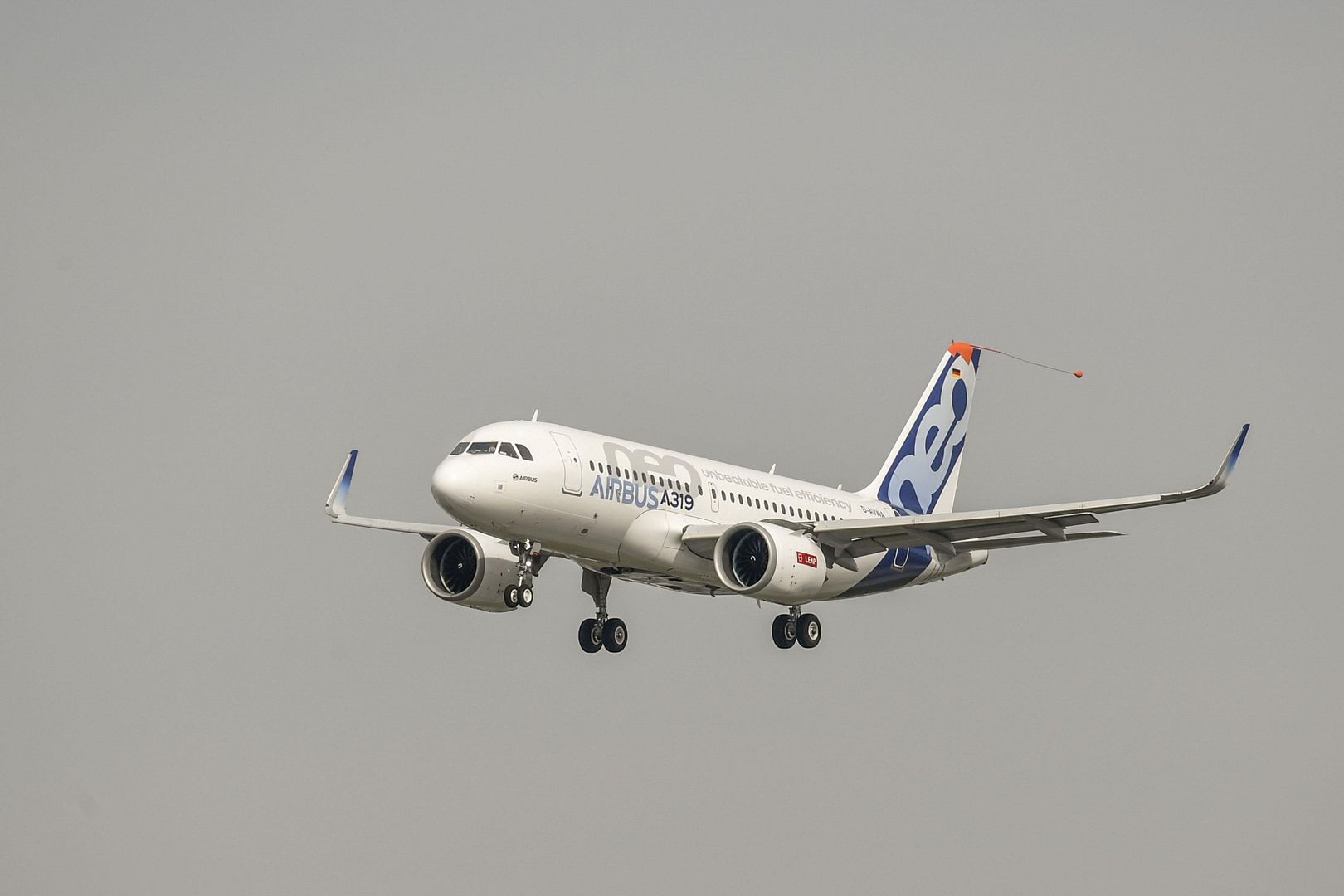
-
 Main AdminU.S. Marines with Marine Air Control Squadron 4 Detachment B conducted a cross-training exercise with the Japan Maritime Self-Defense Force (JMSDF) at Marine Corps Air Station Iwakuni, Japan, March 30, 2017. Members of the air traffic controller mobile team and communication technicians simulated a forward arming and refueling point operation where they communicated with JMSDF helicopter pilots and performed austere landings on a heliport that acted as an expeditionary runway. (U.S. Marine Corps photo by Cpl. James A. Guillory)
Main AdminU.S. Marines with Marine Air Control Squadron 4 Detachment B conducted a cross-training exercise with the Japan Maritime Self-Defense Force (JMSDF) at Marine Corps Air Station Iwakuni, Japan, March 30, 2017. Members of the air traffic controller mobile team and communication technicians simulated a forward arming and refueling point operation where they communicated with JMSDF helicopter pilots and performed austere landings on a heliport that acted as an expeditionary runway. (U.S. Marine Corps photo by Cpl. James A. Guillory)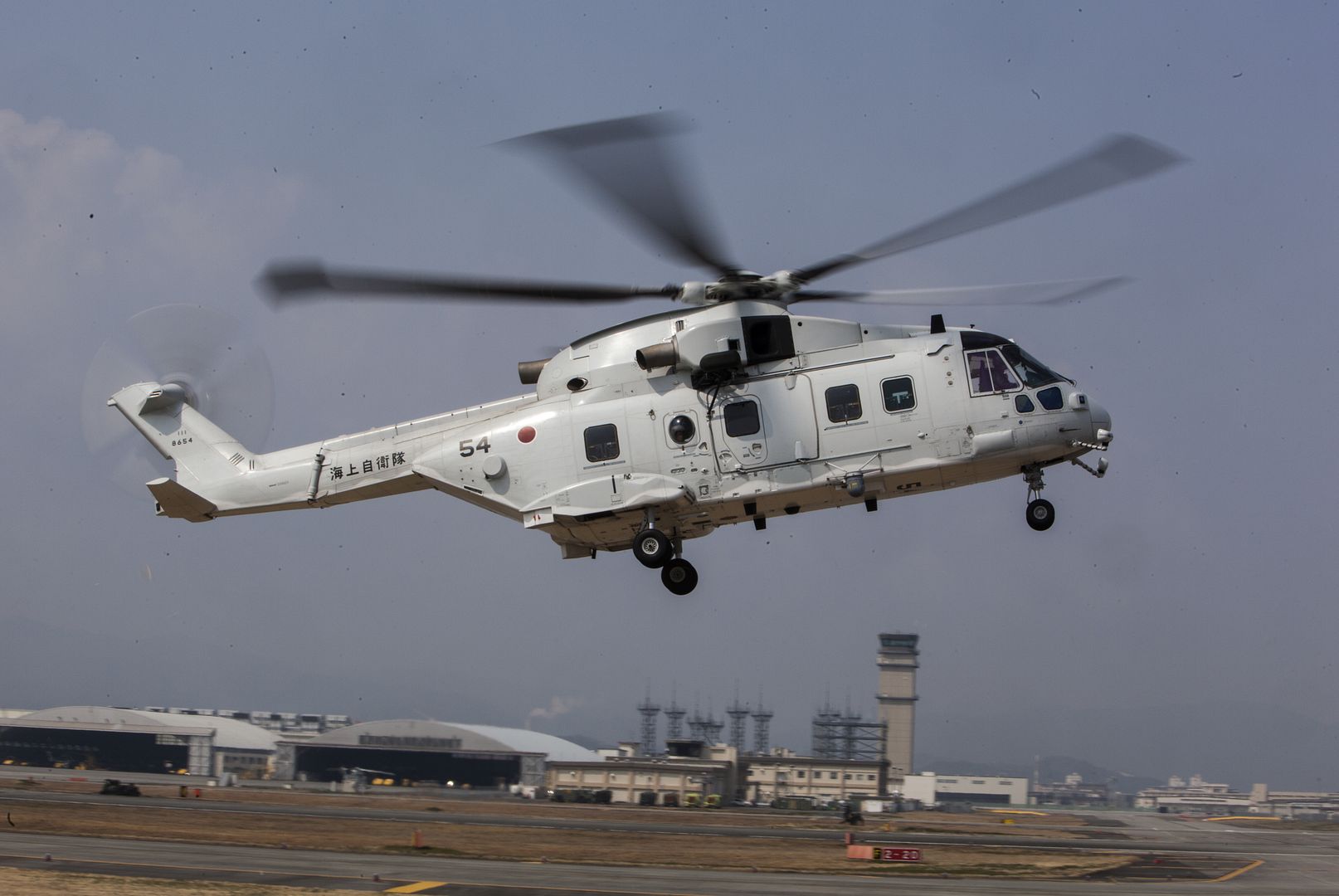
SEA OF JAPAN (March 31, 2017) A Japan Maritime Self-Defense Force (JMSDF) SH-60J Seahawk helicopter takes off from the flight deck of the amphibious assault ship USS Bonhomme Richard (LHD 6). Bonhomme Richard, flagship of the Bonhomme Richard Expeditionary Strike Group, with embarked 31st Marine Expeditionary Unit, is on a routine patrol, operating in the Indo-Asia-Pacific region to enhance warfighting readiness and posture forward as a ready-response force for any type of contingency. (U.S. Navy photo by Mass Communication Specialist 3rd Class Jeanette Mullinax/Released)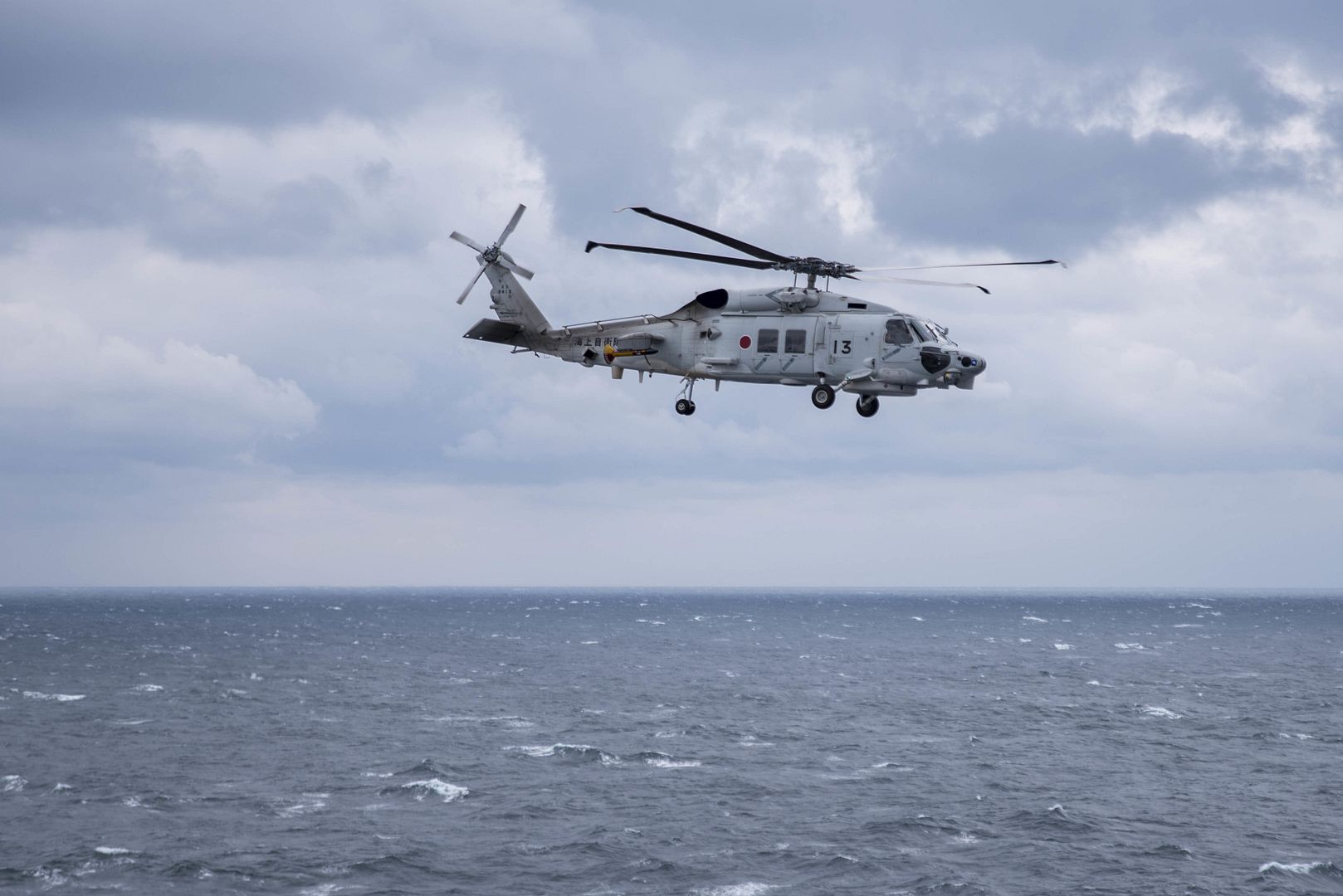
Kuwait- On the Camp Buehring flight line a pair of UH-60 Black Hawk helicopters from Florida Army National Guard, Company A, 1-111th Aviation Regiment, deployed in support of 77th Combat Aviation Brigade, face a highly charged electrical storm before the deluge of rain begins, March 28.
Photo by Sgt. 1st Class Suzanne Ringle.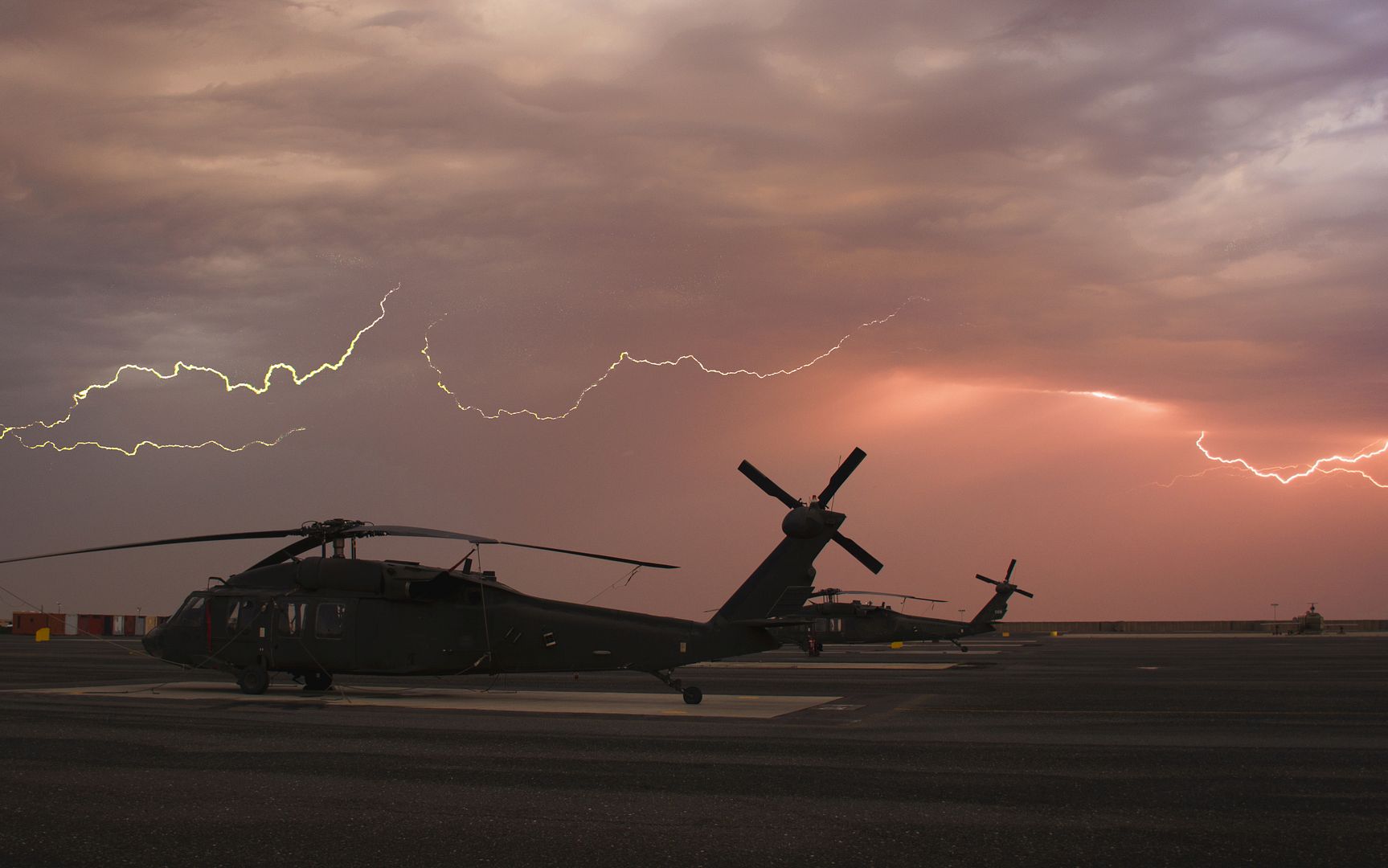
RIO DE JANEIRO, April 3, 2017 /PRNewswire/ -- Sikorsky, a Lockheed Martin (NYSE:LMT) company, will demonstrate the extraordinary short takeoff and landing capabilities of the M28 turboprop airplane to interested military, civil and commercial operators in Rio de Janeiro during the LAAD Defence & Security trade show April 4-7.
The aircraft arrives April 3 at Jacarepagu? Airport, Rio de Janeiro, having demonstrated a range of mission capabilities to operators in Trinidad and Tobago, and to the Brazilian Army and other transport operators in Manaus and Bras?lia. Demonstrated flight capability included take-off with up to 2,300 kgs (5,000 lbs.) of cargo in just 548 meters (1,800 ft.) of runway length, and fast reconfiguration of the 13,73 m3 (485 cu ft.) cabin from passenger to cargo, or a combination of both.
"We are very pleased by the strong interest shown by commercial transport companies and military commands as the M28 airplane demonstrates the largest payload capacity of its class," said Adam Schierholz, Sikorsky regional executive for Latin America. "Operators are looking for a powerful, versatile and low maintenance aircraft that is expressly designed to fly cargo and passengers into unprepared landing strips, and to para-drop relief supplies or troops, whether in mountain regions, jungle clearings or small island strips at sea level."
Transport operators in Trinidad & Tobago showed particular interest in the M28 aircraft's ability to carry 19 passengers or a mix of passengers and cargo on the same flight, and to load and offload cargo via the clamshell doors at the rear of the stand-up cabin. An optional air conditioning system also proved attractive.
The Brazilian Army witnessed how the dual-piloted aircraft can be loaded with mission equipment or up to 17 equipped troops, can perform medical evacuations, and can precisely drop paratroops and cargo from the rear of the plane. Mission equipment inserted into the cabin using a manually operated cargo hoist with 700 kgs (1,540 lbs.) loading capacity was shown to give the flight crew independent cargo-handling flexibility in remote locations.
Two PT6A-65B engines delivering 2,200 HP total power output give the 7,500 kgs (16,500 lbs.) Polish designed-and-built M28 airplane strong flight performance in tropical or cold temperatures at maximum payload.
To view the M28 aircraft during LAAD, please register your interest at Lockheed Martin booth F20, or visit www.m28aircraft.com to learn more about the aircraft.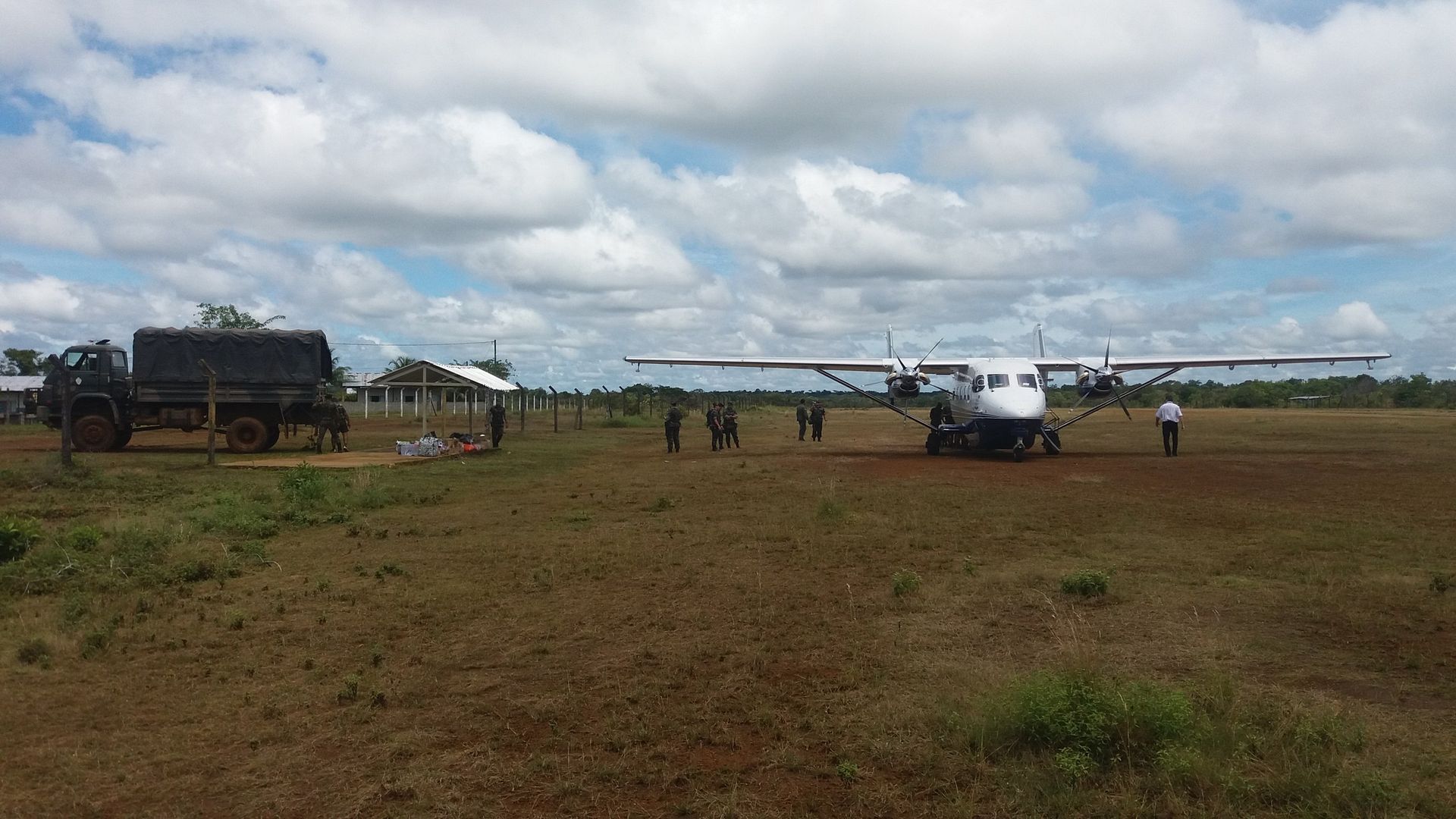
-
 Main AdminA U.S. Air Force F-15 Eagle from the California Air National Guard?s 144th Fighter Wing returns after the morning sortie at the Honolulu International Airport March 31, 2017 during Sentry Aloha 17-03. Sentry Aloha provides the ANG, Air Force and DoD counterparts a multi-faceted, joint venue with supporting infrastructure and personnel that incorporates current, realistic integrated training. (Air National Guard photo by Senior Master Sgt. Chris Drudge)
Main AdminA U.S. Air Force F-15 Eagle from the California Air National Guard?s 144th Fighter Wing returns after the morning sortie at the Honolulu International Airport March 31, 2017 during Sentry Aloha 17-03. Sentry Aloha provides the ANG, Air Force and DoD counterparts a multi-faceted, joint venue with supporting infrastructure and personnel that incorporates current, realistic integrated training. (Air National Guard photo by Senior Master Sgt. Chris Drudge)
U.S. Air Force F-15 Eagle's from the California Air National Guard?s 144th Fighter Wing take-off for the morning sortie at the Honolulu International Airport March 31, 2017 during Sentry Aloha 17-03. Sentry Aloha provides the ANG, Air Force and DoD counterparts a multi-faceted, joint venue with supporting infrastructure and personnel that incorporates current, realistic integrated training. (Air National Guard photo's by Senior Master Sgt. Chris Drudge)
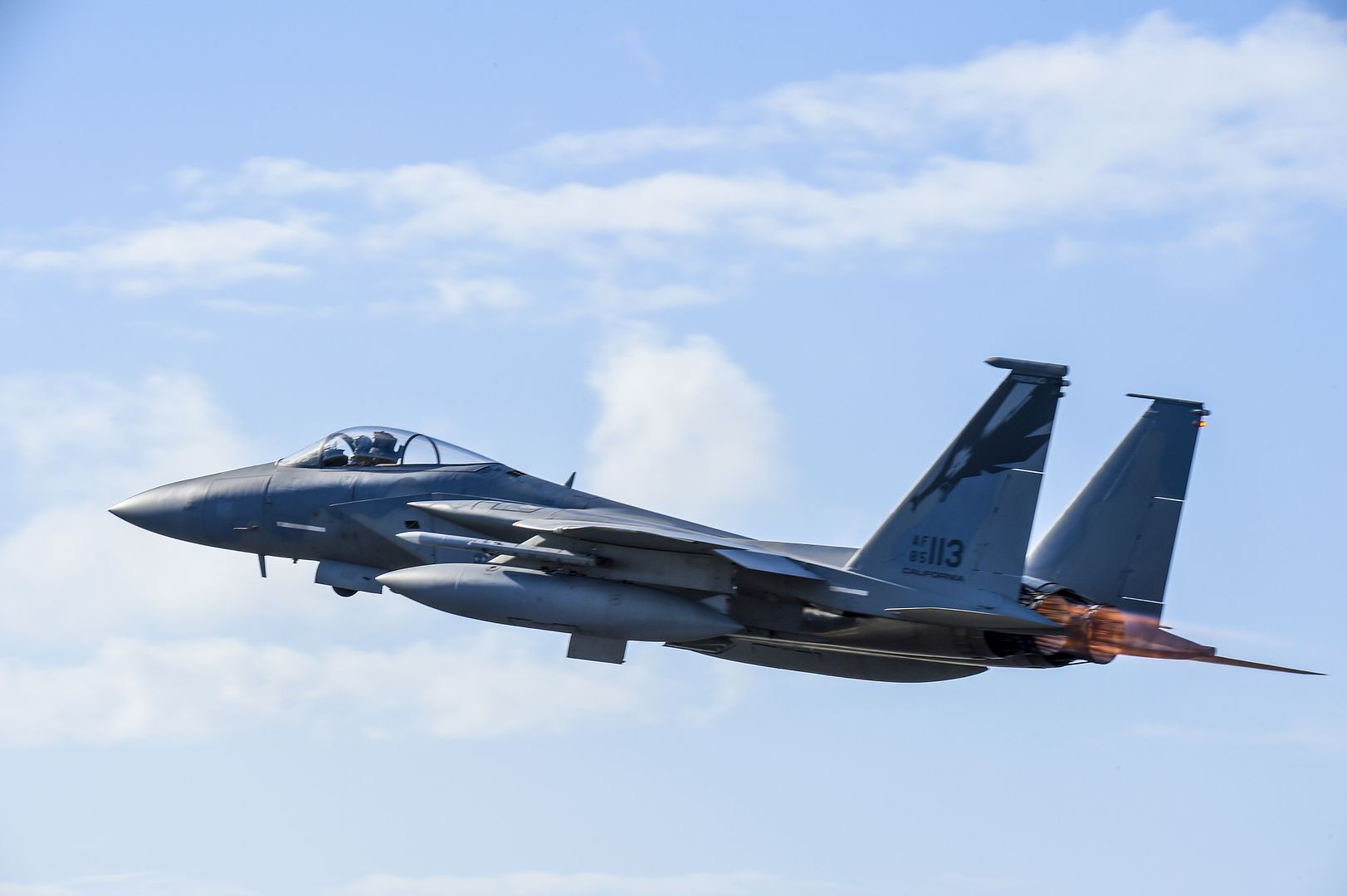
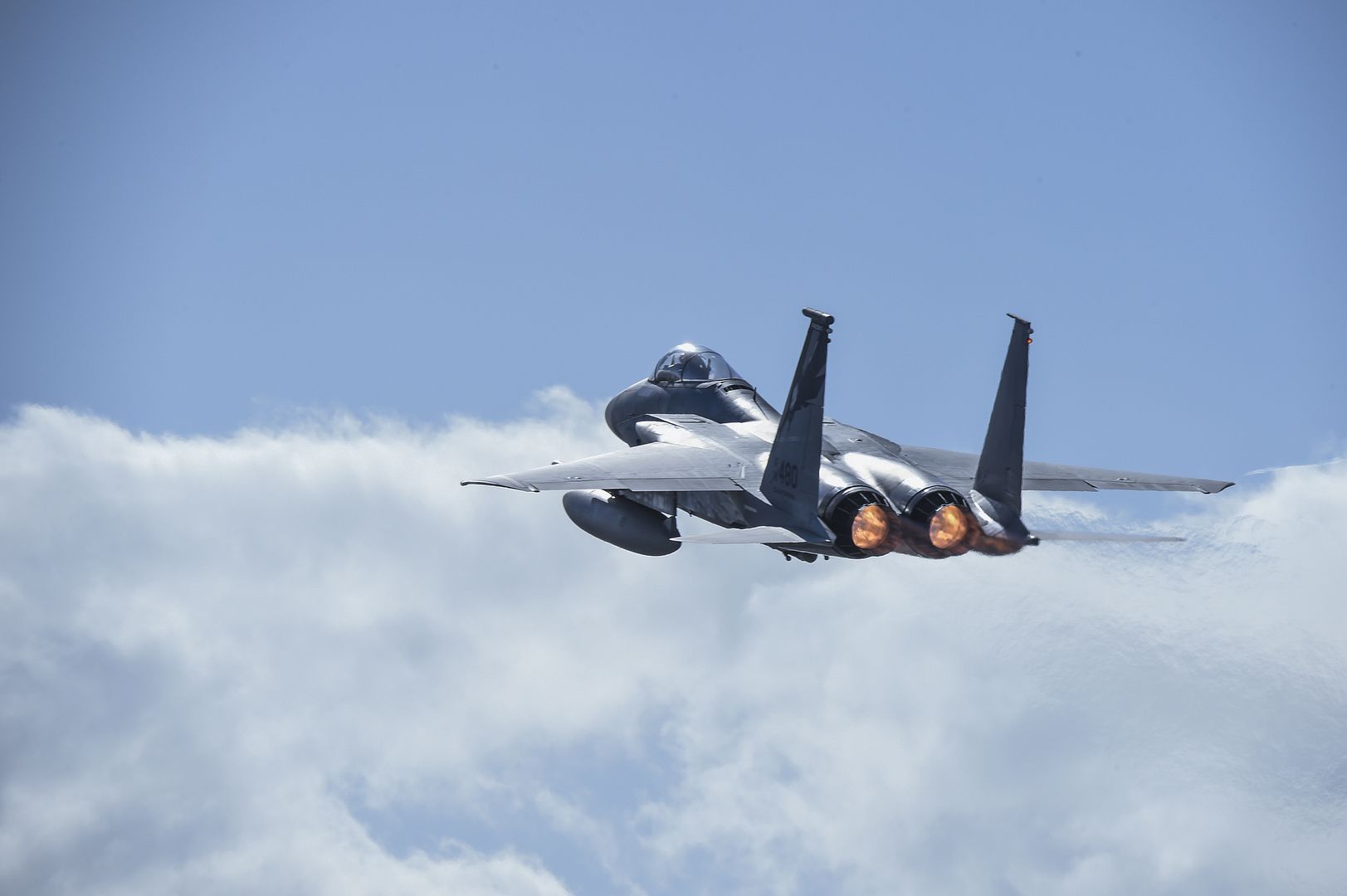
KORAT ROYAL THAI AIR FORCE BASE, Thailand --
U.S., Thai and Singaporean servicemembers commemorated the conclusion of another successful Pacific Air Forces sponsored, multilateral aerial exercise with a ceremony here March 31.
Officiating the closing ceremony were Royal Thai air force Air Chief Mashal Surasak Toongtong, Chief of the Air Staff for the RTAF, Republic of Singapore air force Maj. Gen. Mervyn Tan Wei Ming, Chief of the Air Force for the RSAF, and U.S. Air Force Maj. Gen. James Eifert, Air National Guard assistant to the Commander, Pacific Air Forces.
Royal Thai air force Group Captain Supijjarn Thamwatharsaree, accompanied by U.S. Air Force Lt. Col. James McFarland and Republic of Singapore air force Colonel Chan Ching Hao, exercise directors for Cope Tiger 17, addressed participants during the ceremony.
"Our friendly relations and close cooperation have been extended at all levels through various activities," said Thamwatharsaree at the ceremony. "And, Cope Tiger, a solid example of such cooperation has improved our operational skills and experience of the Airmen among our Air Forces and created a brotherhood that will continue to symbolize our excellent cooperation and friendship among our nations for years to come."
The teamwork and foundation of interoperability built through previous iterations of Cope Tiger allows ensuing exercises to provide new learning experiences, especially with such a variety of forces working so closely together.
"We've done an absolutely excellent job this year," said McFarland. ?It is amazing to see how this exercise has evolved over the years and I think we'll be able to take this exercise to bigger and better places in the coming years.?
Despite some of the weather challenges, over 730 flight hours were logged and 812 sorties flown over the two-week exercise.
?But, to me, those numbers don't tell the full story,? said Hao. ?It doesn't tell the story of the professionalism and effort that we've all exhibited throughout this exercise. It is not easy, with three different air forces coming from very different operating environments. Our ability to come together has really set the bar high for years to come.?
One of the most notable successes during this year's iteration of Cope Tiger was the first integration of the Command and Control (C2) Intelligence Surveillance and Reconnaissance cell which designated a dedicated intel person to mission commanders for mission planning.
?Every year the goal during Cope Tiger is to increase the complexity and realism, which then increases partner capacity,? said Mr. Paul Pladson, deputy chief of the Intelligence Surveillance and Reconnaissance war plan integration branch at Headquarters, Pacific Air Forces. ?The intel mission planning cell provides critical intel support for mission planning which is important because intel is the driving force behind operations.?
Perfecting wartime tactics is not the only activity during Cope Tiger. In addition to working together as military forces, U.S. servicemembers teamed up with their Thai and Singaporean counterparts and volunteered their time for a cultural exchange at a local school. They collected more than $5,000 among themselves and donated books, school supplies and sports equipment such as soccer balls, volleyballs and kickballs.
In his closing comments, Toongtong thanked all participants for their hard work and dedication.
?I am delighted that the result of the training was successful and increased our participants' experiences and efficiencies,? said Toongtong. ?And I hope that this exercise will always maintain a long lasting goodwill and friendship to our personnel at all levels.?
Approximately 220 U.S. personnel participated in the exercise along with approximately 1,000 service members from Thailand and Singapore. The exercise involved a combined total of 76 aircraft and 43 air defense assets from the three participating countries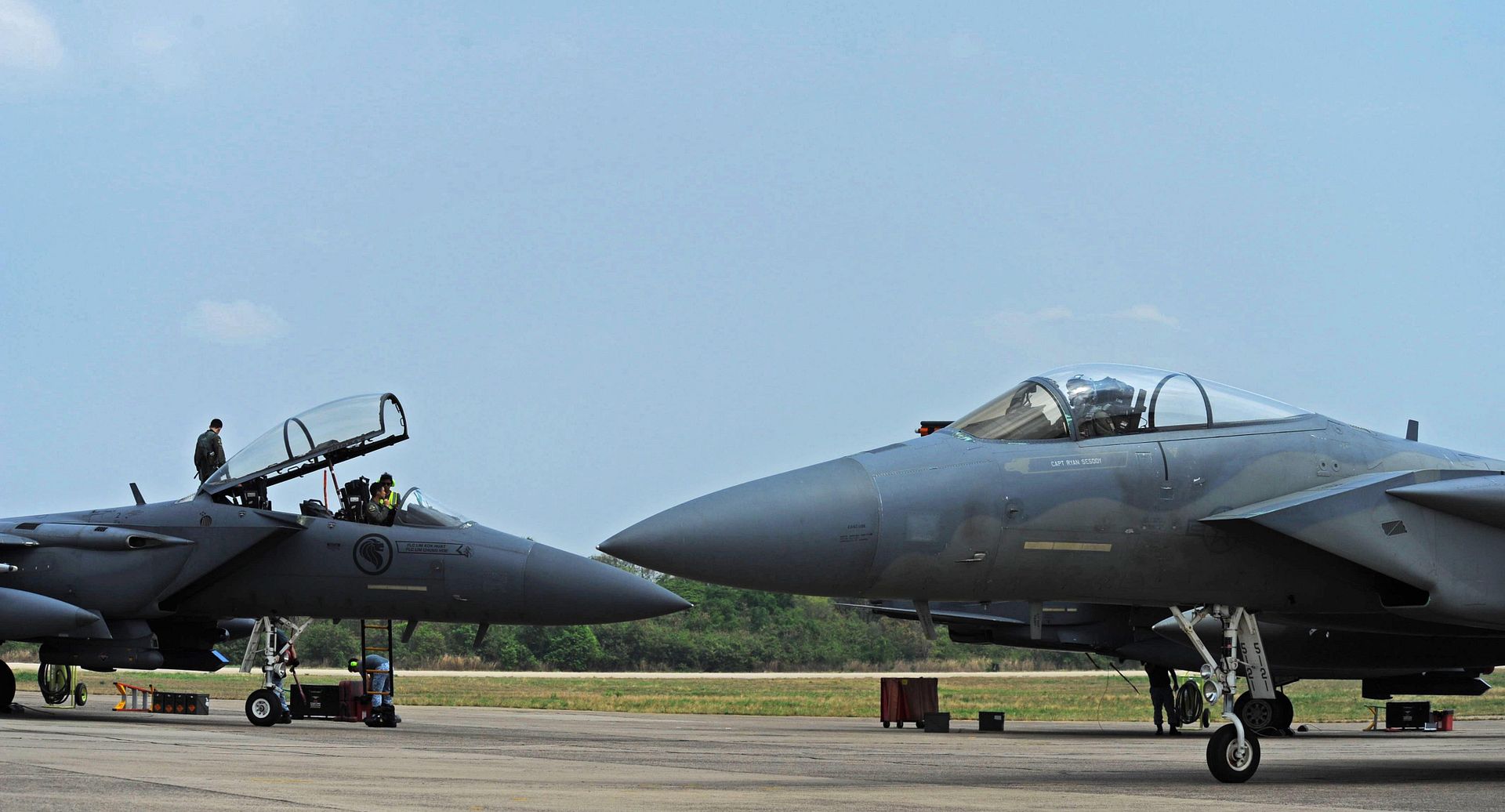
EAST CHINA SEA (April 3, 2017)
Aviation Boatswain's Mate (Handling) Airman Matthew Titus signals an AV-8B Harrier assigned to the "Tomcats" of Marine Attack Squadron (VMA) 311 to take off from the flight deck of the amphibious assault ship USS Bonhomme Richard (LHD 6). The ship is the flagship of it's expeditionary strike group, which is on a routine patrol, operating in the Indo-Asia-Pacific region to enhance warfighting readiness and posture forward as a ready-response force for any type of contingency. U.S. Navy photo by Mass Communication Specialist 2nd Class Diana Quinlan (Released)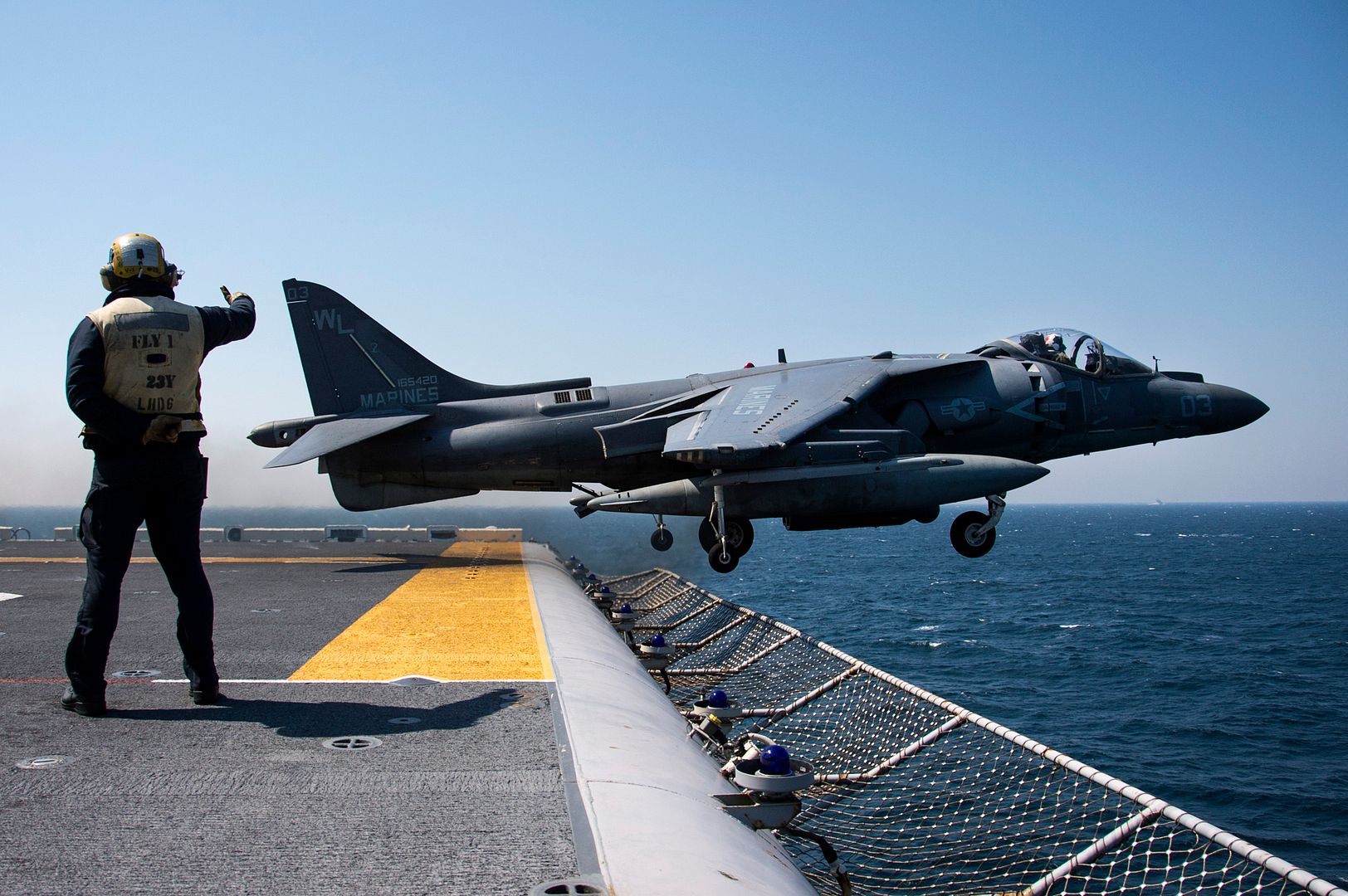
ORLANDO, Fla., April 3, 2017 /PRNewswire/ -- Lockheed Martin's (NYSE: LMT) Long Range Anti-Ship Missile (LRASM) was successfully released from a U.S. Navy F/A-18E/F Super Hornet at NAS Patuxent River, Maryland.
The jettison release of the first LRASM from the Super Hornet is used to validate the aerodynamic separation models of the missile. This successful test event paves the way for flight clearance to conduct captive carry integration testing scheduled for mid-year at the Navy Air Weapons Station (NAWS) China Lake, California.
"The first time event of releasing LRASM from the F/A-18E/F is a major milestone towards meeting early operational capability in 2019," said Mike Fleming, Lockheed Martin LRASM program director. "The program is executing the integration and test contract, maturing subsystems and proving flight worthiness."
LRASM is designed to detect and destroy specific targets within groups of ships by employing advanced technologies that reduce dependence on intelligence, surveillance and reconnaissance platforms, network links and GPS navigation.
Once operational, LRASM will play a significant role in ensuring military access to operate in open ocean/blue waters, owing to its enhanced ability to discriminate and conduct tactical engagements from extended ranges.
LRASM is a precision-guided, anti-ship standoff missile based on the successful Joint Air-to-Surface Standoff Missile - Extended Range (JASSM-ER). It is designed to meet the needs of U.S. Navy and Air Force warfighters in anti-access/area-denial threat environments. The air-launched variant provides an early operational capability for the Navy's offensive anti-surface warfare Increment I requirement to be integrated onboard the U.S. Air Force's B-1B in 2018 and on the U.S. Navy's F/A-18E/F Super Hornet in 2019.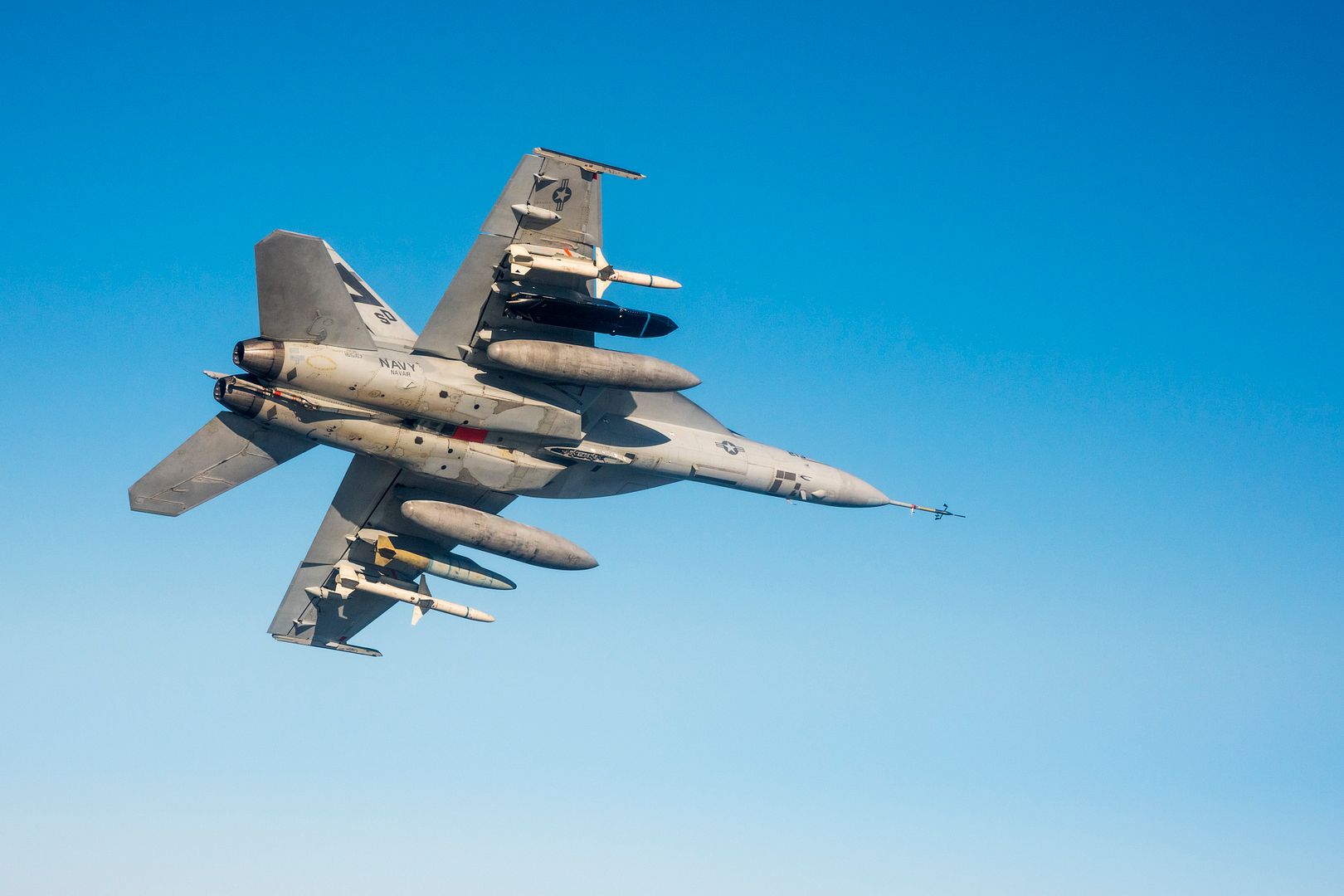
SEATTLE, Apr. 3, 2017 ? Boeing [NYSE: BA], the U.S. Navy, the Royal Australian Air Force and the United Kingdom Royal Air Force will continue modernizing global maritime patrol capabilities through a $2.2 billion contract awarded March 30 for at least 17 P-8A Poseidon aircraft.
The agreement also includes options for 32 additional aircraft, as well as money for long-lead parts for future orders. After exercising all options, the total contract value will be $6.8 billion. This comprehensive award reflects a commitment by Boeing and the Navy to achieve pricing and production stability, two keys of successful program performance.
?The P-8A is a textbook example of Boeing?s commercial derivative expertise,? said Jamie Burgess, vice president of Boeing Military Aircraft?s Mobility, Surveillance & Engagement division and the P-8 program manager. ?Every day our customers get to fly incredible aircraft that perform exceptionally well and are built by the best of Boeing.?
The Navy will receive 11 aircraft, while Australia will expand its P-8A fleet with four more. The U.K.?s first two P-8A jets are part of the agreement, with first delivery set for 2019.
Boeing so far has delivered 53 Poseidons to the Navy and two to the Royal Australian Air Force.
Based on Boeing?s Next-Generation 737-800 commercial airplane, the P-8A offers the world?s most advanced anti-submarine, anti-surface warfare and intelligence, surveillance and reconnaissance capabilities. The U.S. Navy has deployed multiple squadrons around the globe since operations began in 2013, accumulating more than 96,000 flight hours to date.
The Indian Navy currently flies the P-8I variant of the aircraft. They have received eight aircraft to date and in July 2016 signed a contract for four additional P-8Is.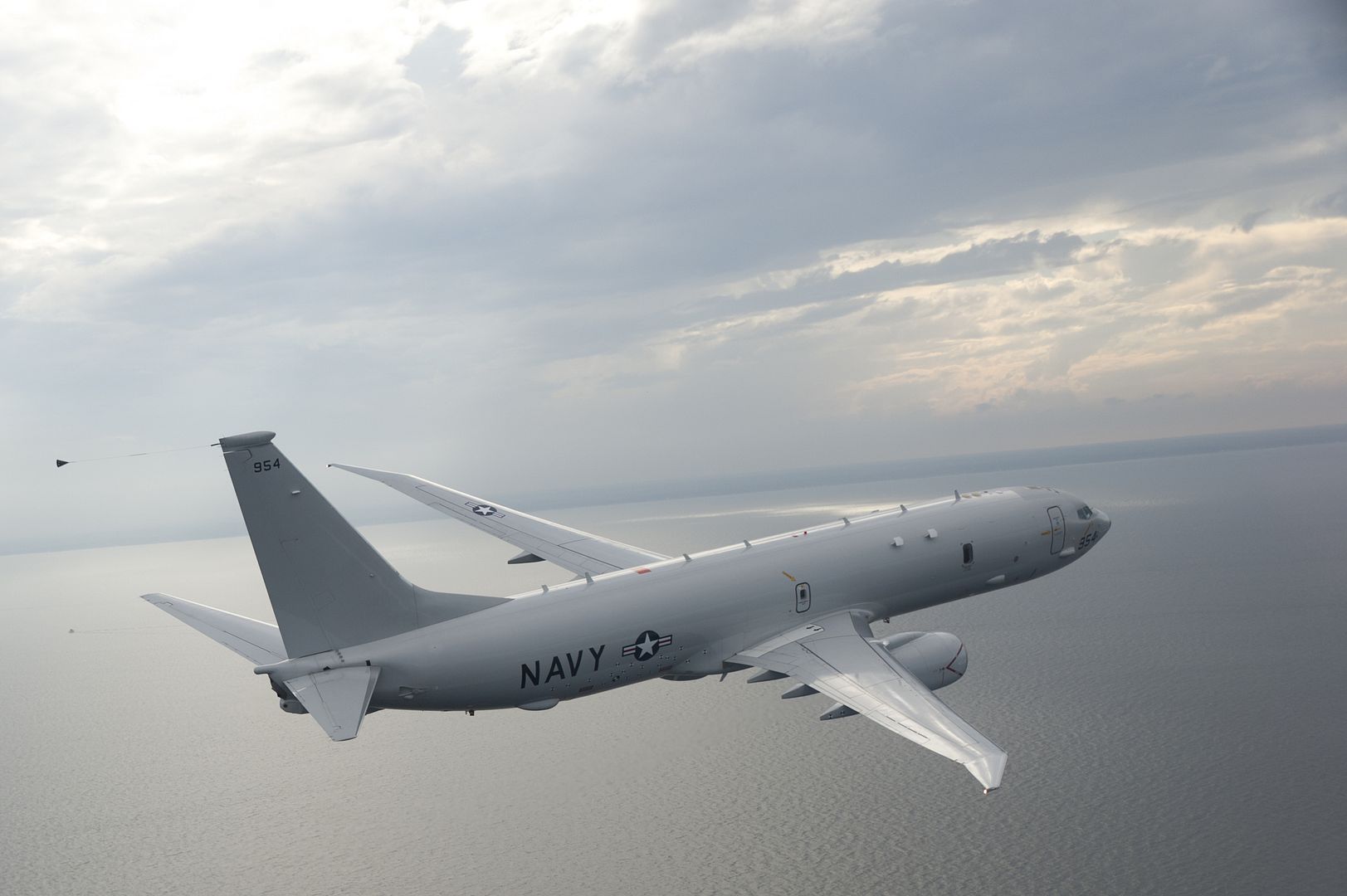
-
 Main AdminAn F-22 Raptor from Tyndall Air Force Base, Fla. flies over the Gulf of Mexico, April 1, 2017. The Raptor was taking part in a flight alongside a KC-135 Stratotanker to show appreciation to the employers of Guard and Reserve Airmen. (U.S. Air Force photo by Airmen 1st Class Cody R. Miller/Released)
Main AdminAn F-22 Raptor from Tyndall Air Force Base, Fla. flies over the Gulf of Mexico, April 1, 2017. The Raptor was taking part in a flight alongside a KC-135 Stratotanker to show appreciation to the employers of Guard and Reserve Airmen. (U.S. Air Force photo by Airmen 1st Class Cody R. Miller/Released)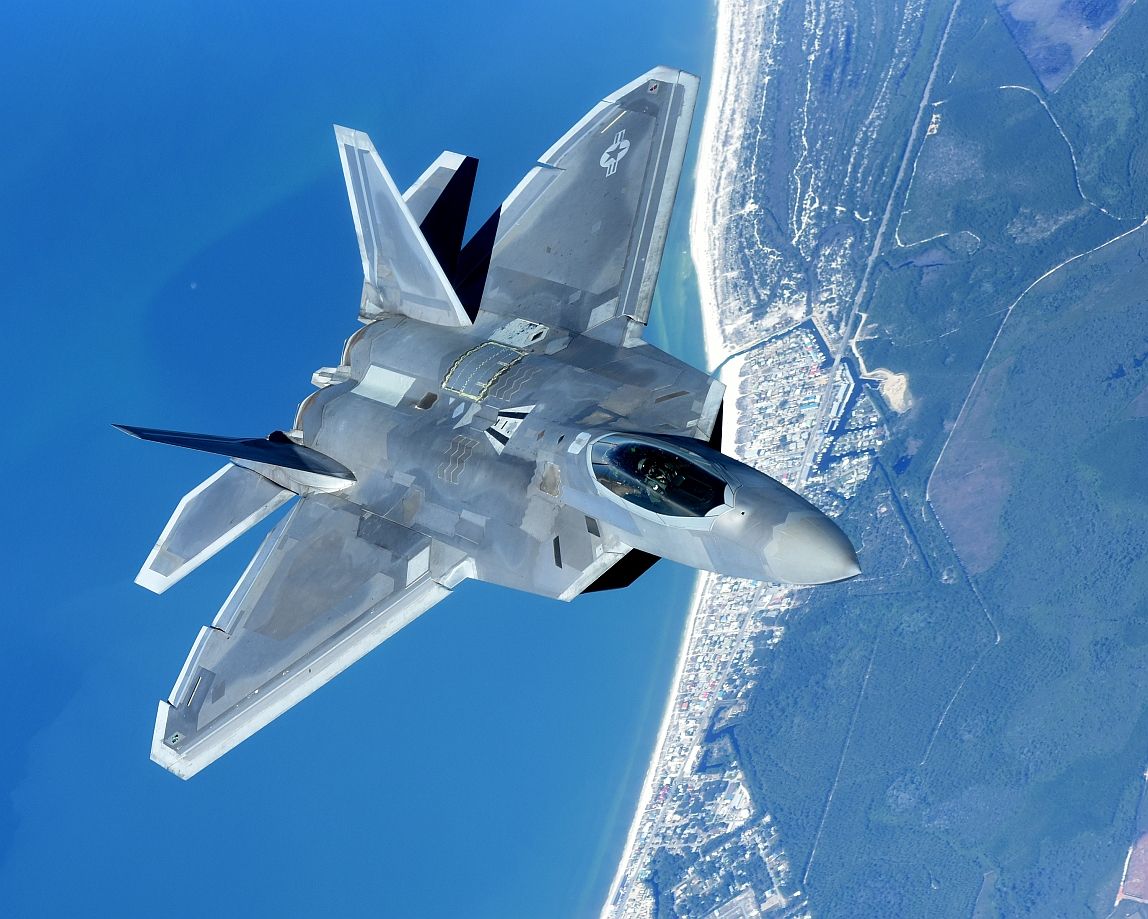
A 325th Fighter Wing F-22 Raptor performs a flight over Tyndall Air Force Base, Fla., April 1, 2017. The flight was part of an initiative to show appreciation for Guard and Reserve partners that employ citizen Airmen. (U.S. Air Force photo by Airman 1st Class Cody R. Miller/Released)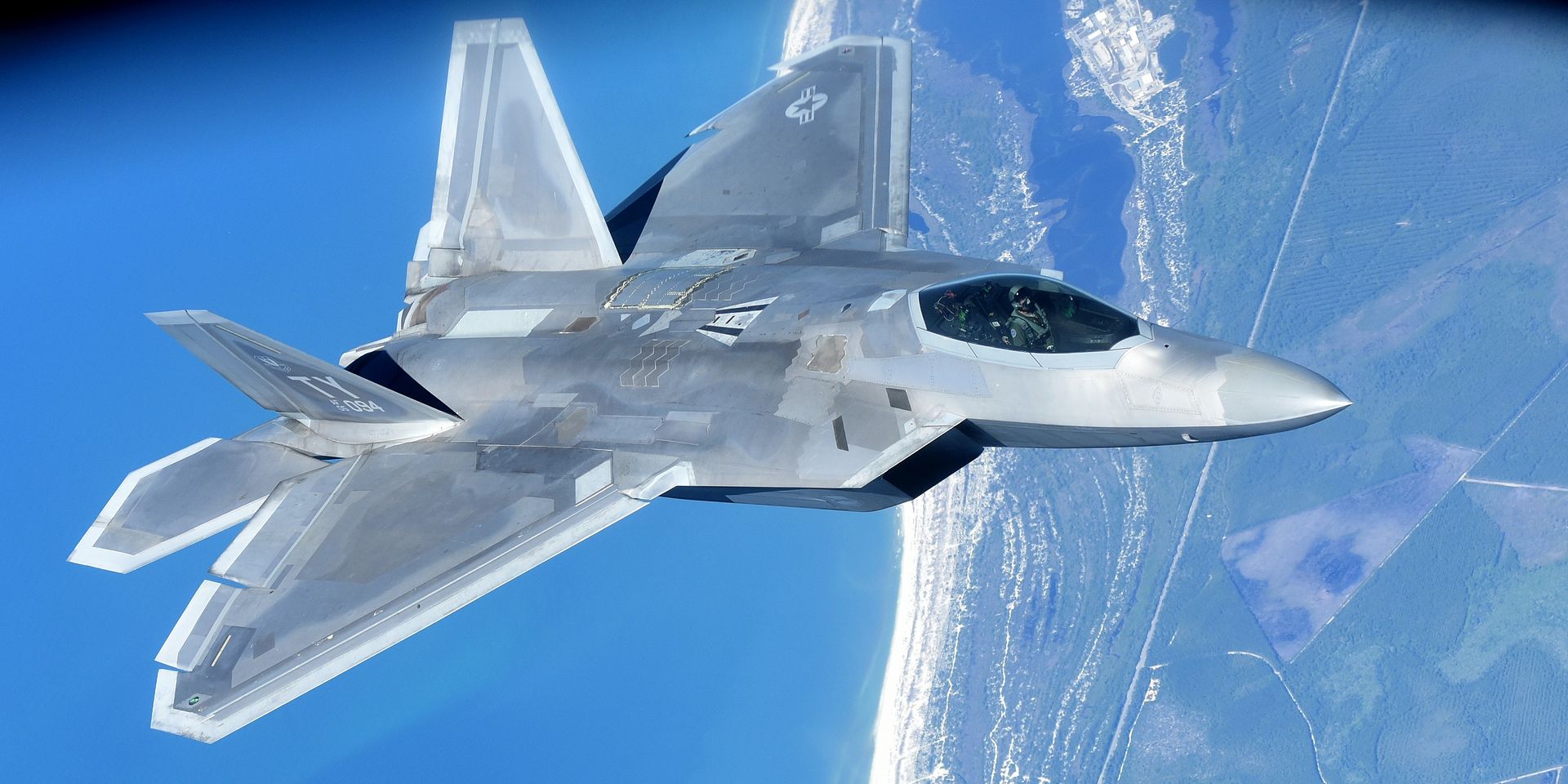
A 325th Fighter Wing F-22 Raptor soars over the Gulf of Mexico, April 1, 2017. The F-22, a critical component of the Global Strike Task Force, is designed to project air dominance, rapidly and at great distances and defeat threats attempting to deny access to our nation's Air Force, Army, Navy and Marine Corps. (U.S. Air Force photo by Airman 1st Class Cody R. Miller/Released)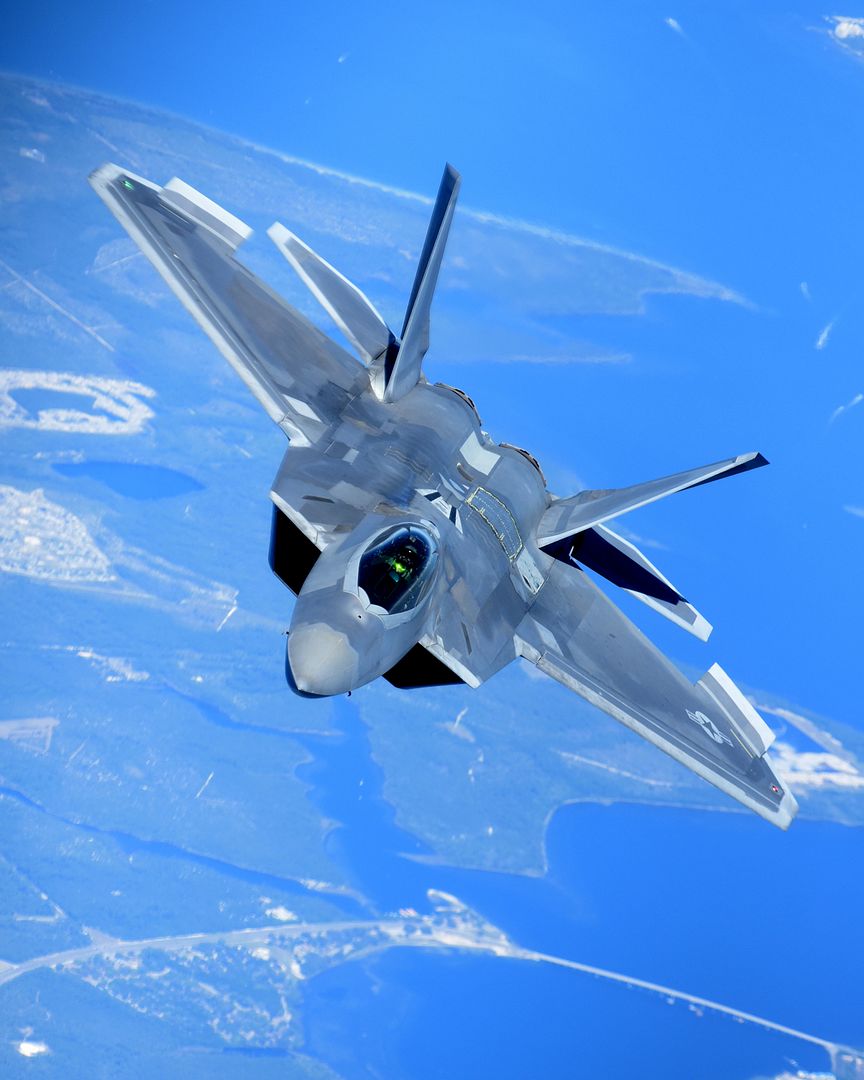
A U.S. Marine Corps AH-1Z Viper assigned to Marine Aviation Weapons and Tactics Squadron One (MAWTS-1) prepares to land during a forward arming refueling point (FARP) exercise in support of Weapons and Tactics Instructor (WTI) course 2-17 at Yuma, Ariz., April 3, 2017. The FARP exercise focused on refueling and rearming aircraft expeditiously. WTI is a seven-week training event hosted by MAWTS-1 cadre, which emphasizes operational integration of the six functions of Marine Corps aviation in support of a Marine Air Ground Task Force and provides standardized advanced tactical training and certification of unit instructor qualifications to support Marine Aviation Training and Readiness and assists in developing and employing aviation weapons and tactics. (U.S. Marine Corps photo by Cpl. AaronJames B. Vinculado)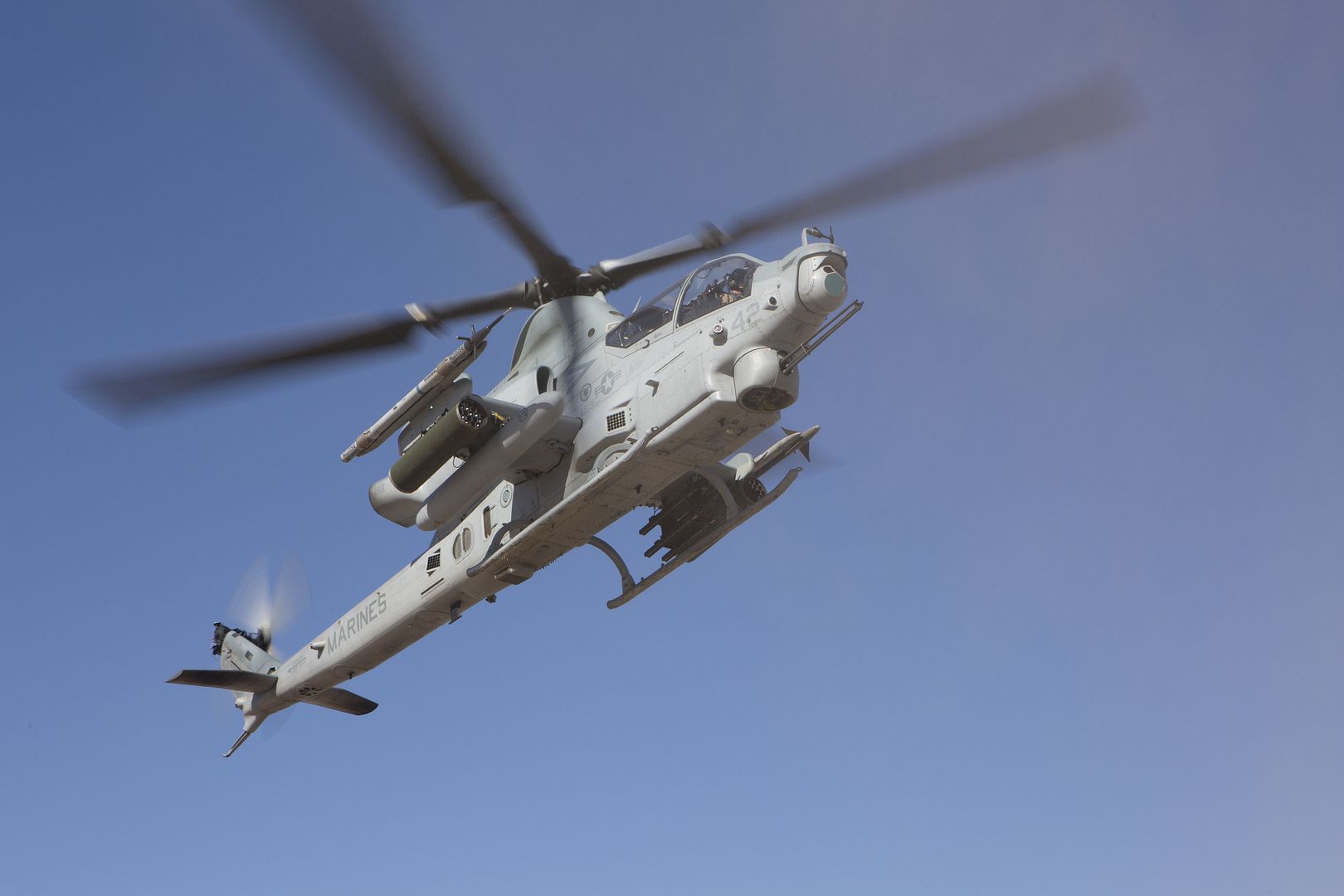
U.S. Marine Corps F-35B II Lightning assigned to Marine Aviation Weapons and Tactics Squadron One (MAWTS-1) taxis on the runway after a hot load during Weapons and Tactics Instructor Course (WTI) 2-17 at Marine Corps Air
Station Yuma, Ariz., April 4, 2017. The ordnance loading exercise focused on loading the aircraft while the pilot is onboard and the engine is running which provides the Marine Corps with a capability to project Marine airpower forward on the battlefield while decreasing aircraft turnaround time and increasing sortie generation.
(U.S. Marine Corps photo by Staff Sgt.Artur Shvartsberg/MAWTS-1 Combat Camera)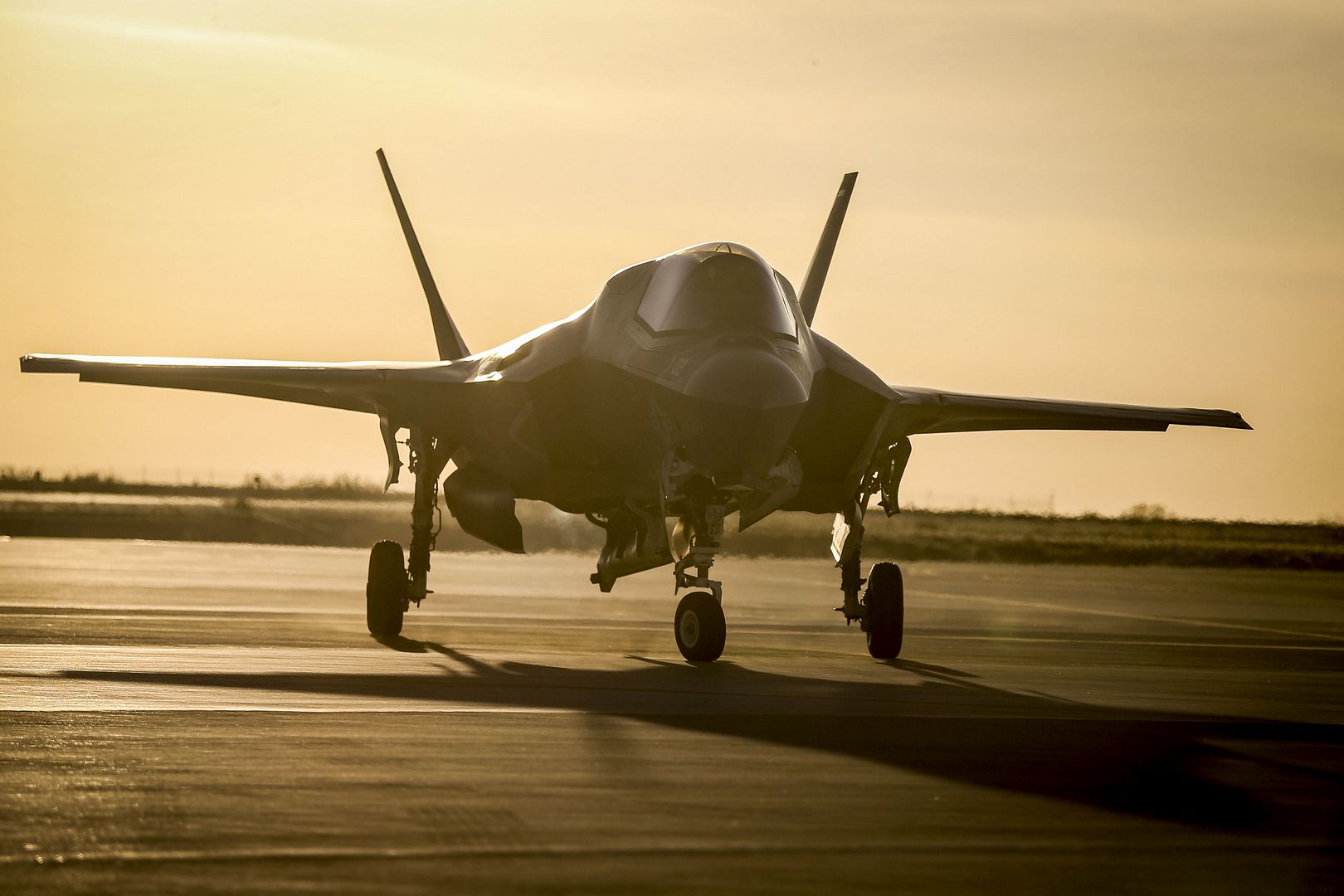
An F-15C Eagle from the 144th Fighter Wing, California Air National Guard, approaches a KC-135 Stratotanker, from the Utah Air National Guard, for refueling during a sortie while participating in Sentry Aloha 17-03. Sentry Aloha is an ongoing series of combat exercises hosted by the Hawaii Air National Guard and involves a variety of fighter and support aircraft. (Air National Guard Photographs by Master Sgt. David J. Loeffler}

STRATFORD, Conn., April 4, 2017 /PRNewswire/ -- Lockheed Martin (NYSE: LMT) today announced the CH-53K King Stallion program successfully passed its Defense Acquisition Board (DAB) review and achieved a Milestone C decision that enables low rate initial production funding.
"This affirmative Milestone C decision validates the maturity and the robust capability of the King Stallion in meeting the United States Marine Corps mission requirements," said Dr. Michael Torok, Sikorsky vice president, CH-53K Programs. "This establishes the CH-53K as a production program and marks another critical step toward our goal of delivering this tremendous capability to the USMC."
Numerous, successfully completed pre-requisites preceded the Milestone C decision. Supplier as well as prime contractor Production Readiness Reviews took place throughout 2016 to establish the program's readiness to move into low rate initial production. Aircraft maturity was established well in advance with over 400 flight hours achieved, and the October 2016 initial Operational Assessment by the USMC fully established the ability of the King Stallion to achieve critical mission flight and ground scenarios in the hands of active duty Marines. Overall, post evaluation interviews of aircrew, ground crew and flight surgeons revealed a high regard for the operational capability demonstrated by the King Stallion.
"We have just successfully launched the production of the most powerful helicopter our nation has ever designed. This incredible positive step function in capability is going to revolutionize the way our nation conducts business in the battlespace by ensuring a substantial increase in logistical throughput into that battlespace. I could not be prouder of our government-contractor team for making this happen," said Col Hank Vanderborght, U.S. Marine Corps program manager for the Naval Air Systems Command's Heavy Lift Helicopters program, PMA-261.
The CH-53K King Stallion provides unmatched heavy lift capability with three times the lift of the CH-53E that it replaces. With more than triple the payload capability and a 12-inch wider internal cabin compared to the predecessor, the King Stallion's increased payloads can range from multiple US Air Force standard 463L pallets to an internally loaded High Mobility Multipurpose Wheeled Vehicle (HMMWV) or a European Fennek armored personnel carrier, to up to three independent external loads at once. This provides extraordinary mission flexibility and system efficiency.
The King Stallion also offers enhanced safety features for the warfighter, including full authority fly-by-wire flight controls and mission management that reduce pilot workload and enable the crew to focus on mission execution as the King Stallion all but "flies itself." Other features include advanced stability augmentation, flight control modes that include attitude command-velocity hold, automated approach to a stabilized hover, position hold and precision tasks in degraded visual environments, and tactile cueing that all permit the pilot to focus confidently on the mission at hand.
Further, the CH-53K King Stallion has improved reliability and maintainability that exceeds 89% mission reliability with a smaller shipboard logistics footprint than the legacy CH-53E.
The U.S. Department of Defense's Program of Record remains at 200 CH-53K aircraft. The first six of the 200 are under contract and scheduled to start delivery next year to the USMC. Two additional aircraft, the first LRIP aircraft, are under long lead procurement for parts and materials, with deliveries scheduled to start in 2020. The Marine Corps intends to stand up eight active duty squadrons, one training squadron, and one reserve squadron to support operational requirements.
This press release contains forward looking statements concerning opportunities for development, production and sale of helicopters. Actual results may differ materially from those projected as a result of certain risks and uncertainties, including but not limited to changes in government procurement priorities and practices, budget plans, availability of funding and in the type and number of aircraft required; challenges in the design, development, production and support of advanced technologies; as well as other risks and uncertainties including but not limited to those detailed from time to time in Lockheed Martin Corporation's Securities and Exchange Commission filings.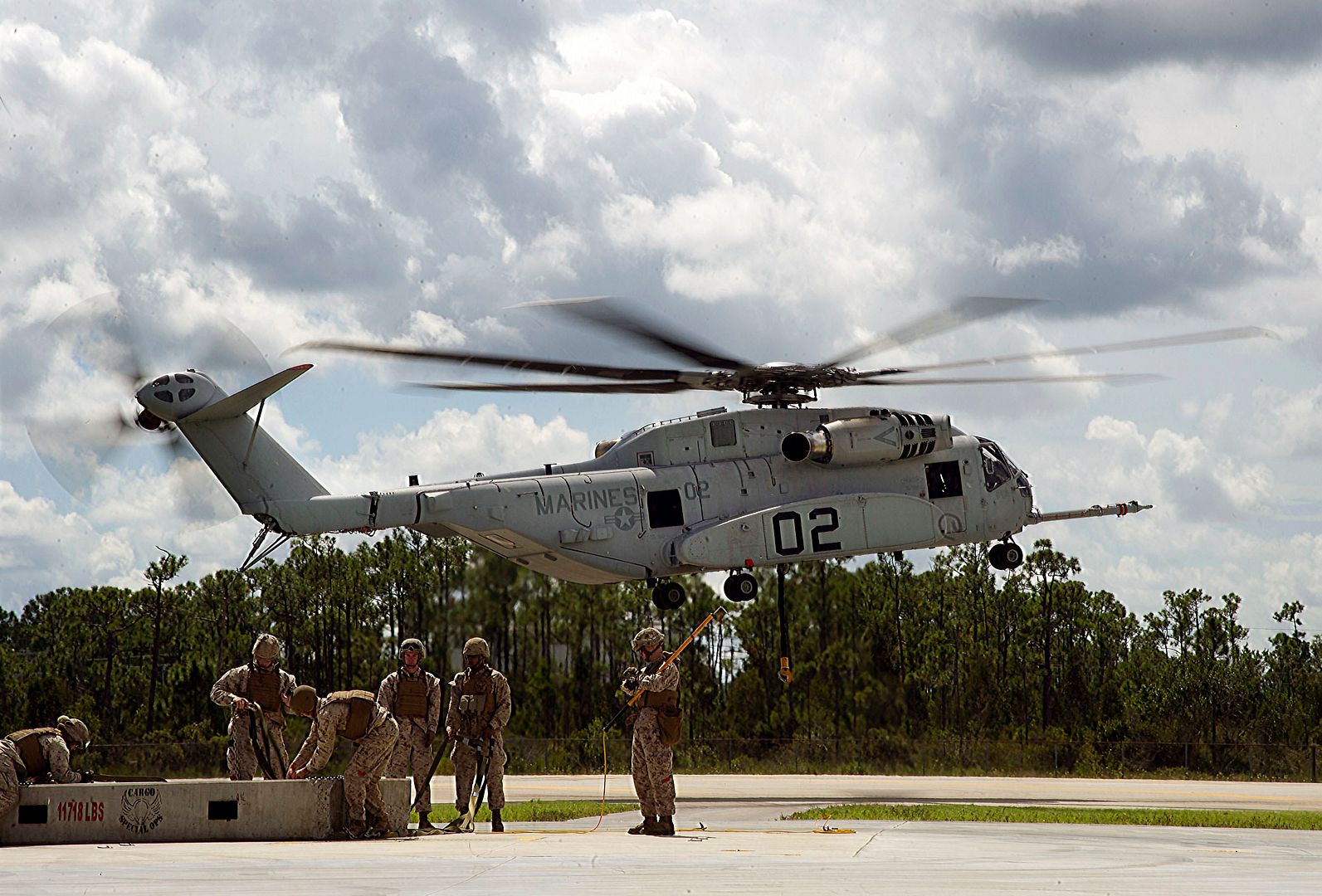
Naval Air Station Patuxent River, Md. ? April 4, 2017 ? The U.S. Navy?s MQ-4C Triton, built by Northrop Grumman Corporation (NYSE: NOC), completed formal lab testing and a successful first flight of an improved software suite that enhances the autonomous unmanned system?s operational capabilities and enables Early Operational Capability (EOC) deployment in early 2018.
The Navy conducted the first flight test of the software upgrade which is designed to enhance Triton?s capabilities including Traffic Alert and Collision Avoidance System (TCAS), multi-aircraft control and additional Multi-Function Active Sensor (MFAS) radar modes.
?The integration of this enhanced software suite expands Triton?s operational maritime intelligence, surveillance, reconnaissance, and targeting capabilities and moves it that much closer to qualification for operational missions in the pacific theater,? said Doug Shaffer, vice president, Triton programs, Northrop Grumman. ?These flight tests further demonstrate the value and vast potential of this system.?
The Navy?s MQ-4C Triton is a forward-deployed, land-based, autonomously operated system that provides a persistent maritime ISR capability using a multi-sensor mission payload (radar, electro-optical / infra-red / electronic support measures). The MQ-4C Triton provides real-time intelligence, surveillance and reconnaissance (ISR) including vessel detection, tracking and classification over vast ocean and coastal regions. Its robust mission sensor suite provides unprecedented persistent 360-degree maritime domain awareness. The aircraft can fly up to 24 hours at altitudes of up to 56,500 feet with an operational range of 8,200 nautical miles and can monitor 1 million square miles of ocean in a single flight.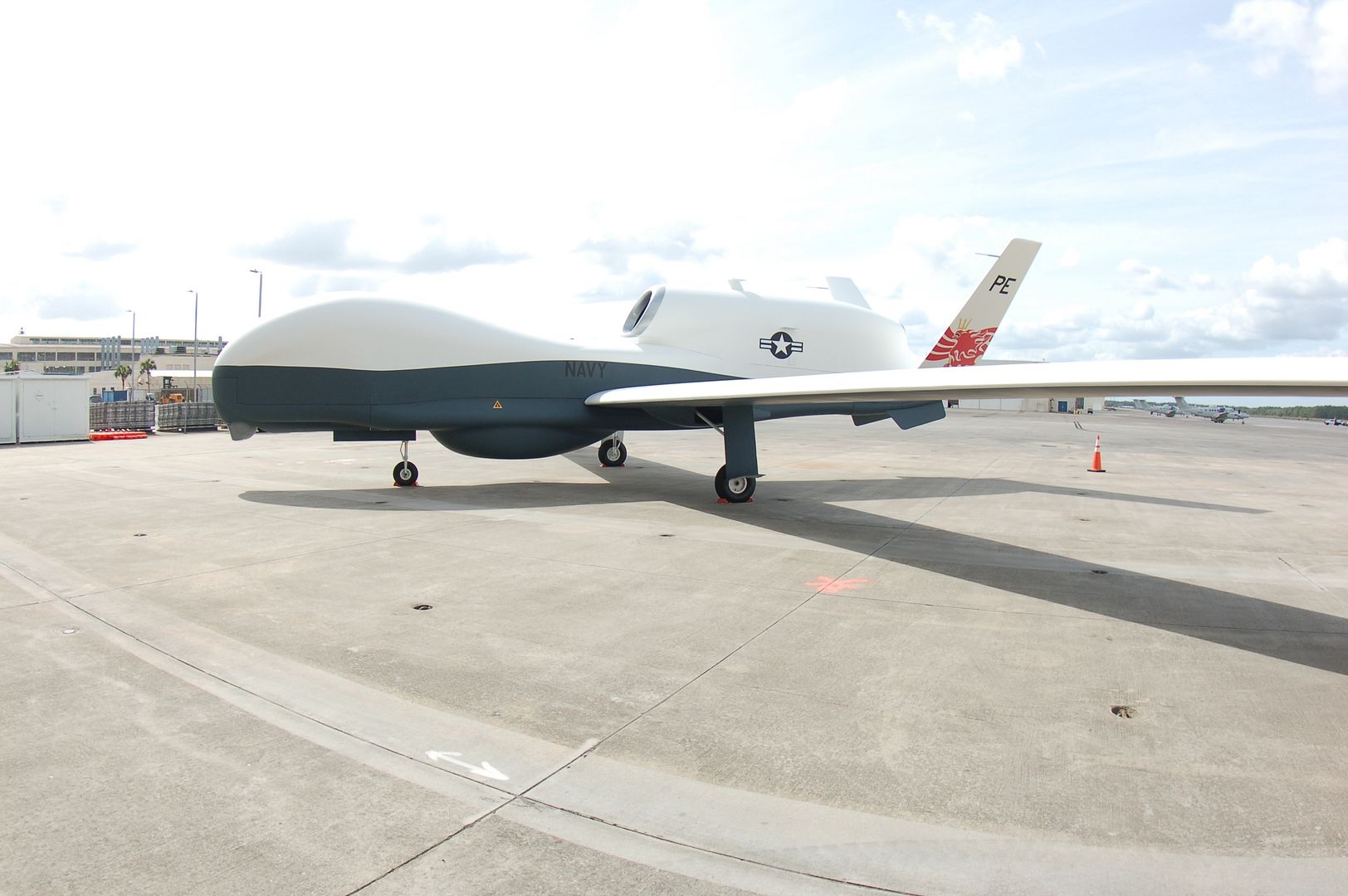
The Royal Canadian Air Force (RCAF) unveils the CF-18 Demonstration Jet for its 2017 season to celebrate Canada?s 150th anniversary of Confederation on April 4, 2017. The unveiling ceremony took place at 4 Wing Cold Lake, Alberta.
Photo: MCpl HJL MacRae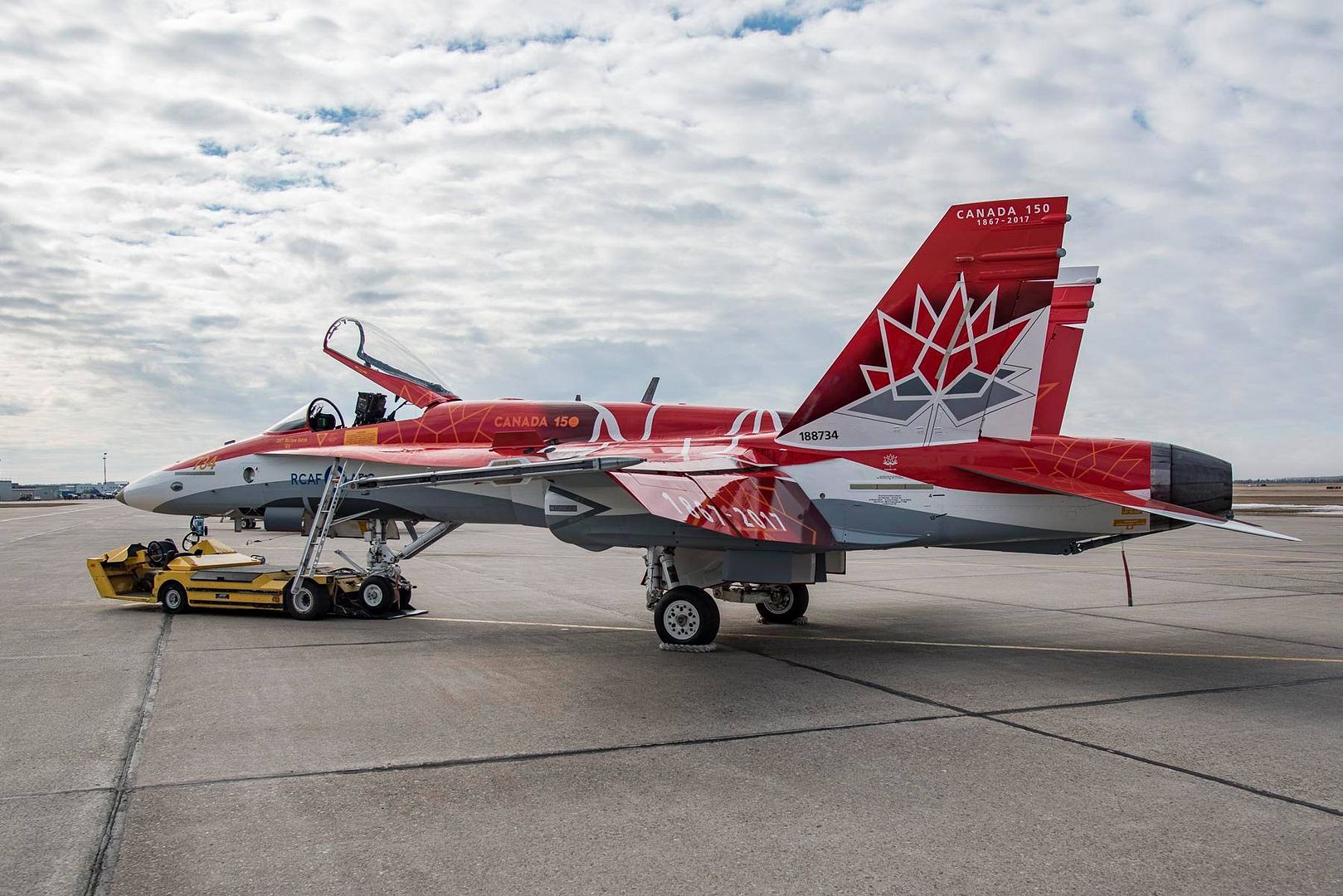
-
 Main AdminTwo U.S. Marine Corps UH-1Y Venoms fly in formation during an aerial gunnery refinement drill at Chocolate Mountain, Aerial Gunnery Range, Calif., April 5, 2017. Weapons and Tactics Instructor (WTI) 2-17 is a seven-week training event hosted by Marine Aviation Weapons and Tactics Squadron One MAWTS-1 cadre. MAWTS-1 provides standardized tactical training and certification of unit instructor qualifications to support Marine Aviation Training and Readiness and assists in developing and employing aviation weapons and tactics. (U.S. Marine Corps photo by Lance Cpl. Michaela Gregory)
Main AdminTwo U.S. Marine Corps UH-1Y Venoms fly in formation during an aerial gunnery refinement drill at Chocolate Mountain, Aerial Gunnery Range, Calif., April 5, 2017. Weapons and Tactics Instructor (WTI) 2-17 is a seven-week training event hosted by Marine Aviation Weapons and Tactics Squadron One MAWTS-1 cadre. MAWTS-1 provides standardized tactical training and certification of unit instructor qualifications to support Marine Aviation Training and Readiness and assists in developing and employing aviation weapons and tactics. (U.S. Marine Corps photo by Lance Cpl. Michaela Gregory)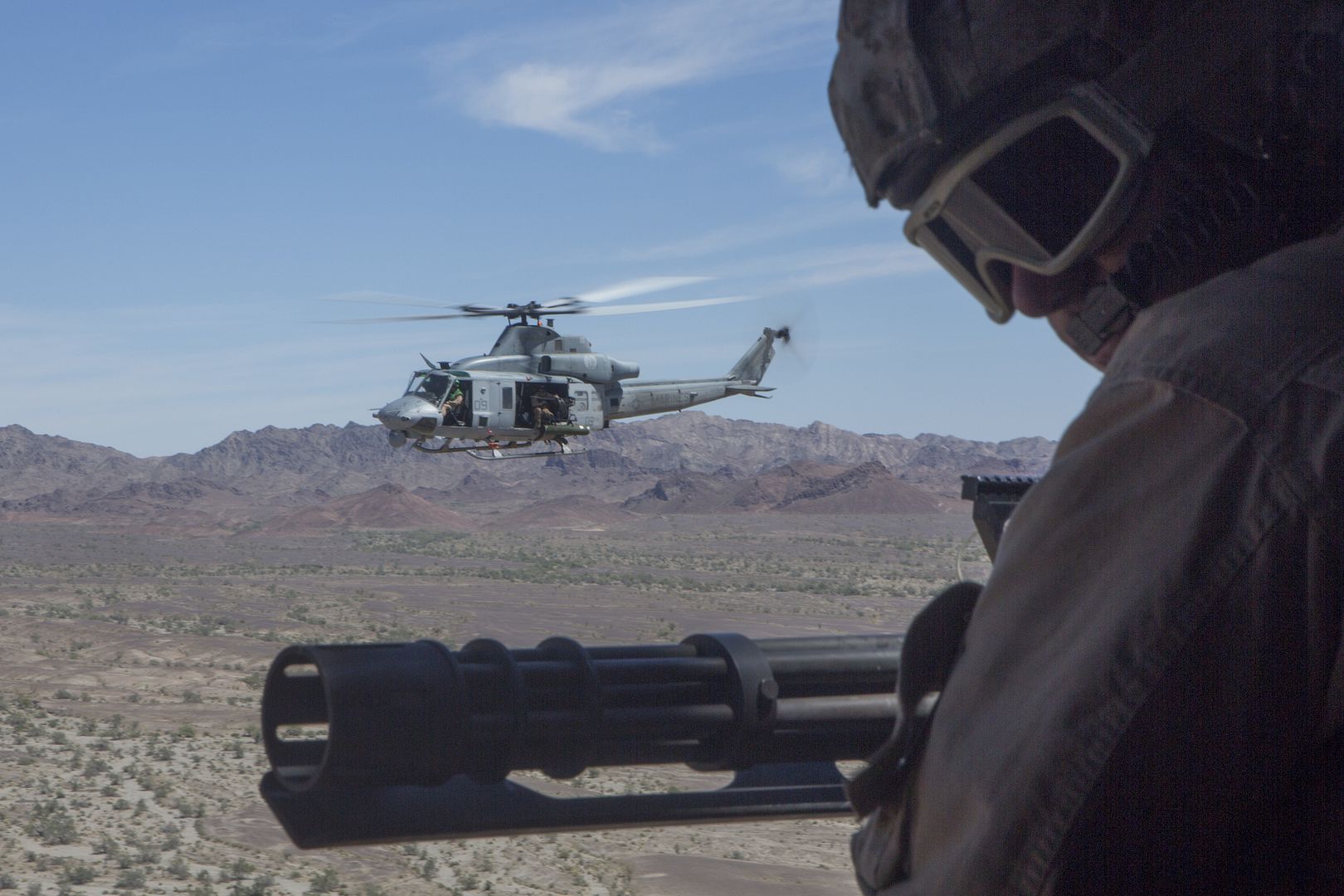
U.S. Marine Corps Huey pilots attending Weapons and Tactics Instructor Course (WTI) 2-17 maneuver a UH-1Y Venom during an aerial gunnery refinment drill at Chocolate Mountain, Aerial Gunnery Range, Calif., April 5, 2017. Weapons and Tactics Instructor Course (WTI) 2-17 is a seven-week training event hosted by Marine Aviation Weapons and Tactics Squadron One MAWTS-1 cadre. MAWTS-1 provides standardized tactical training and certification of unit instructor qualifications to support Marine Aviation Training and Readiness and assists in developing and employing aviation weapons and tactics. (U.S. Marine Corps photo by Lance Cpl. Michaela Gregory)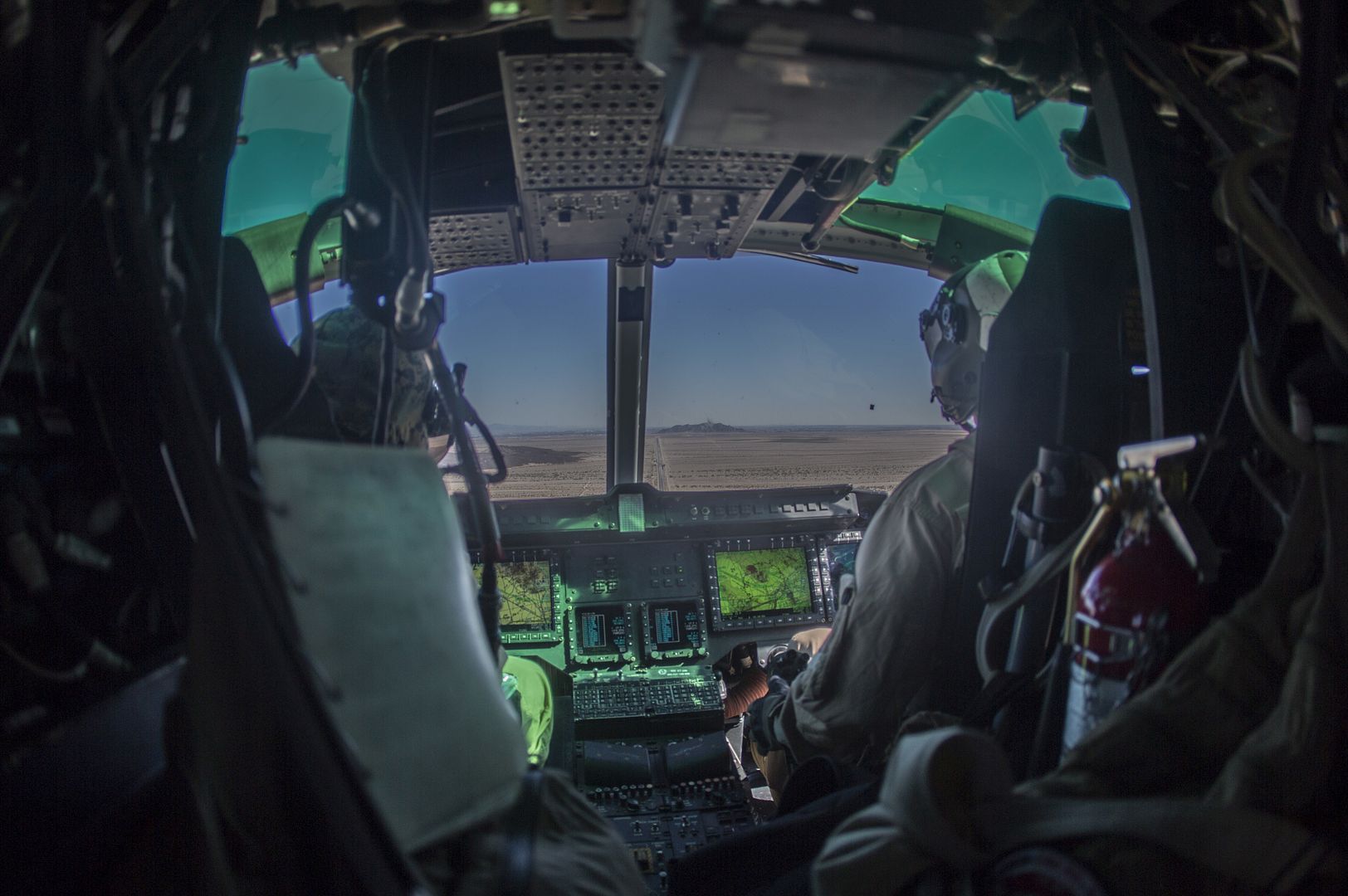
SOUTH CHINA SEA (April 5, 2017) Chief Aviation Boatswain?s Mate (Handling) Michael Dominguez, from Los Angeles, left, and Chief Aviation Boatswain?s Mate (Handling) Fernando Diaz, from Brooklyn, N.Y., direct the movement of an AV-8B Harrier, assigned to the Ridge Runners of Marine Medium Tiltrotor Squadron (VMM) 163, as it prepares for launch. Makin Island, the flagship for the Makin Island Amphibious Ready Group, with the embarked 11th Marine Expeditionary Unit, is operating in the Indo-Asia-Pacific region to enhance amphibious capability with regional partners and to serve as a ready-response force for any type of contingency. (U.S. Navy photo by Mass Communication Specialist 3rd Class Devin M. Langer)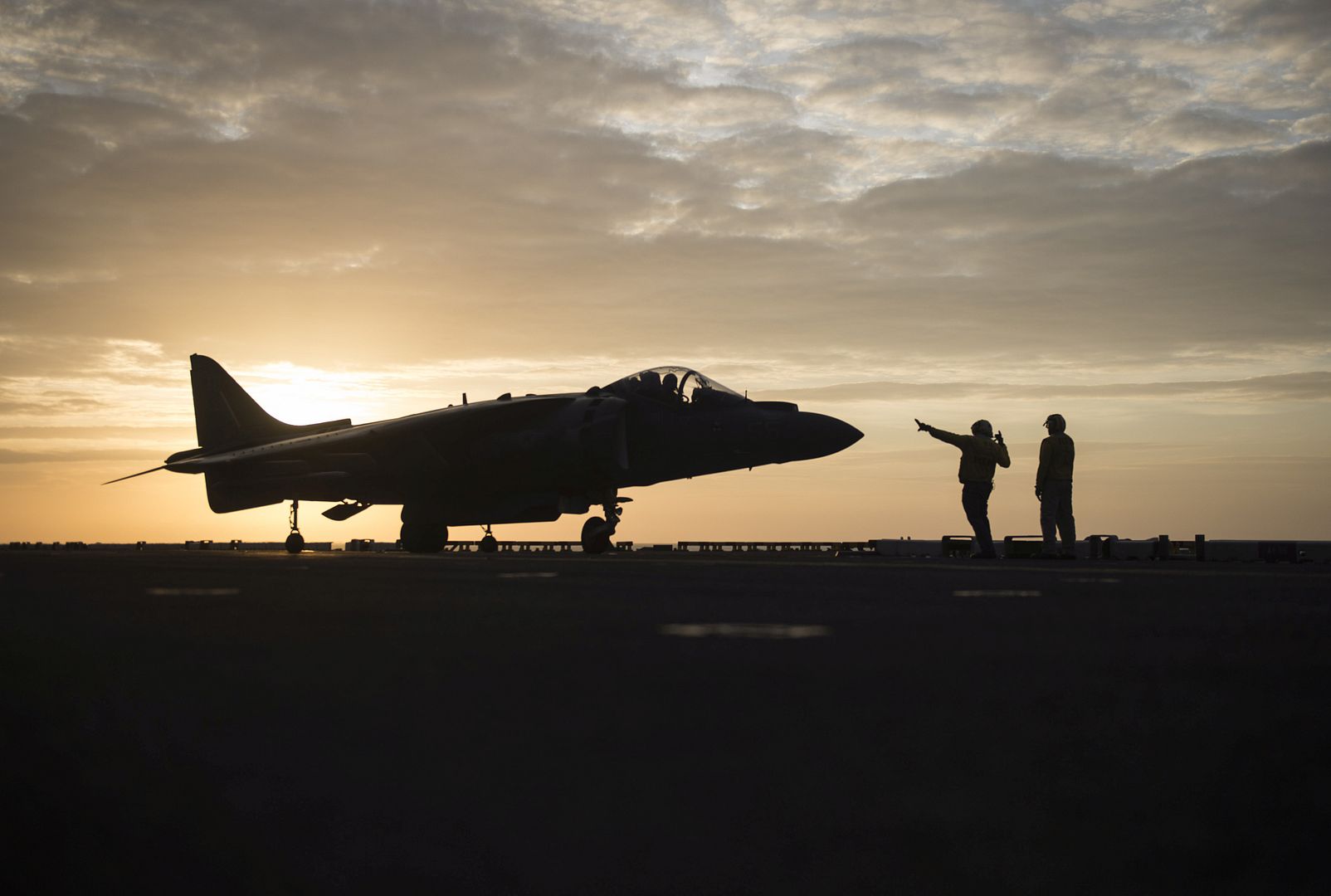
-
 Main AdminSOUTH CHINA SEA (April 5, 2017) An AV-8B Harrier, assigned to the Ridge Runners of Marine Medium Tiltrotor Squadron (VMM) 163, prepares to land on the flight deck of the amphibious assault ship USS Makin Island (LHD
Main AdminSOUTH CHINA SEA (April 5, 2017) An AV-8B Harrier, assigned to the Ridge Runners of Marine Medium Tiltrotor Squadron (VMM) 163, prepares to land on the flight deck of the amphibious assault ship USS Makin Island (LHD . Makin Island, the flagship for the Makin Island Amphibious Ready Group, with the embarked 11th Marine Expeditionary Unit, is operating in the Indo-Asia-Pacific region to enhance amphibious capability with regional partners and to serve as a ready-response force for any type of contingency. (U.S. Navy photo by Mass Communication Specialist 3rd Class Asher Allen)
. Makin Island, the flagship for the Makin Island Amphibious Ready Group, with the embarked 11th Marine Expeditionary Unit, is operating in the Indo-Asia-Pacific region to enhance amphibious capability with regional partners and to serve as a ready-response force for any type of contingency. (U.S. Navy photo by Mass Communication Specialist 3rd Class Asher Allen) 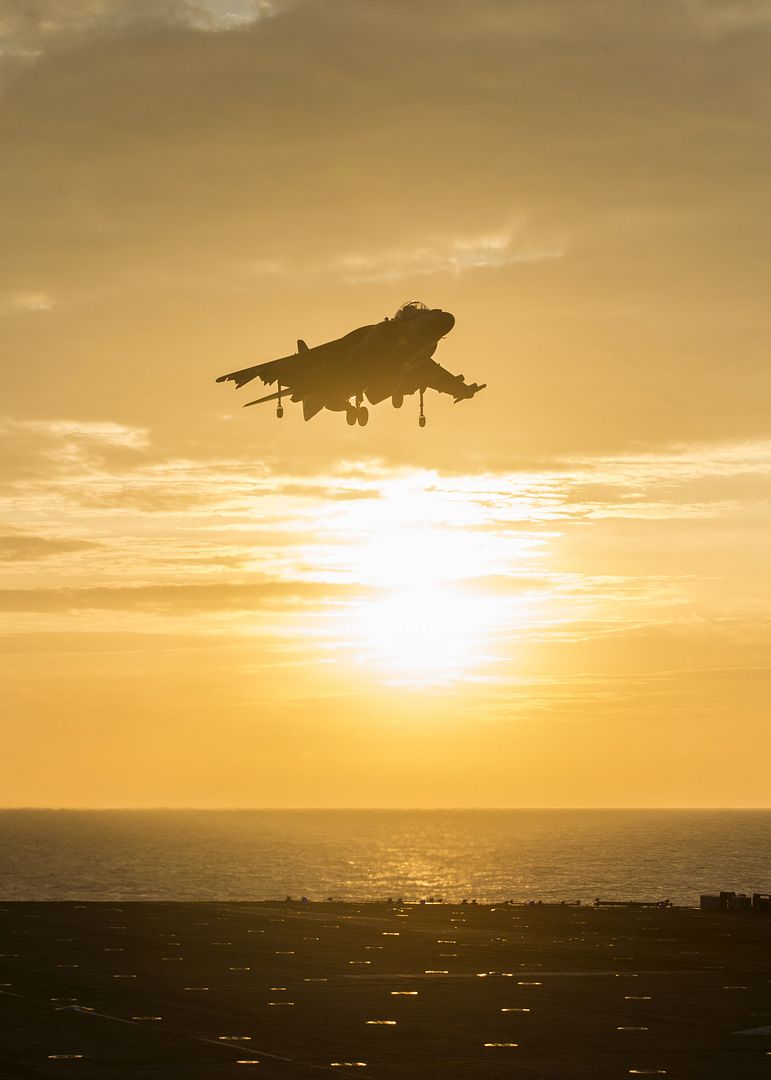
U.S. Marine Corps Marine Fighter Attack Squadron (VMFA) 121 conducts a hot reload on an F-35B Lightning II at Marine Corps Air Station Iwakuni, Japan, April 6, 2017. Marines loaded the F-35 while the pilot remained in the aircraft with the engine running. This training ensures the aircraft can reload as fast as possible if need be. (U.S. Marine Corps photo's by Lance Cpl. Jacob A. Farbo)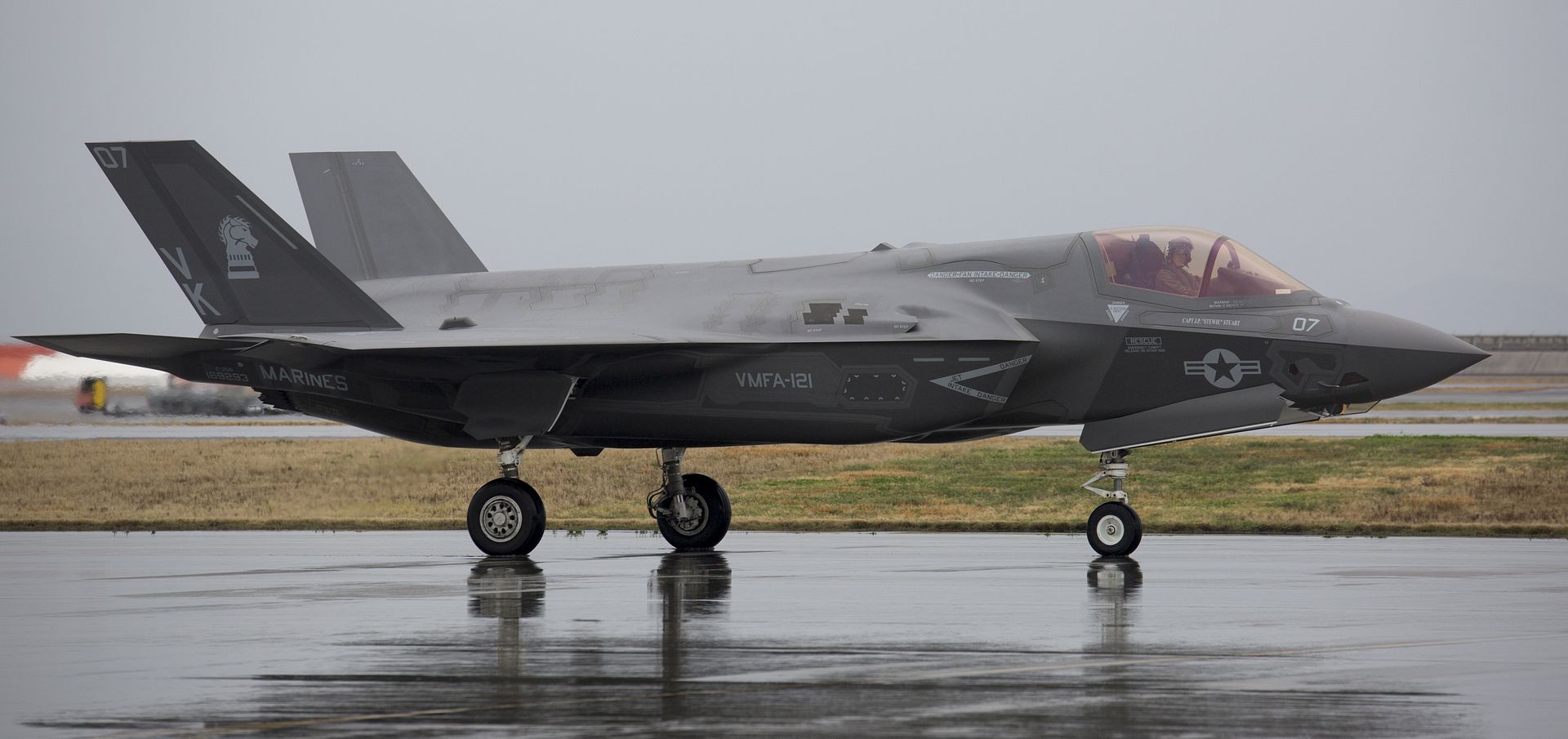

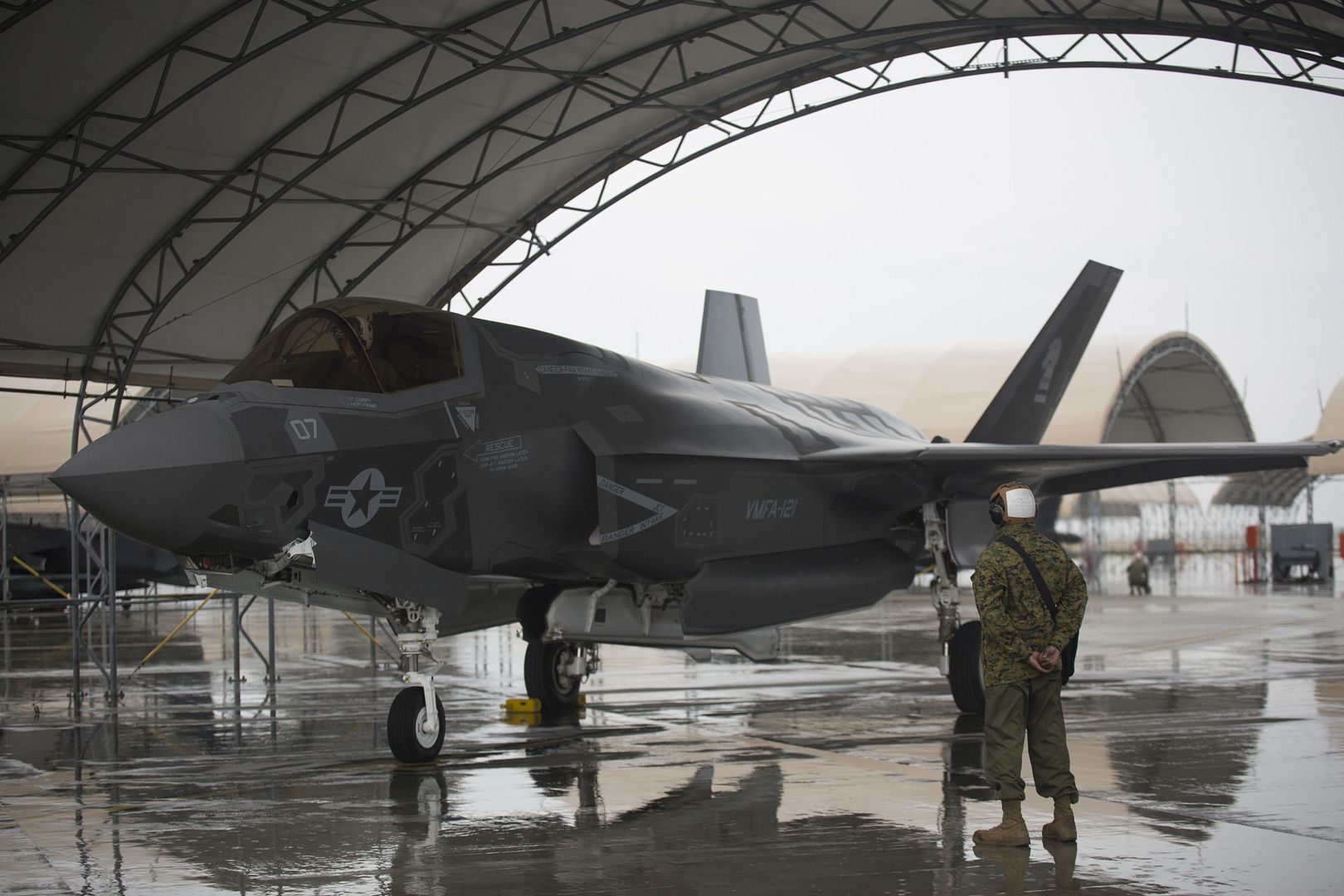
ATLANTIC OCEAN (April 4, 2017) An F/A-18E Super Hornet assigned to the ?Sidewinders? of Strike Fighter Squadron (VFA) 86 approaches the flight deck of the aircraft carrier USS Dwight D. Eisenhower (CVN 69). The ship and its carrier strike group are underway conducting a sustainment exercise in support of the Optimized Fleet Response Plan (OFRP). (U.S. Navy photo by Mass Communication Specialist 3rd Class Nathan T. Beard/Released)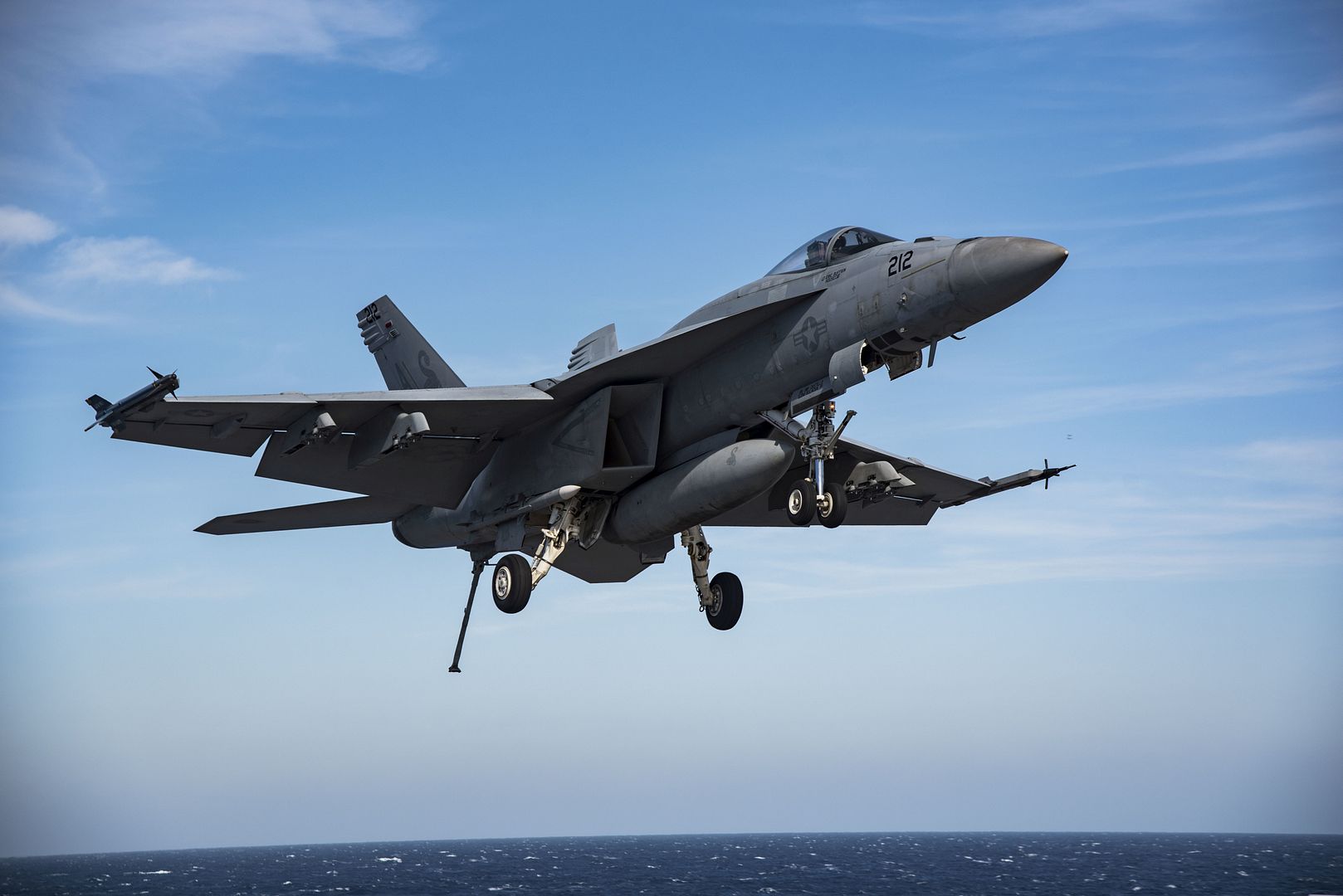
U.S. Marine Corps AH-1Z Venom attached to Marine Aviation Weapons and Tactics Squadron One (MAWTS-1) maneuvers during an urban close air support (UCAS) exercise in support of Weapons and Tactics Instructor Course (WTI) 2-17 at Yodaville, Ariz., April 6, 2017. The UCAS exercise was designed to focus on specific employment of tactical air and rotary wing offensive air support aviation assets in order to support the ground combat element scheme of maneuver. WTI is a seven-week training event hosted by MAWTS-1 cadre, which emphasizes operational integration of the six functions of Marine Corps aviation in support of a Marine Air Ground Task Force and provides standardized advanced tactical training and certification of unit instructor qualifications to support Marine Aviation Training and Readiness and assists in developing and employing aviation weapons and tactics. (U.S. Marine Corps Photo by Lance Cpl. Clare J. Shaffer)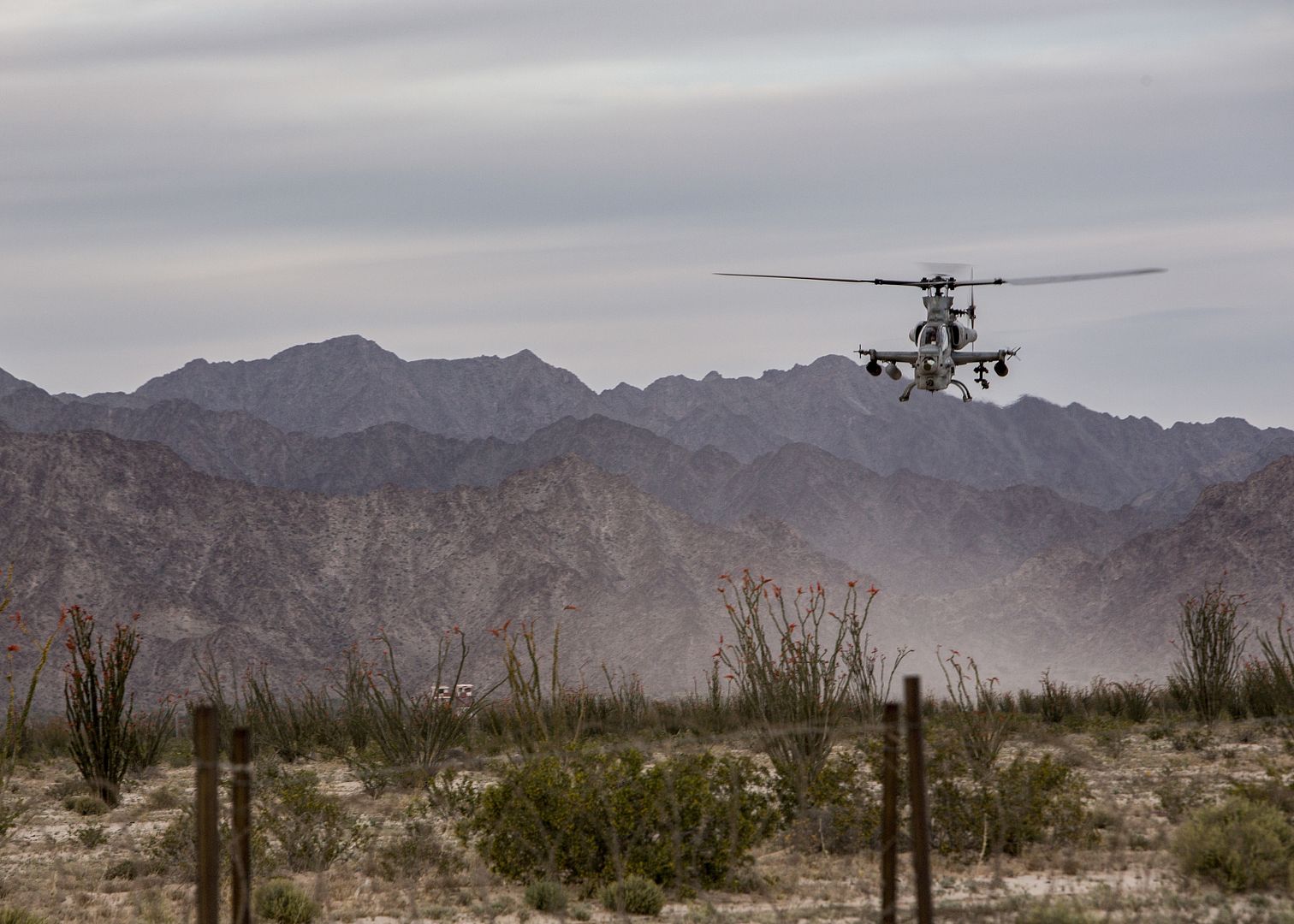
7 April 2017 Press Release
Madrid, April 7th, 2017- Airbus? A350-1000, MSN065 test aircraft, fitted with cabin, has completed a series of noise tests in Moron, south of Spain, between March 27 and April 5th, as part of its type certification flight test campaign, paving the way for entry into service on schedule before year end.
The aircraft, together with acoustic ground facilities around the Mor?n Air Force base, were equipped with instruments and sensors to measure external noise levels during take-off and landing phases of flight, as well as engine run ups. The latest generation Rolls-Royce engines combined with state-of-the-art aerodynamics technologies contribute to the A350-1000?s reduced noise footprint. Early results confirm the -1000 is very quiet, easily complying with external noise certification requirements with significant margins versus current applicable requirements (EASA CS-36 and FAA Part 36). Like its sister aircraft the -900 which is in service with 11 carriers worldwide, the A350-1000 will be a good neighbour to communities around airports.
Three A350-1000 flight test aircraft (MSN059, MSN071 and MSN065) are flying in the intensive Type Certification campaign which is progressing as planned. The A350-1000 is the latest member of the Airbus leading widebody family, together with the A330neo, offering unprecedented levels of operating efficiency, low noise and true long-range capability. As well as having a longer fuselage to accommodate 40 more passengers than the A350-900, the A350-1000 also features a modified wing trailing-edge, new six-wheel main landing gears and more powerful Rolls-Royce Trent XWB-97 engines. The A350-1000 embodies all of the fuel efficiency and ?Airspace? cabin comfort of the original A350-900 ? but with extra size perfectly tailored for our customers on some of their busiest long-haul routes. To date 12 customers from five continents have placed orders for a total of 211 A350-1000s.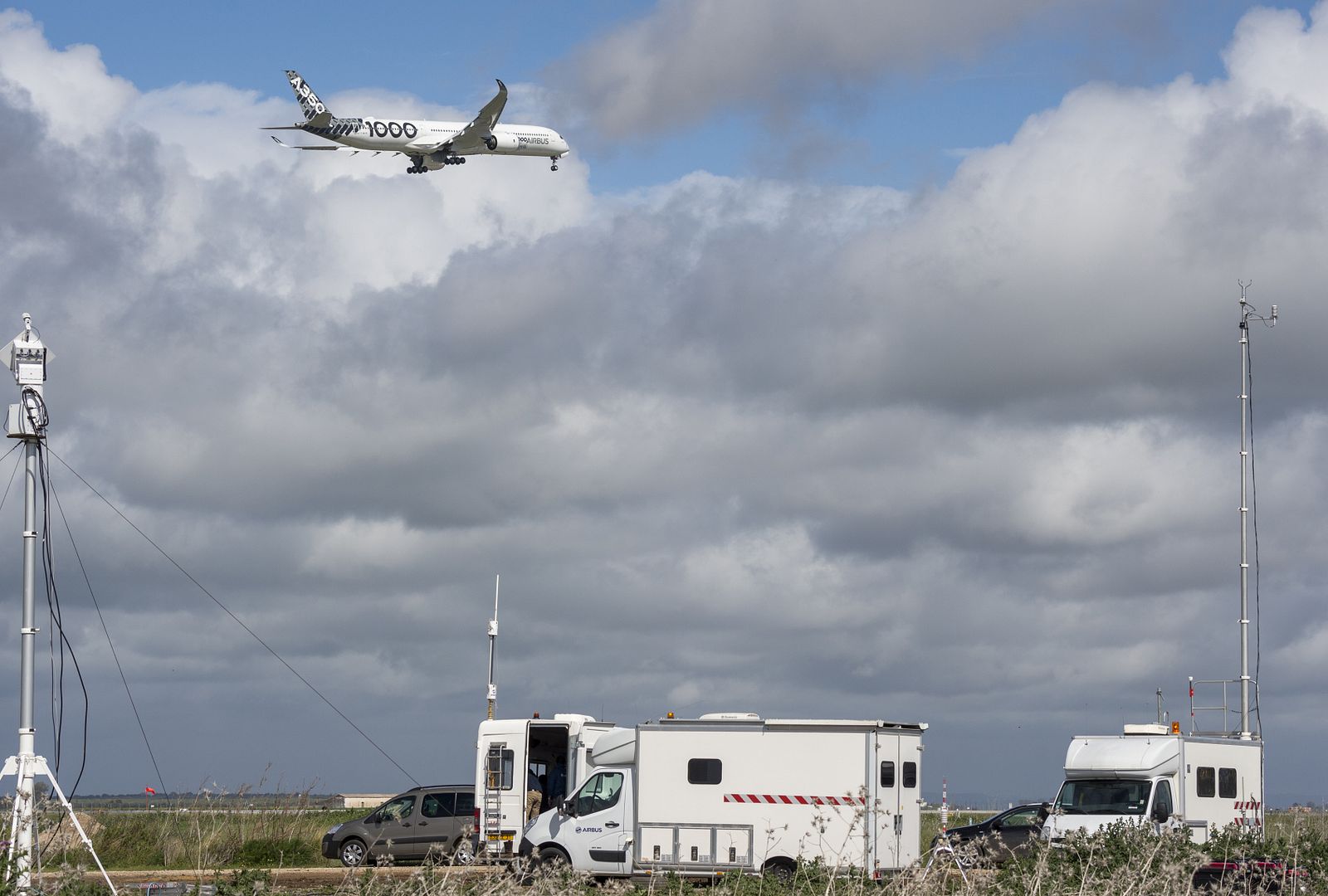
-
 Main AdminA U.S. Marine Corps CH-53E Super Stallion assigned to Marine Aviation Weapons and Tactics Squadron One (MAWTS-1) lifts a Humvee during a CH-53 tactics exercise at Auxiliary Airfield II, Yuma, Ariz., April 7, 2017. The exercise is part of Weapons and Tactics Instructor Course (WTI) 2-17, a seven-week training event hosted by MAWTS-1 cadre. MAWTS-1 provides standardized tactical training and certification of unit instructor qualifications to support Marine Aviation Training and Readiness and assists in developing and employing aviation weapons and tactics. (U.S. Marine Corps photo by Lance Cpl. Michaela R. Gregory)
Main AdminA U.S. Marine Corps CH-53E Super Stallion assigned to Marine Aviation Weapons and Tactics Squadron One (MAWTS-1) lifts a Humvee during a CH-53 tactics exercise at Auxiliary Airfield II, Yuma, Ariz., April 7, 2017. The exercise is part of Weapons and Tactics Instructor Course (WTI) 2-17, a seven-week training event hosted by MAWTS-1 cadre. MAWTS-1 provides standardized tactical training and certification of unit instructor qualifications to support Marine Aviation Training and Readiness and assists in developing and employing aviation weapons and tactics. (U.S. Marine Corps photo by Lance Cpl. Michaela R. Gregory)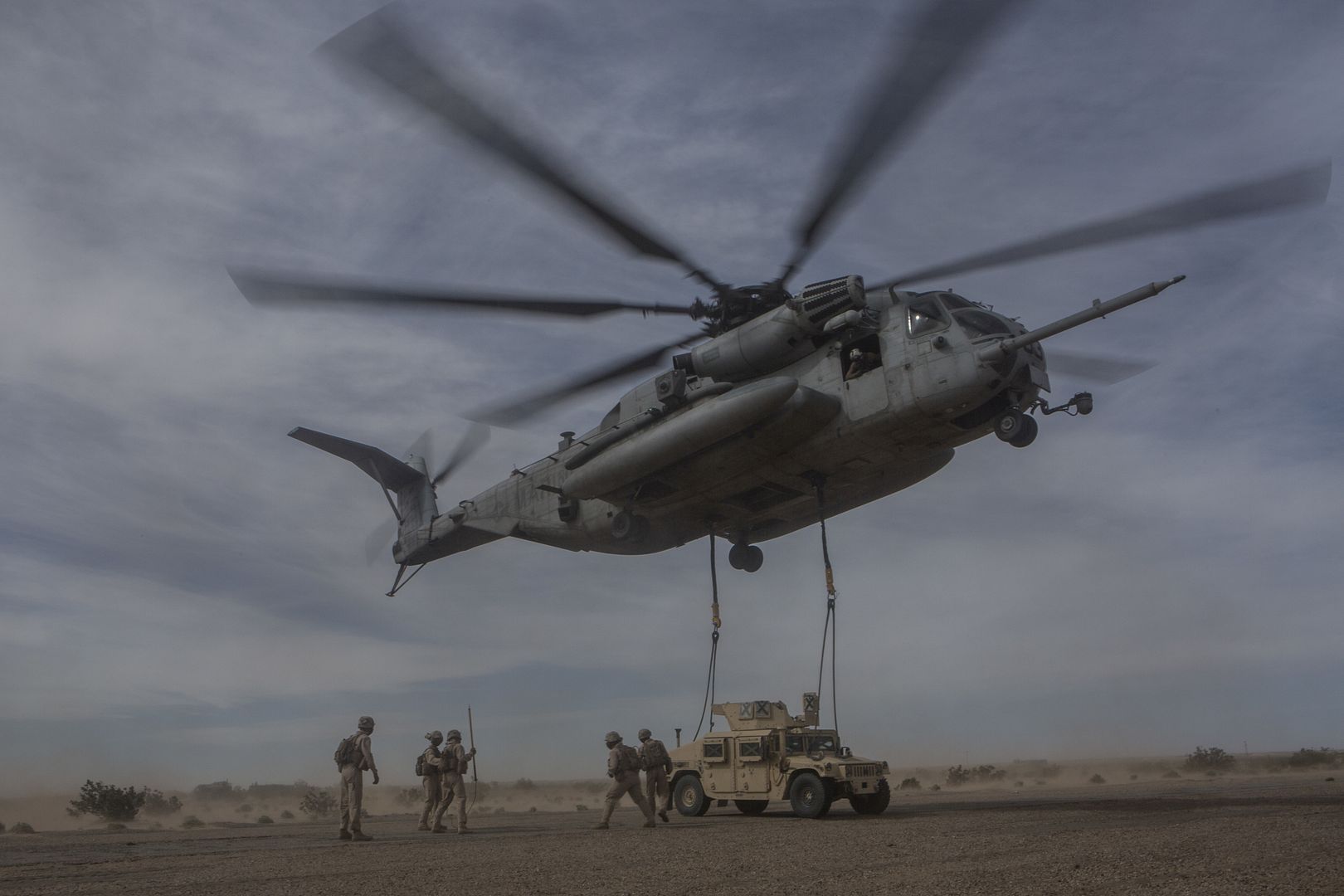
ARABIAN GULF (April 4, 2017) An F/A-18E Super Hornet assigned to the "Tomcatters" of Strike Fighter Squadron (VFA) 31 makes the 10,000th arrested landing aboard the aircraft carrier USS George H.W. Bush (CVN 77). The ship is deployed in the U.S. 5th Fleet area of operations in support of maritime security operations designed to reassure allies and partners, and preserve the freedom of navigation and the free flow of commerce in the region. (U.S. Navy photo by Mass Communication Specialist 3rd Class Christopher Gaines/Released)
SOUTH CHINA SEA (April 6, 2017) Aviation Boatswain?s Mate (Handling) 2nd Class Morgan Jackson, from Los Angeles, gives the signal for an AV-8B Harrier, assigned to the Ridge Runners of Marine Medium Tiltrotor Squadron (VMM) 163, to take off from flight deck of the amphibious assault ship USS Makin Island (LHD . Makin Island, the flagship for the Makin Island Amphibious Ready Group, with the embarked 11th Marine Expeditionary Unit, is operating in the Indo-Asia-Pacific region to enhance amphibious capability with regional partners and to serve as a ready-response force for any type of contingency. (U.S. Navy photo by Mass Communication Specialist 3rd Class Devin M. Langer)
. Makin Island, the flagship for the Makin Island Amphibious Ready Group, with the embarked 11th Marine Expeditionary Unit, is operating in the Indo-Asia-Pacific region to enhance amphibious capability with regional partners and to serve as a ready-response force for any type of contingency. (U.S. Navy photo by Mass Communication Specialist 3rd Class Devin M. Langer) 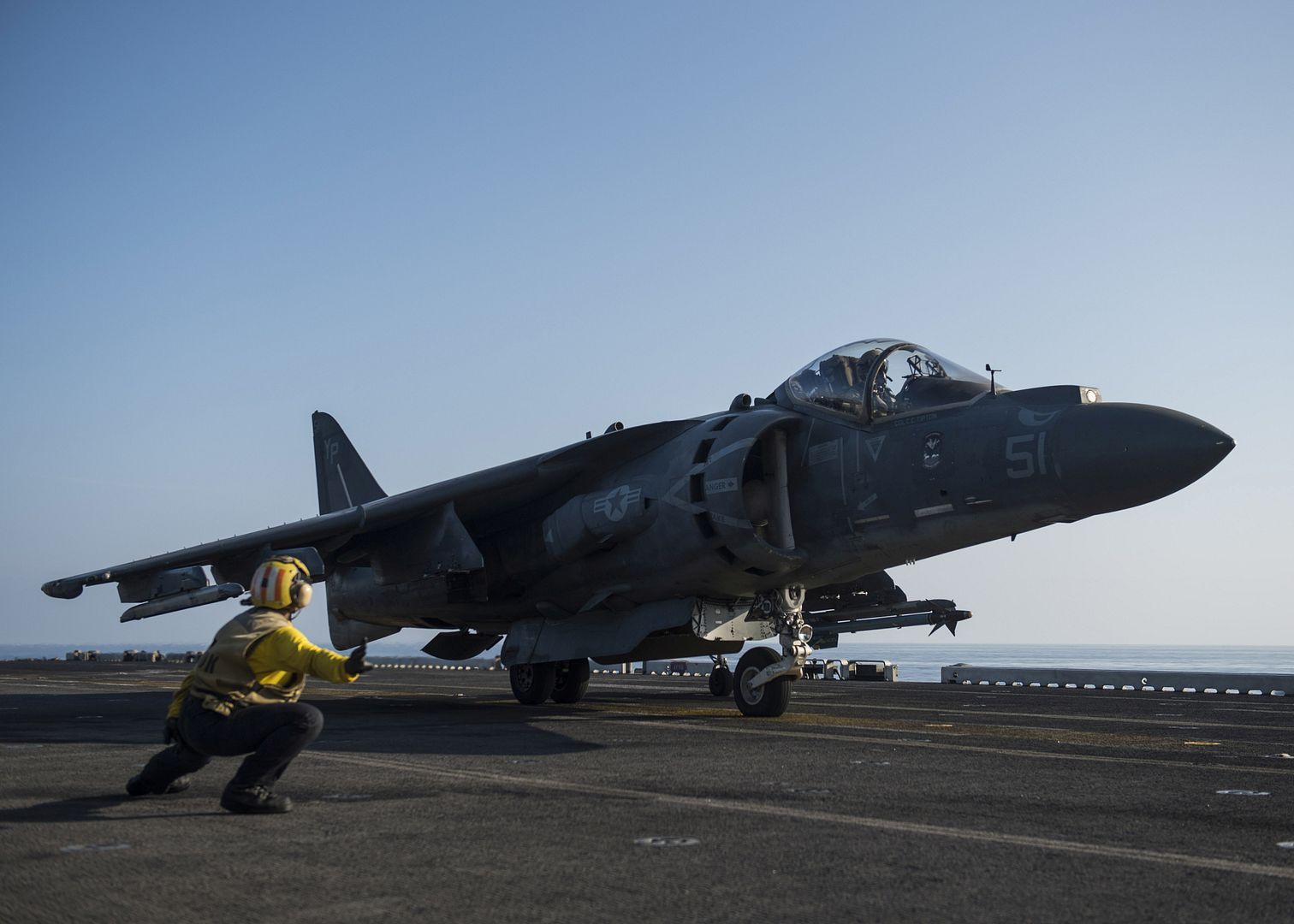
ARABIAN GULF (April 4, 2017) An F/A-18F Super Hornet assigned to the "Blacklions" of Strike Fighter Squadron (VFA) 213 prepares to land aboard the aircraft carrier USS George H.W. Bush (CVN 77). The ship is deployed in the U.S. 5th Fleet area of operations in support of maritime security operations designed to reassure allies and partners, and preserve the freedom of navigation and the free flow of commerce in the region. (U.S. Navy photo by Mass Communication Specialist 3rd Class Christopher Gaines/Released)
ATLANTIC OCEAN (April 2, 2017) An F/A-18F Super Hornet assigned to the Fighting Swordsmen of Strike Fighter Squadron (VFA) 32 launches from the aircraft carrier USS Dwight D. Eisenhower (CVN 69) (Ike). Ike and its carrier strike group are underway conducting a sustainment exercise in support of the Optimized Fleet Response Plan (OFRP). (U.S. Navy photo by Mass Communication Specialist 3rd Class Nathan T. Beard)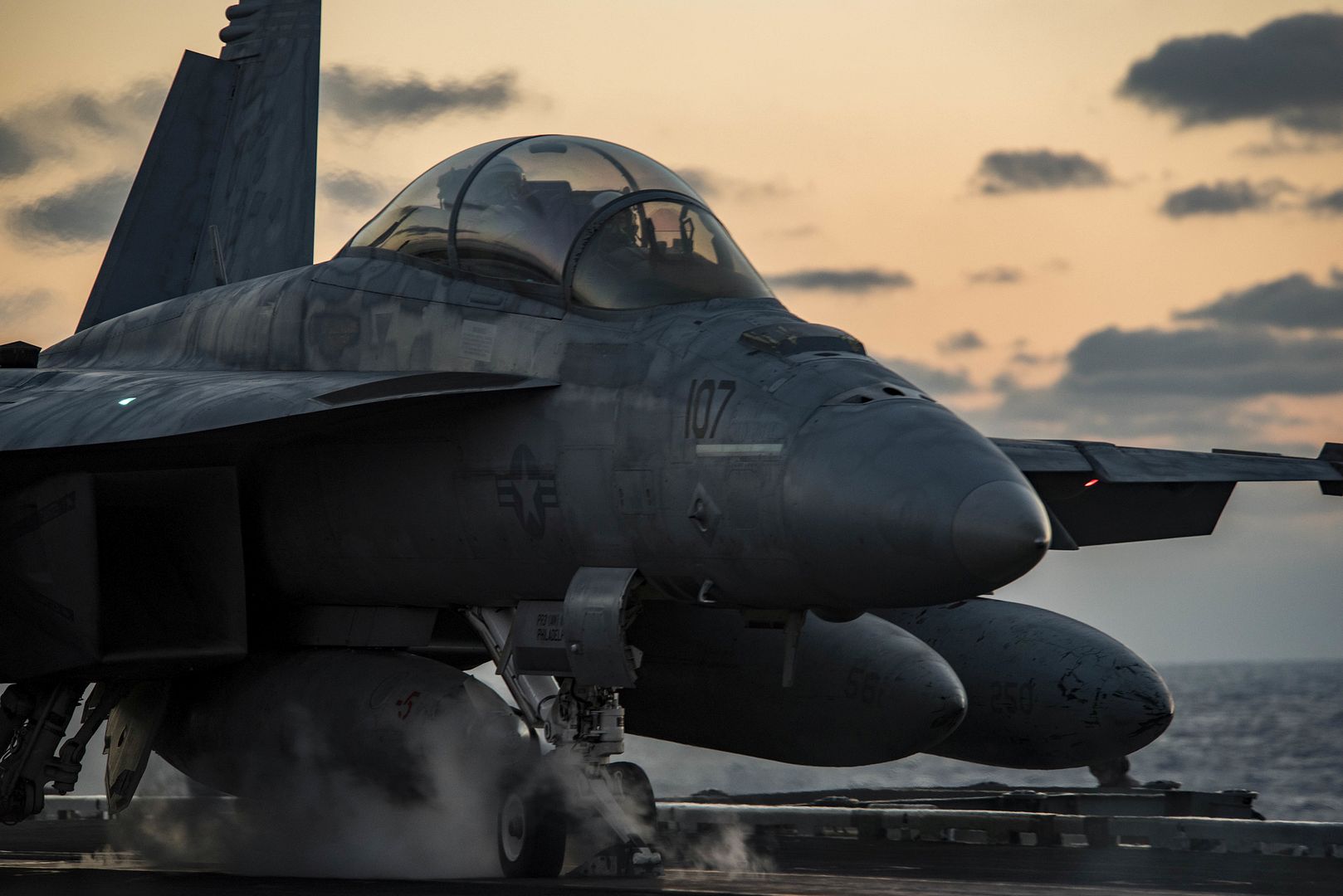
Post a reply
- Go to Next topic
- Go to Welcome
- Go to Introduce Yourself
- Go to General Discussion
- Go to Screenshots, Images and Videos
- Go to Off topic
- Go to Works in Progress
- Go to Skinning Tips / Tutorials
- Go to Skin Requests
- Go to IJAAF Library
- Go to Luftwaffe Library
- Go to RAF Library
- Go to USAAF / USN Library
- Go to Misc Library
- Go to The Ops Room
- Go to Made in Germany
- Go to Campaigns and Missions
- Go to Works in Progress
- Go to Juri's Air-Raid Shelter
- Go to Campaigns and Missions
- Go to Works in Progress
- Go to Skinpacks
- Go to External Projects Discussion
- Go to Books & Resources
